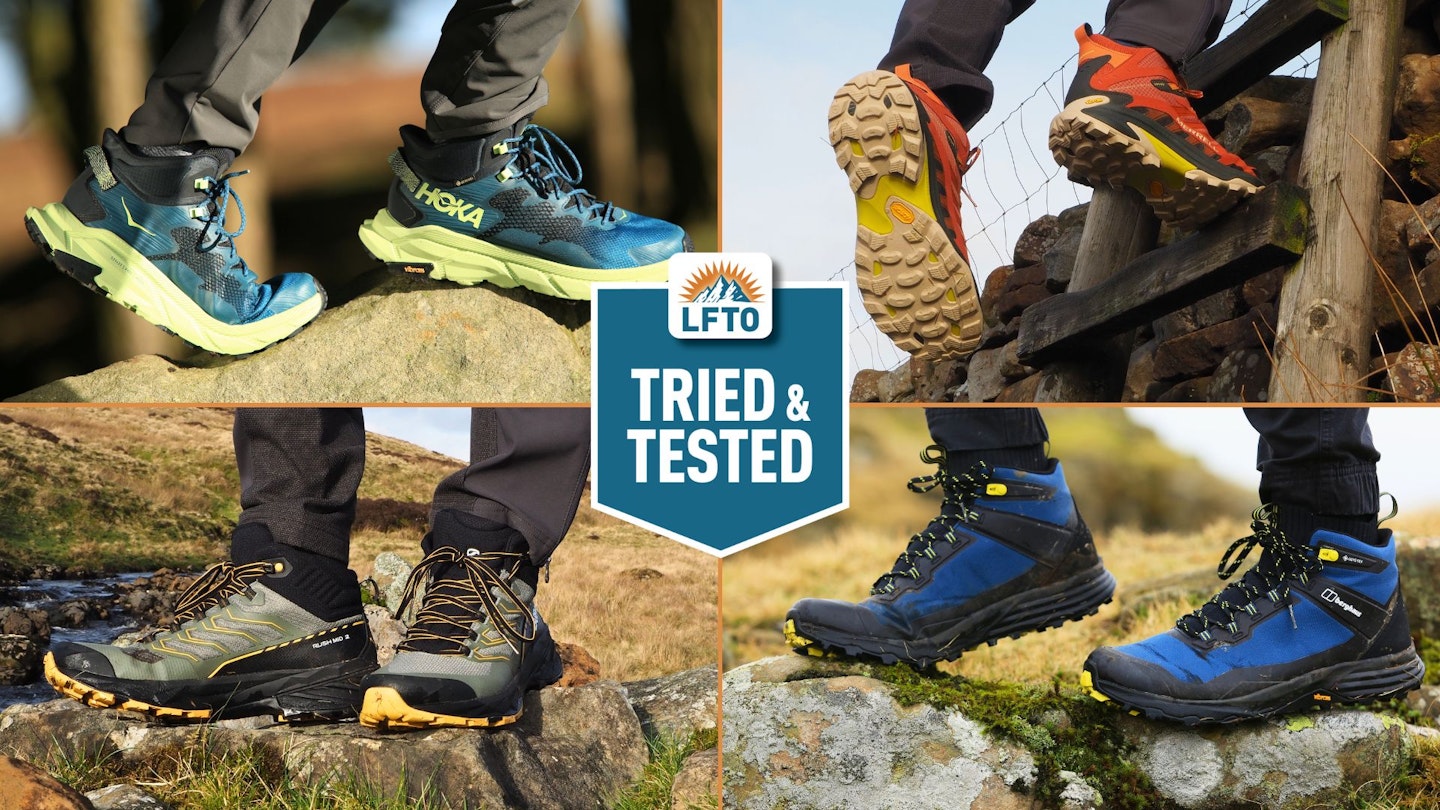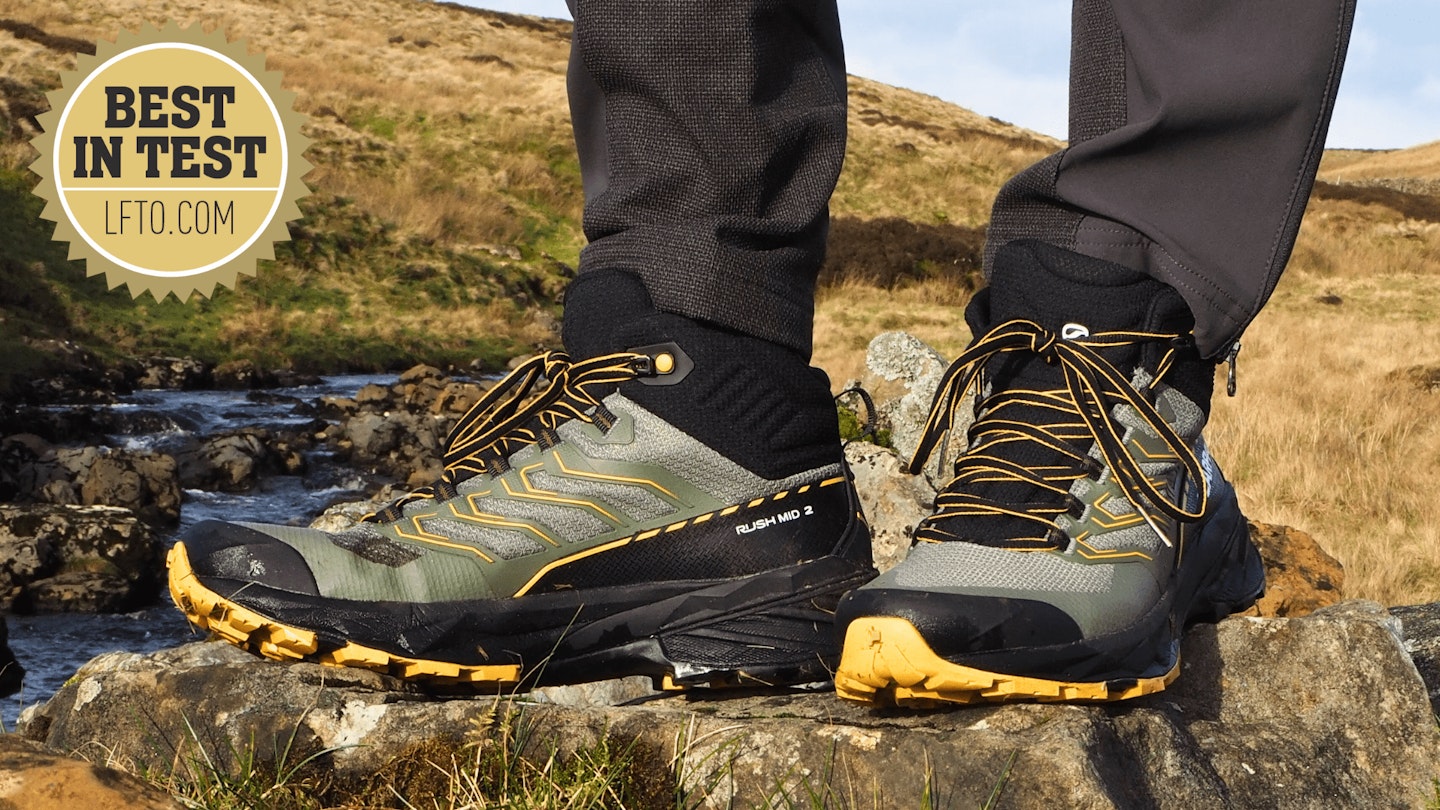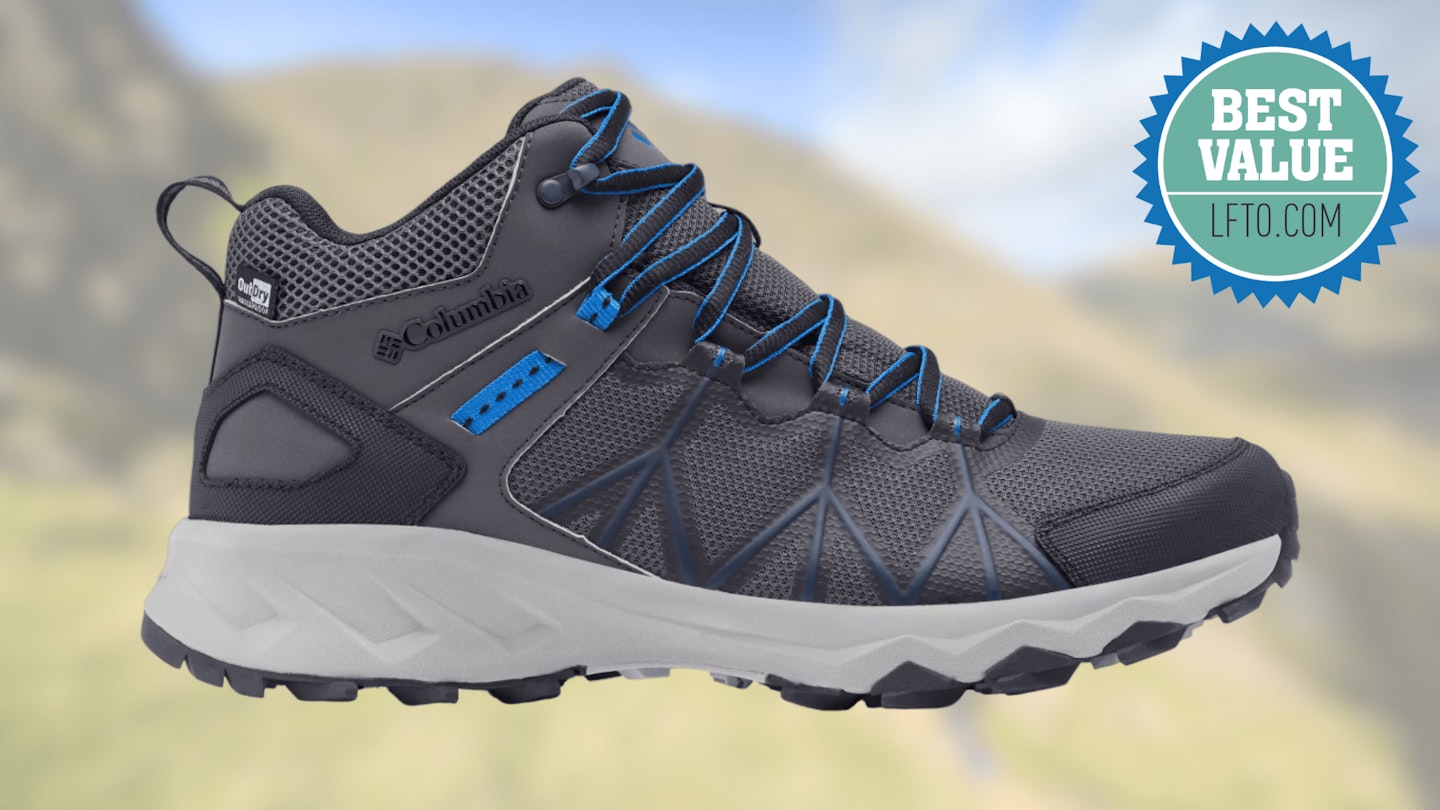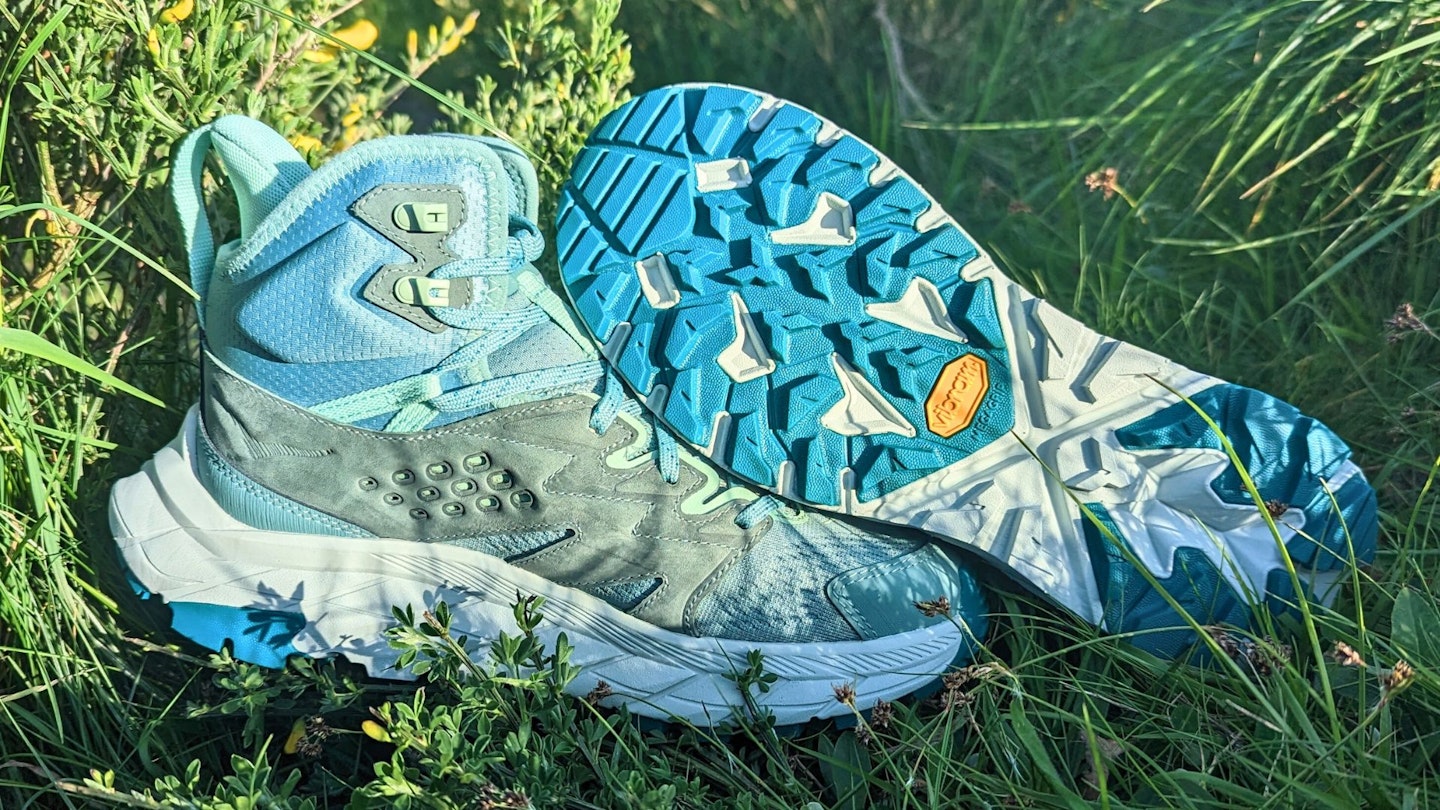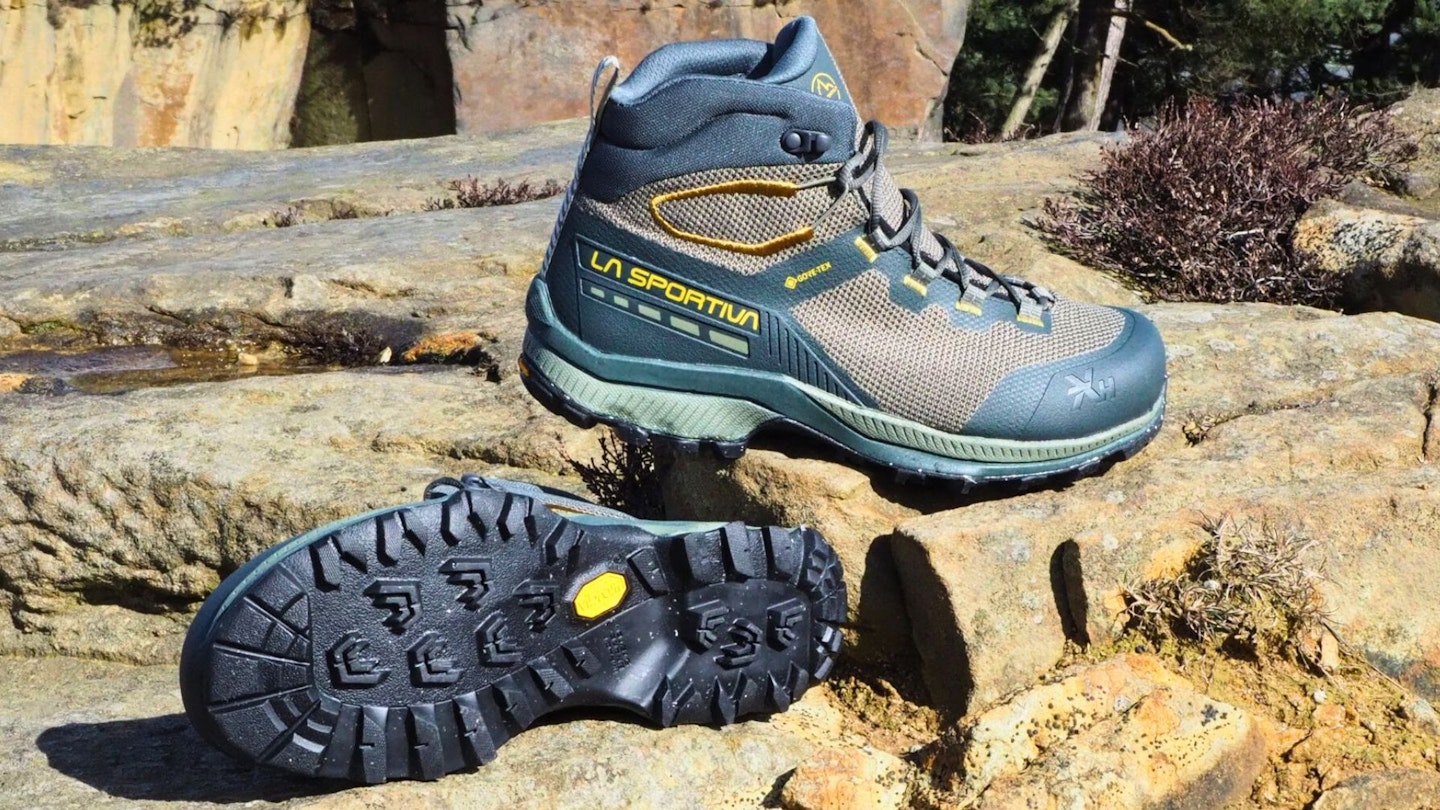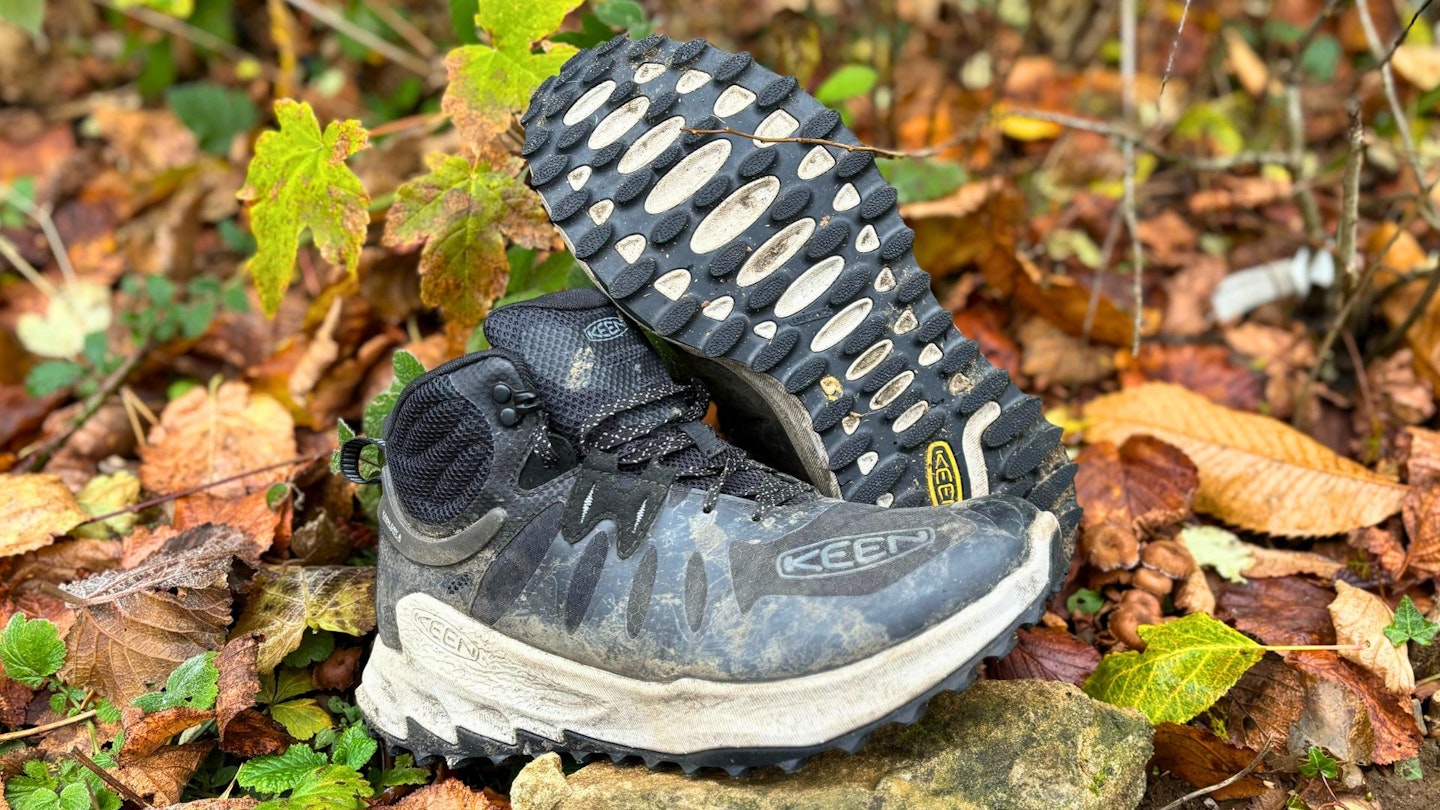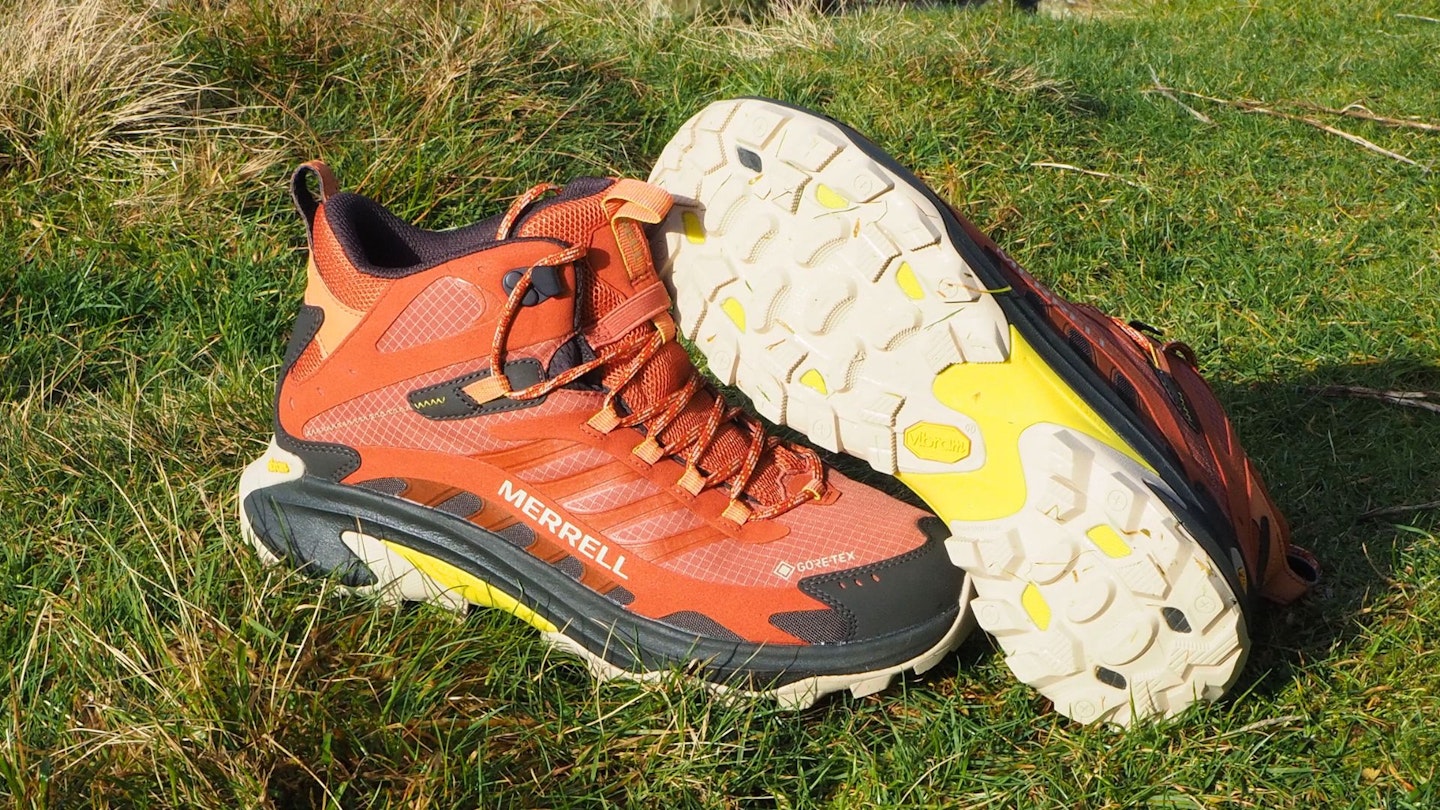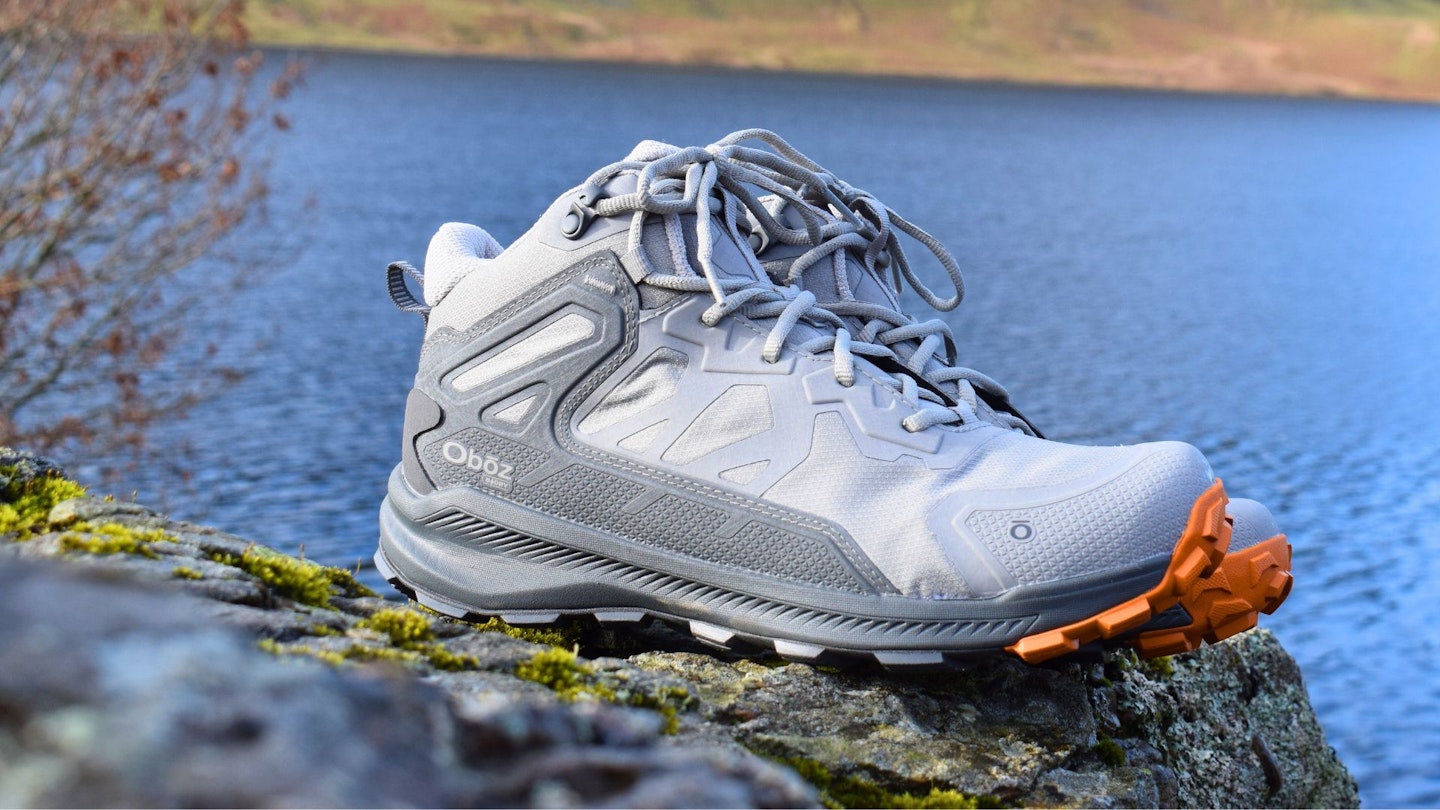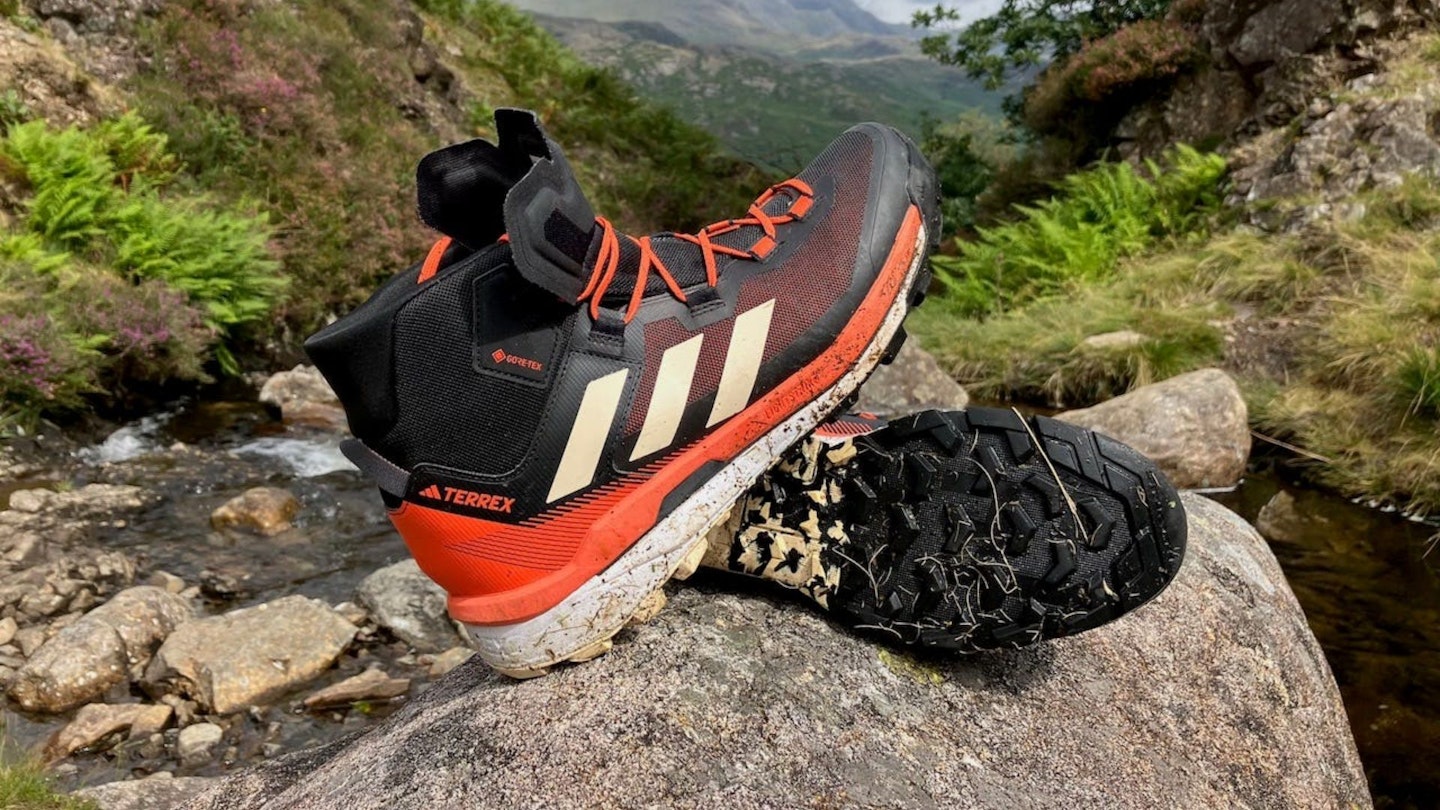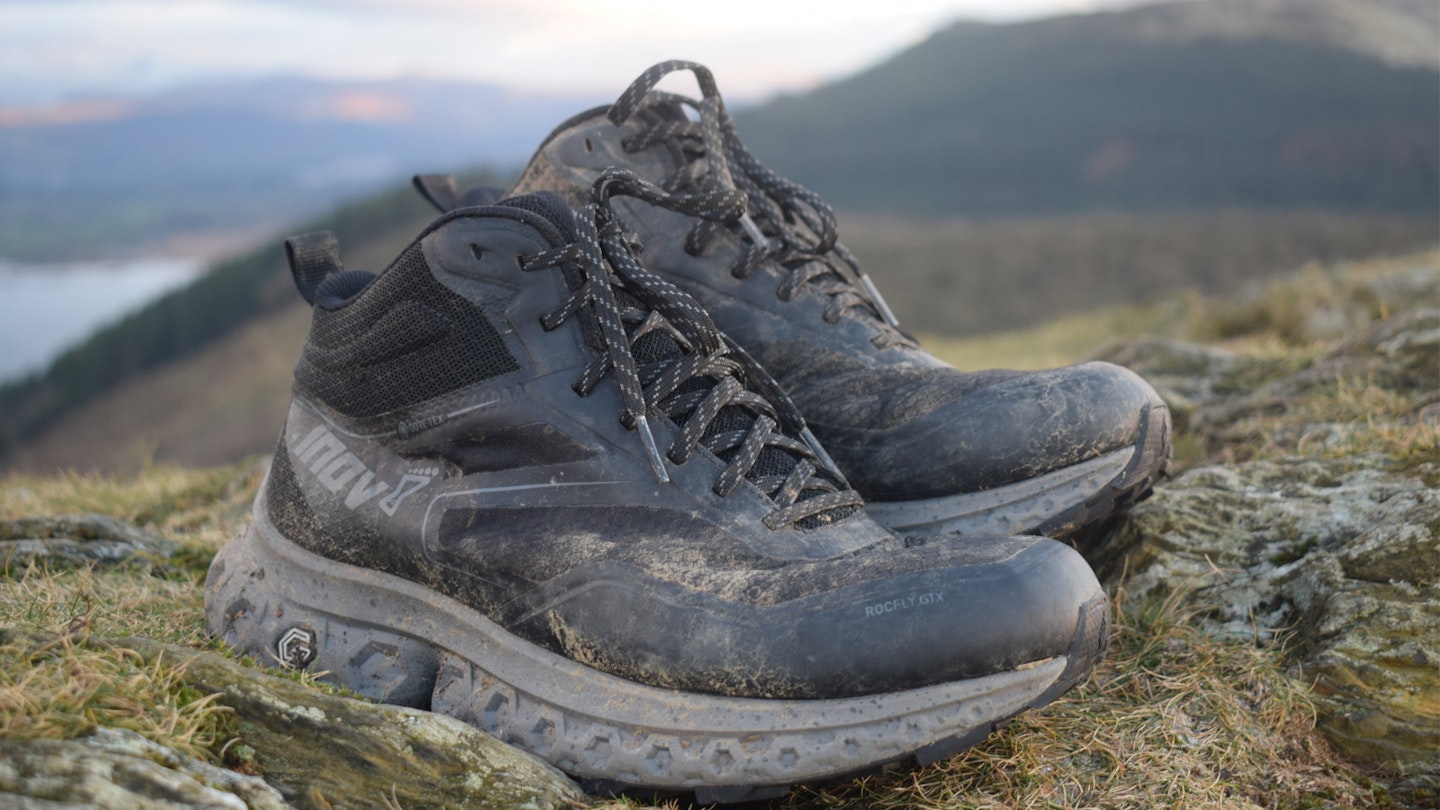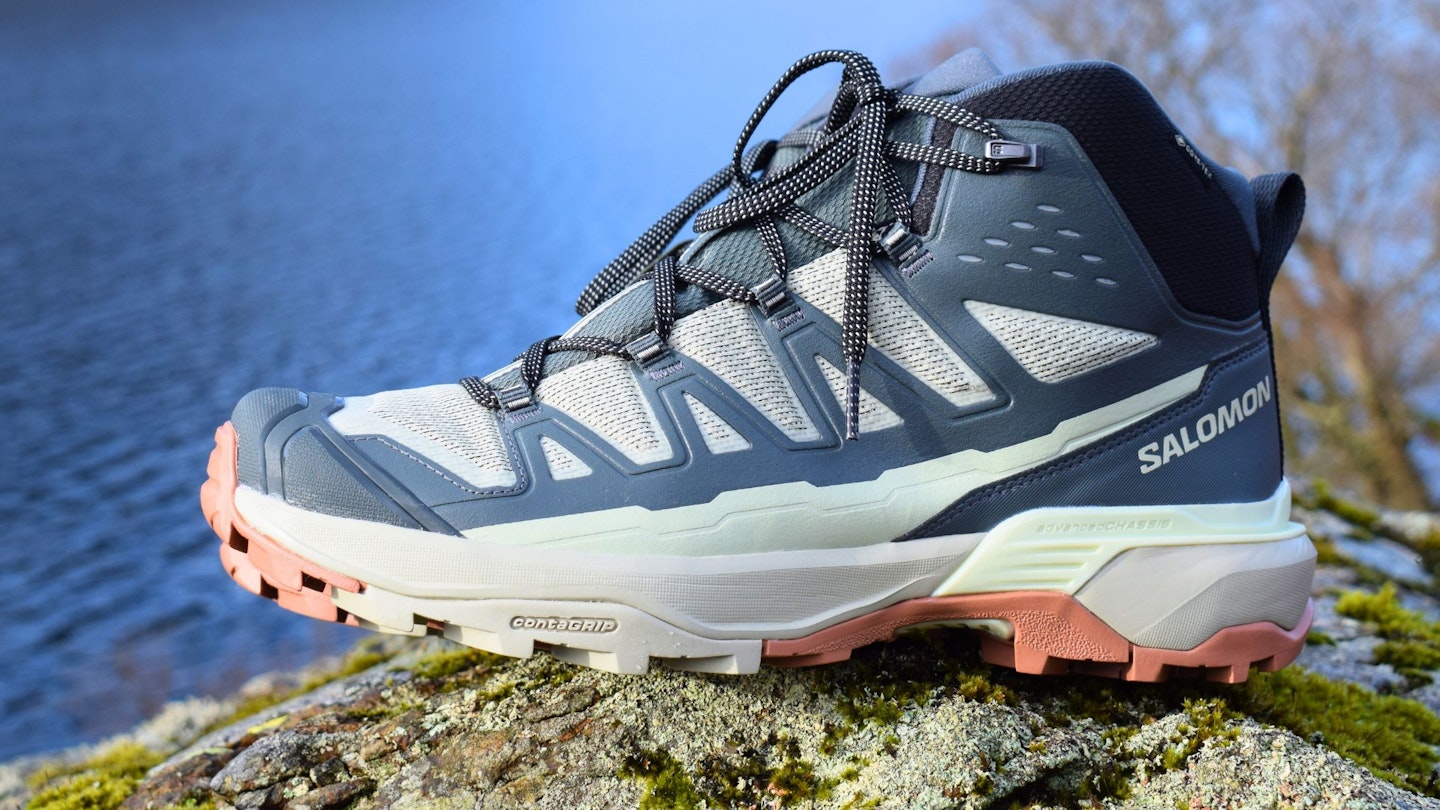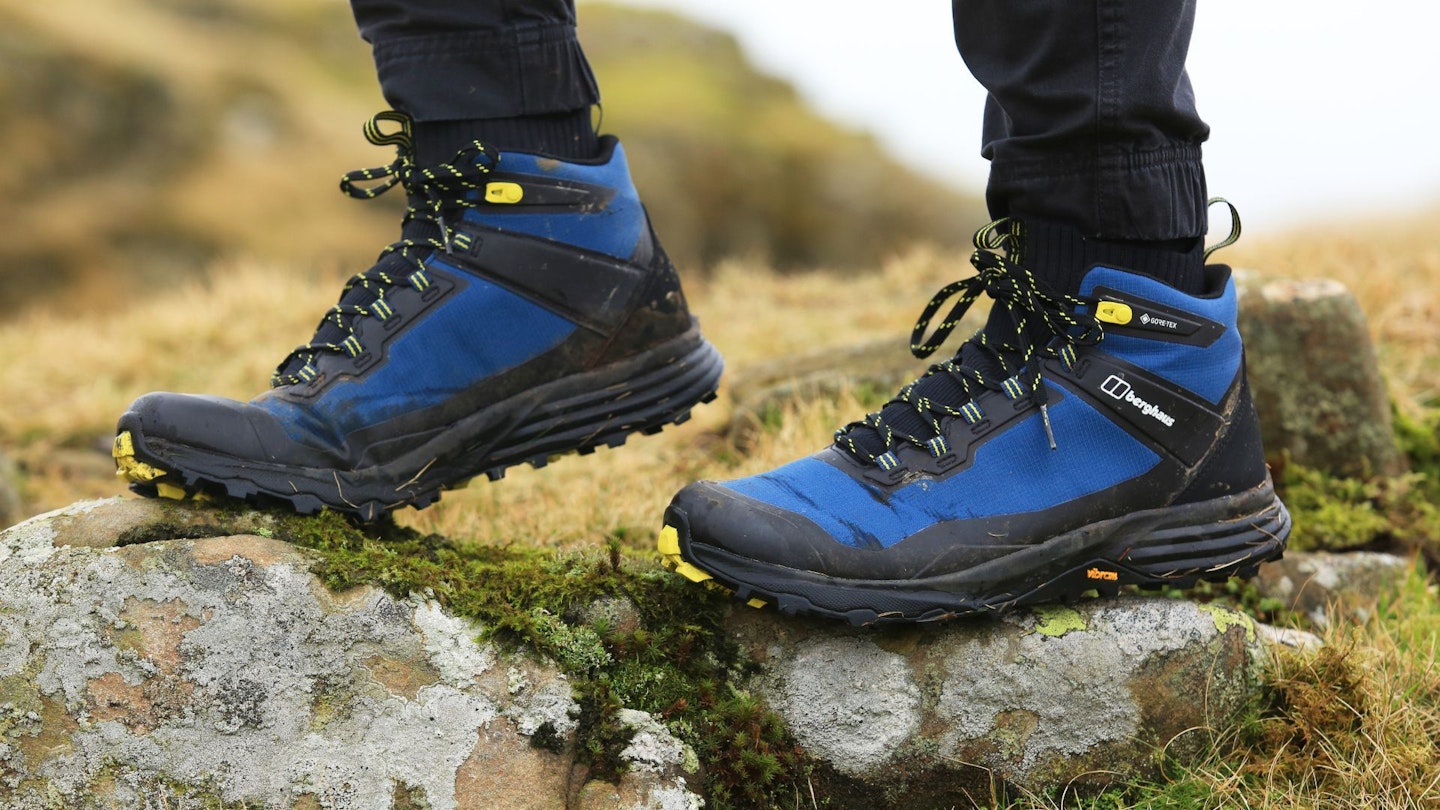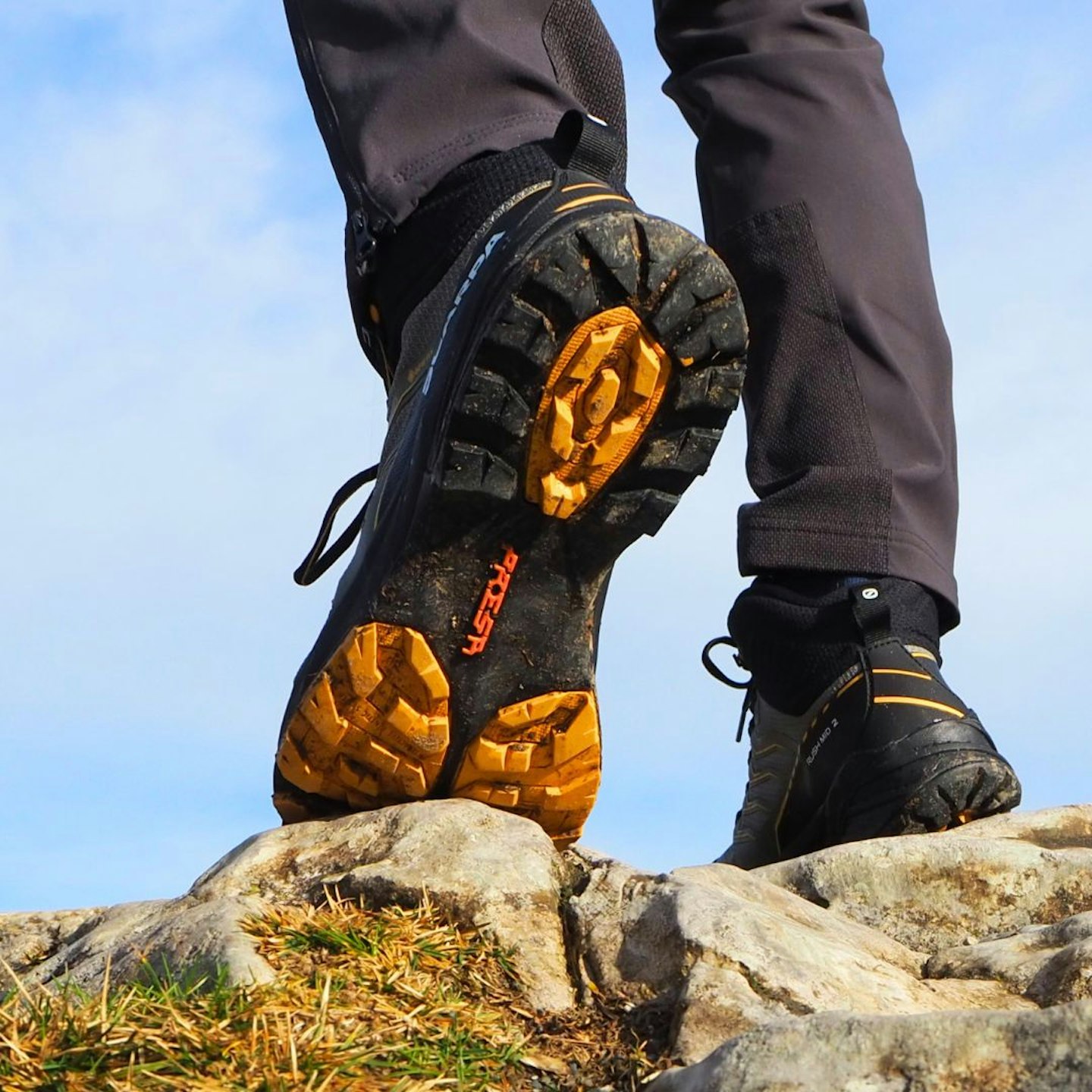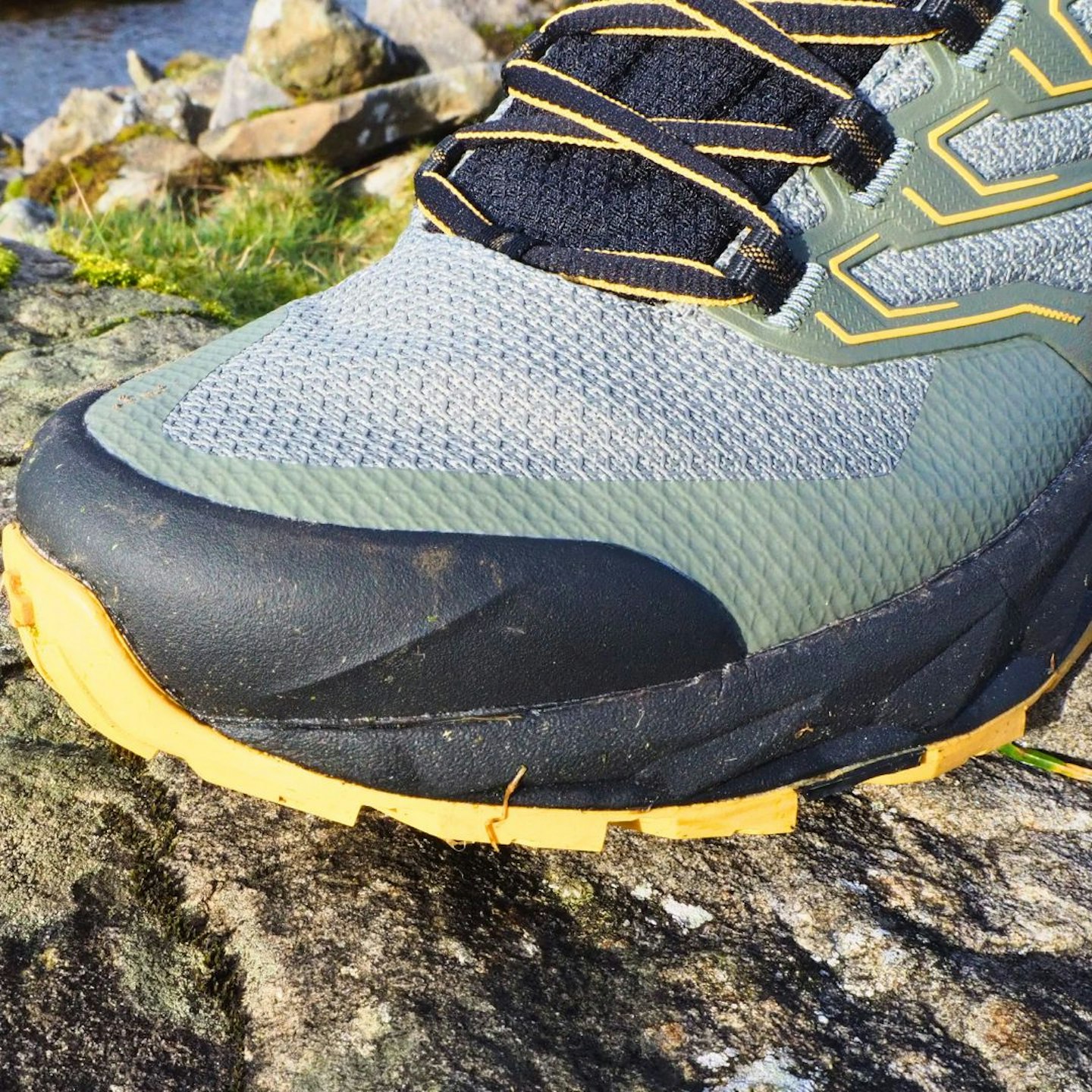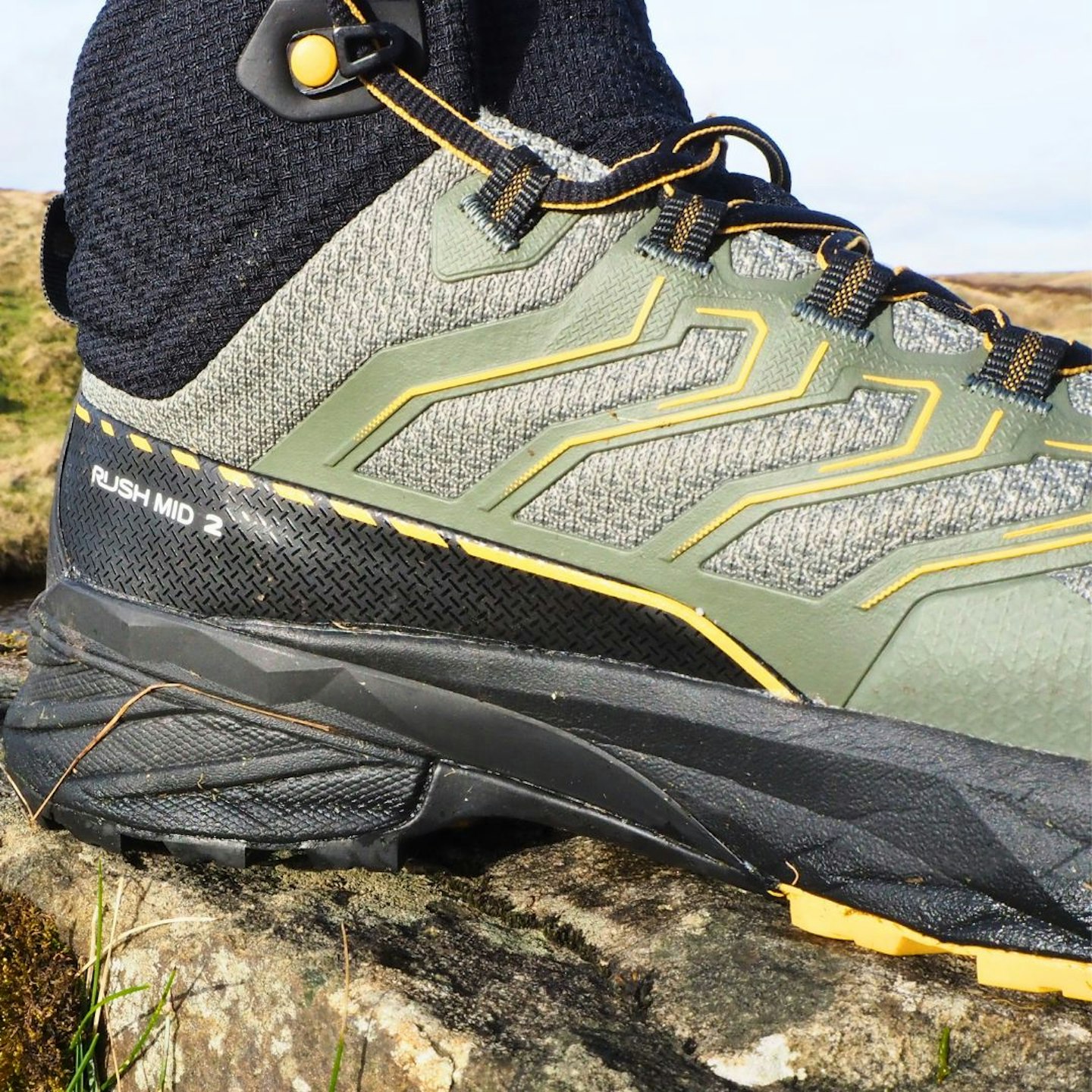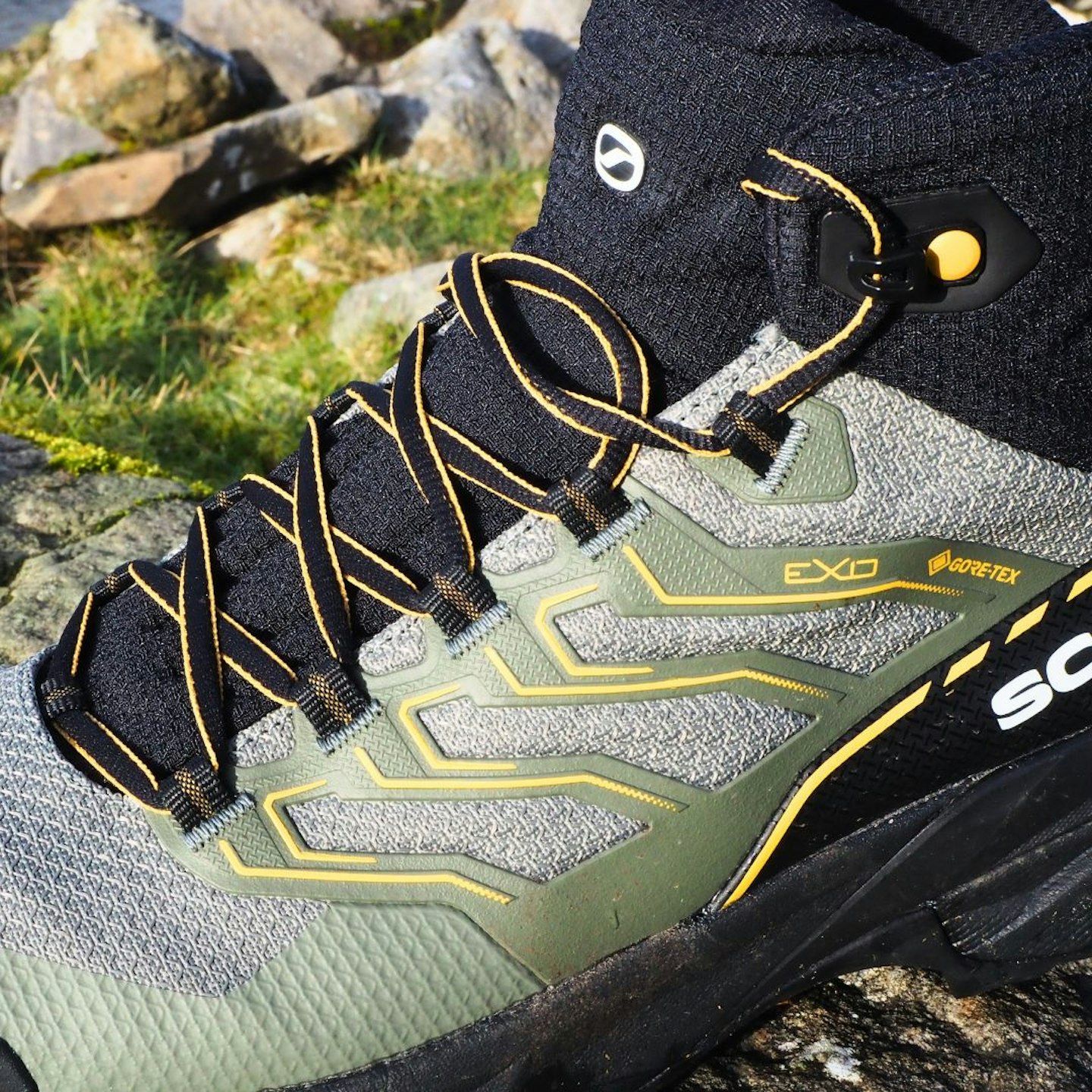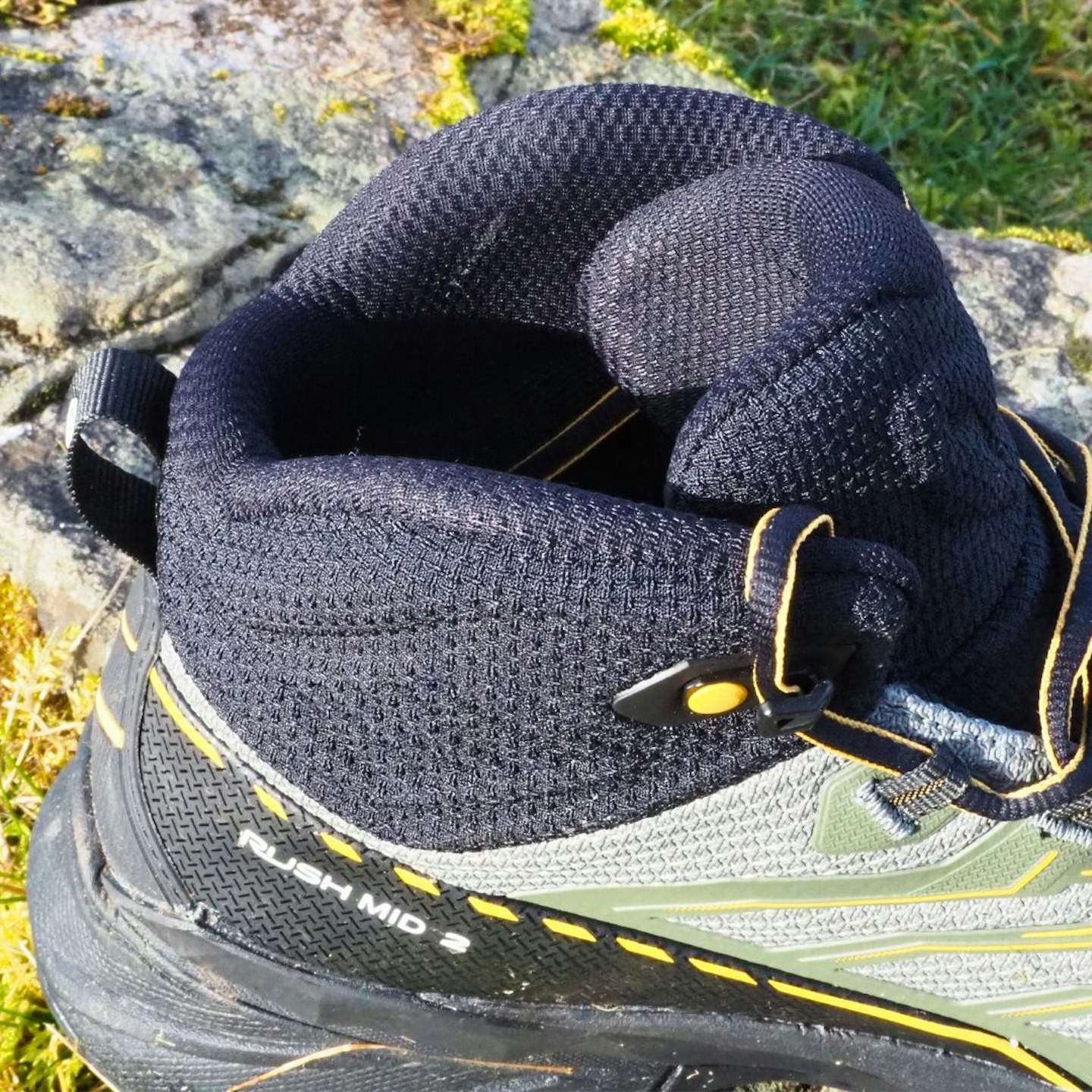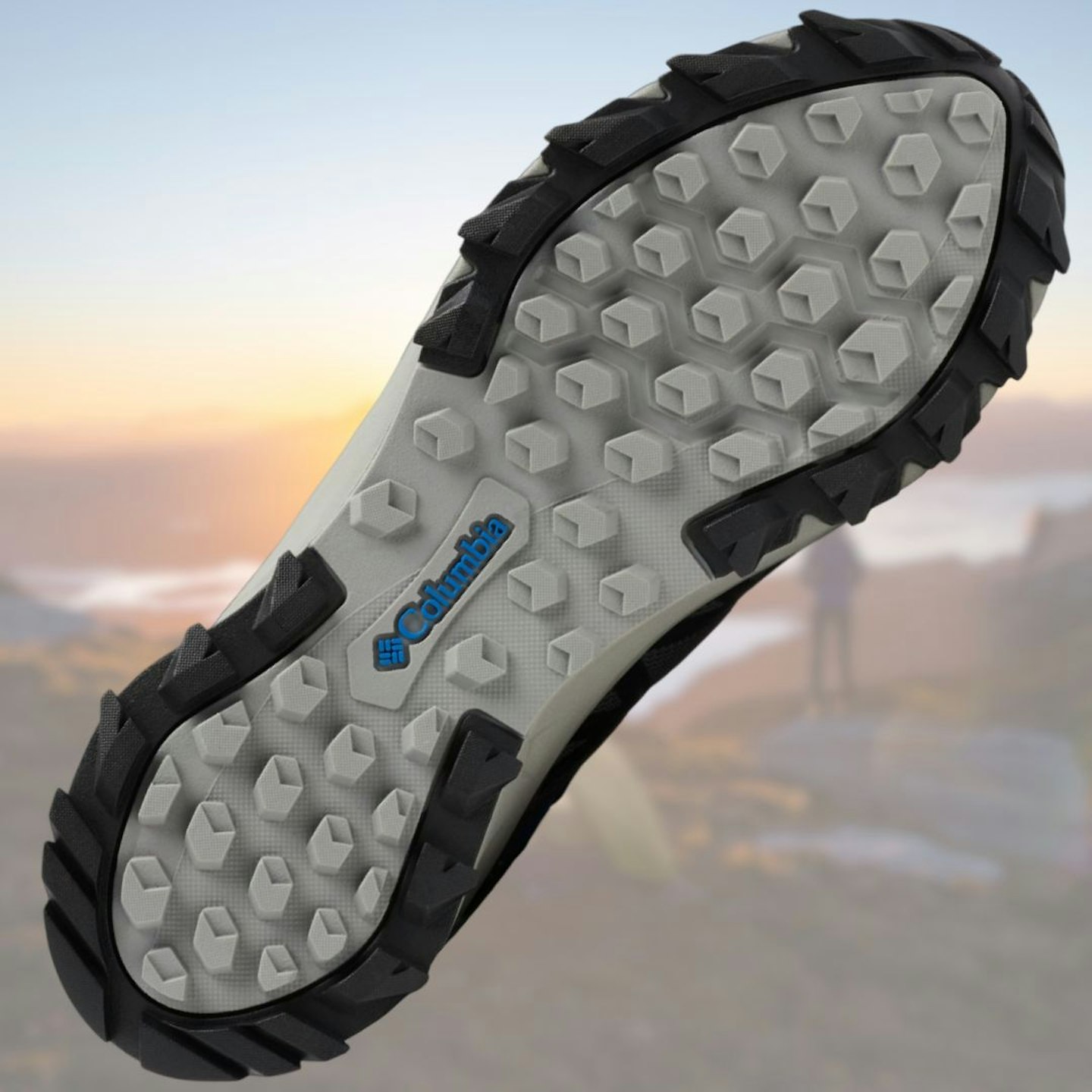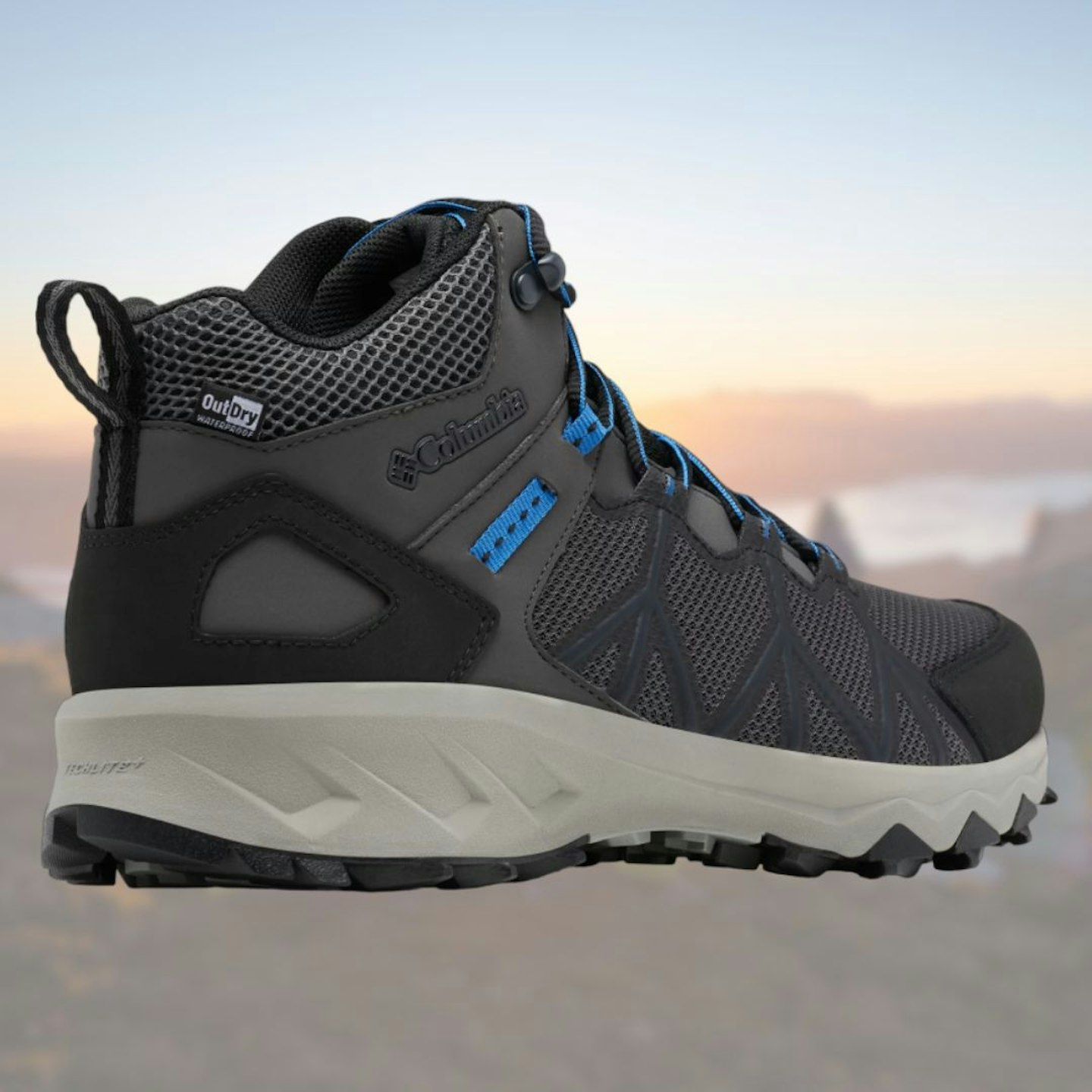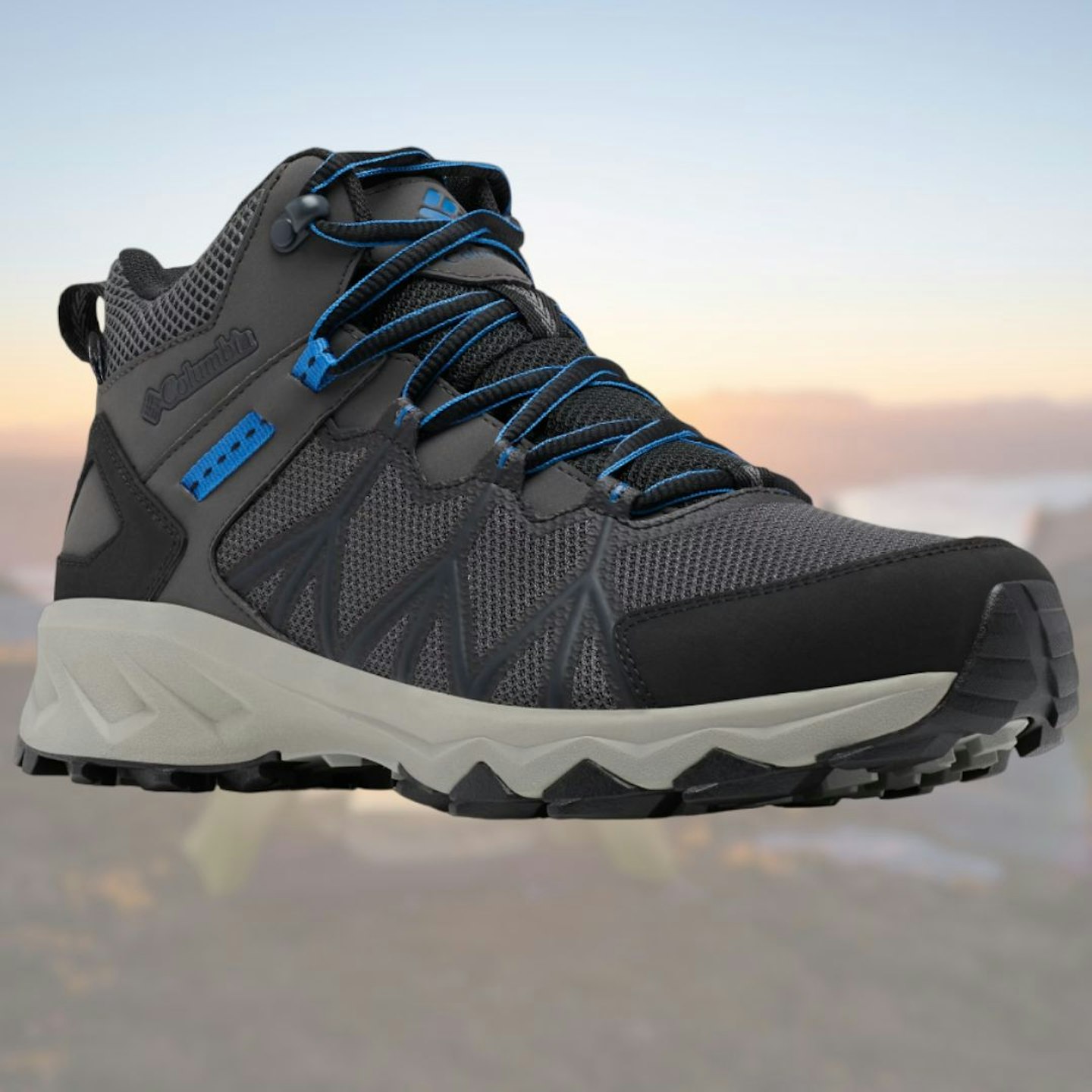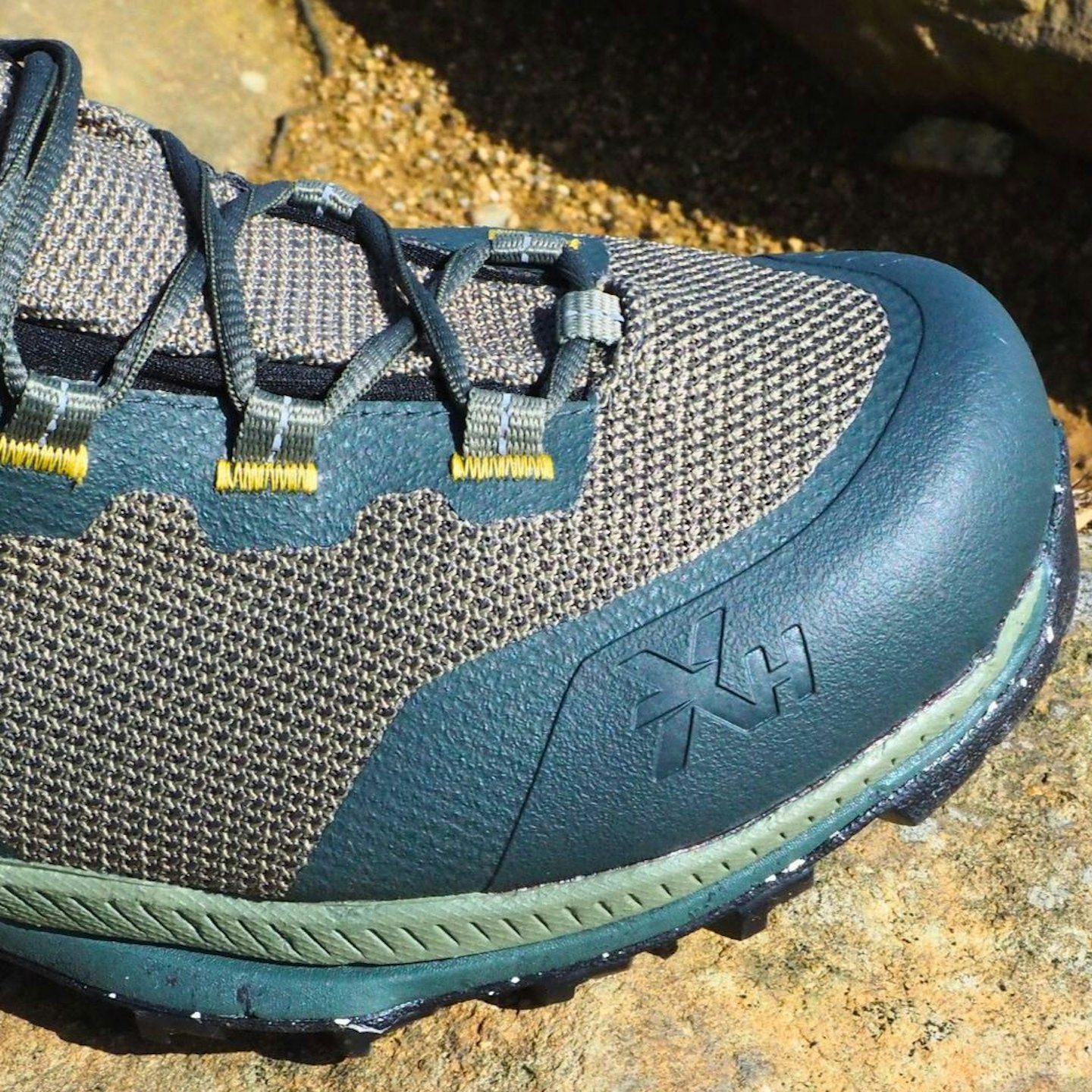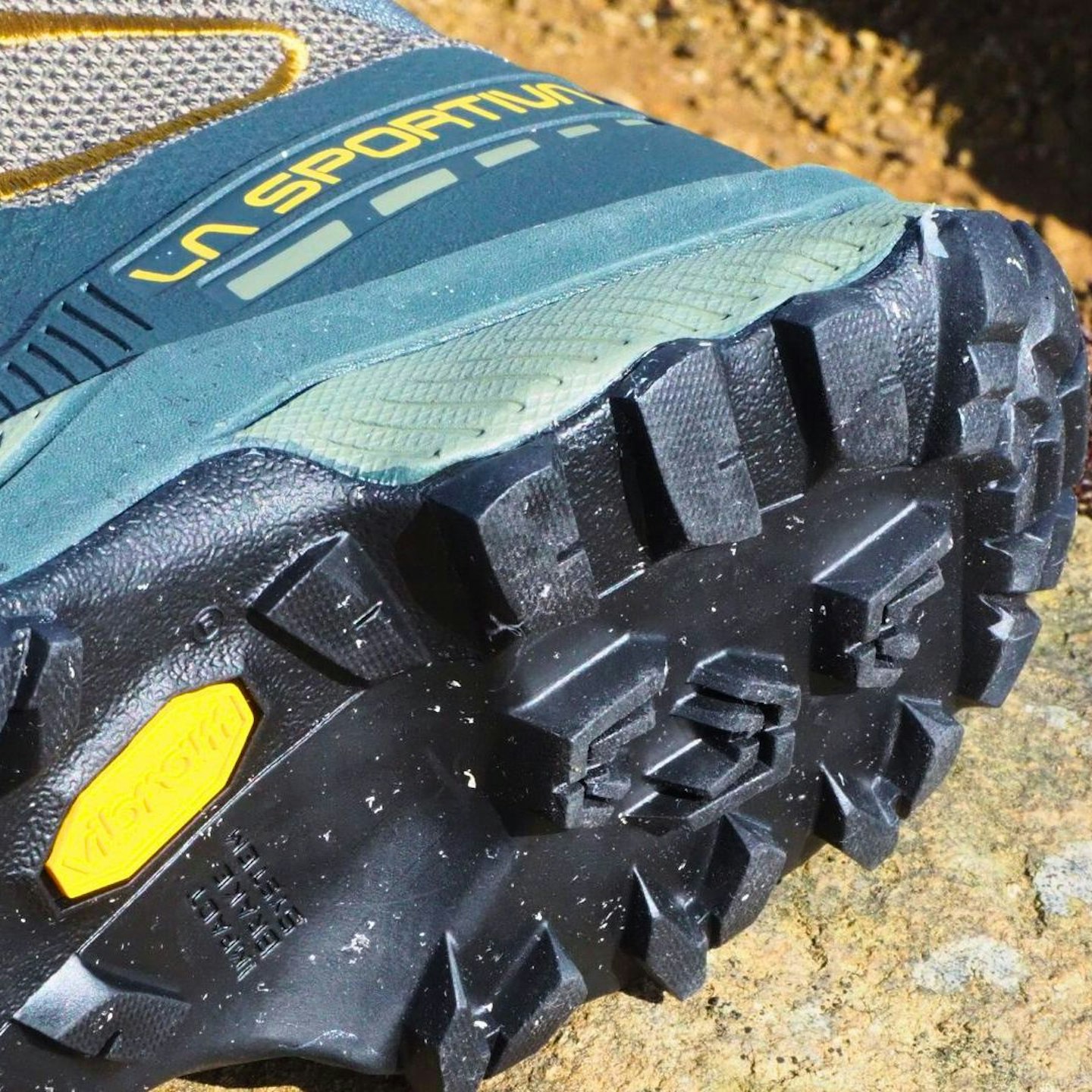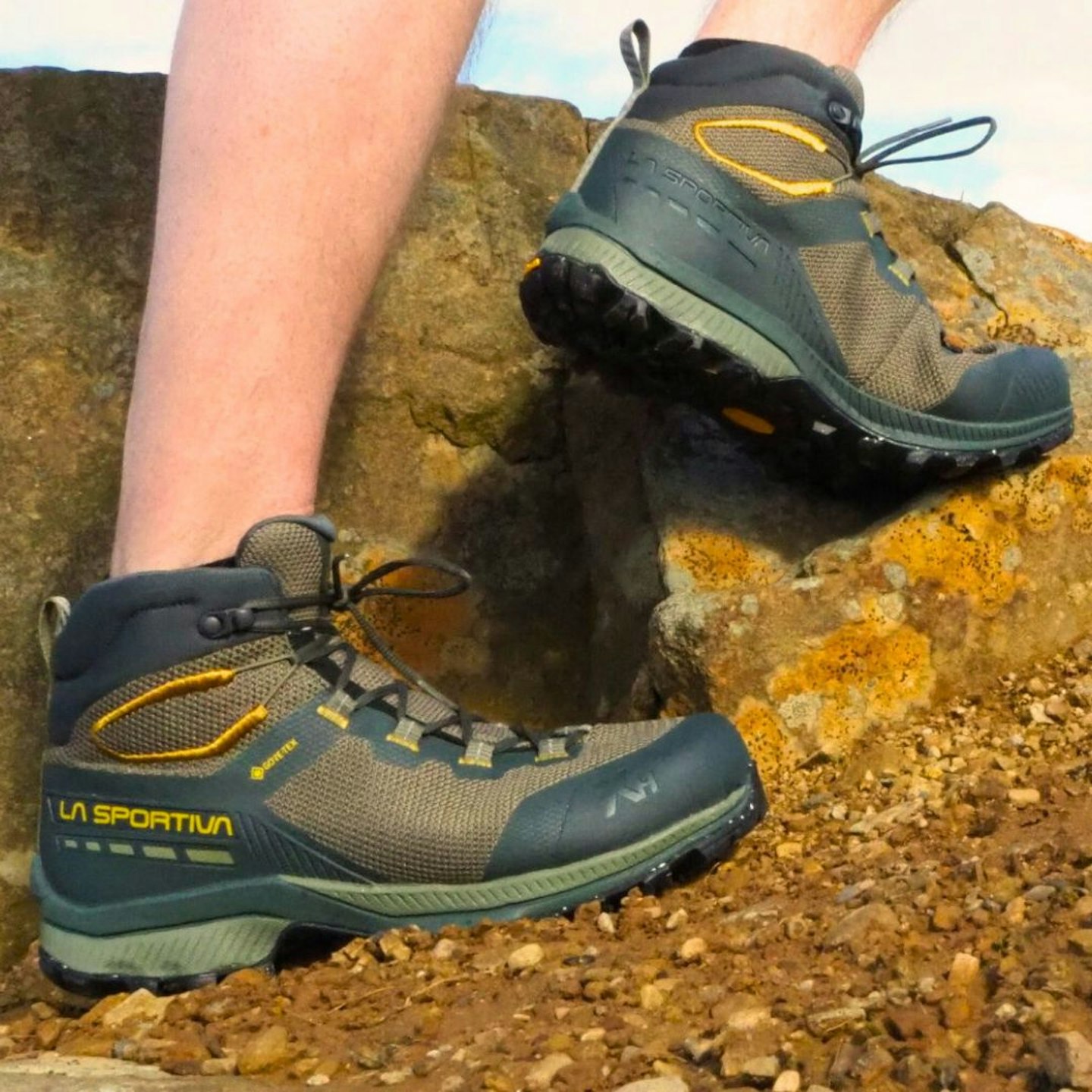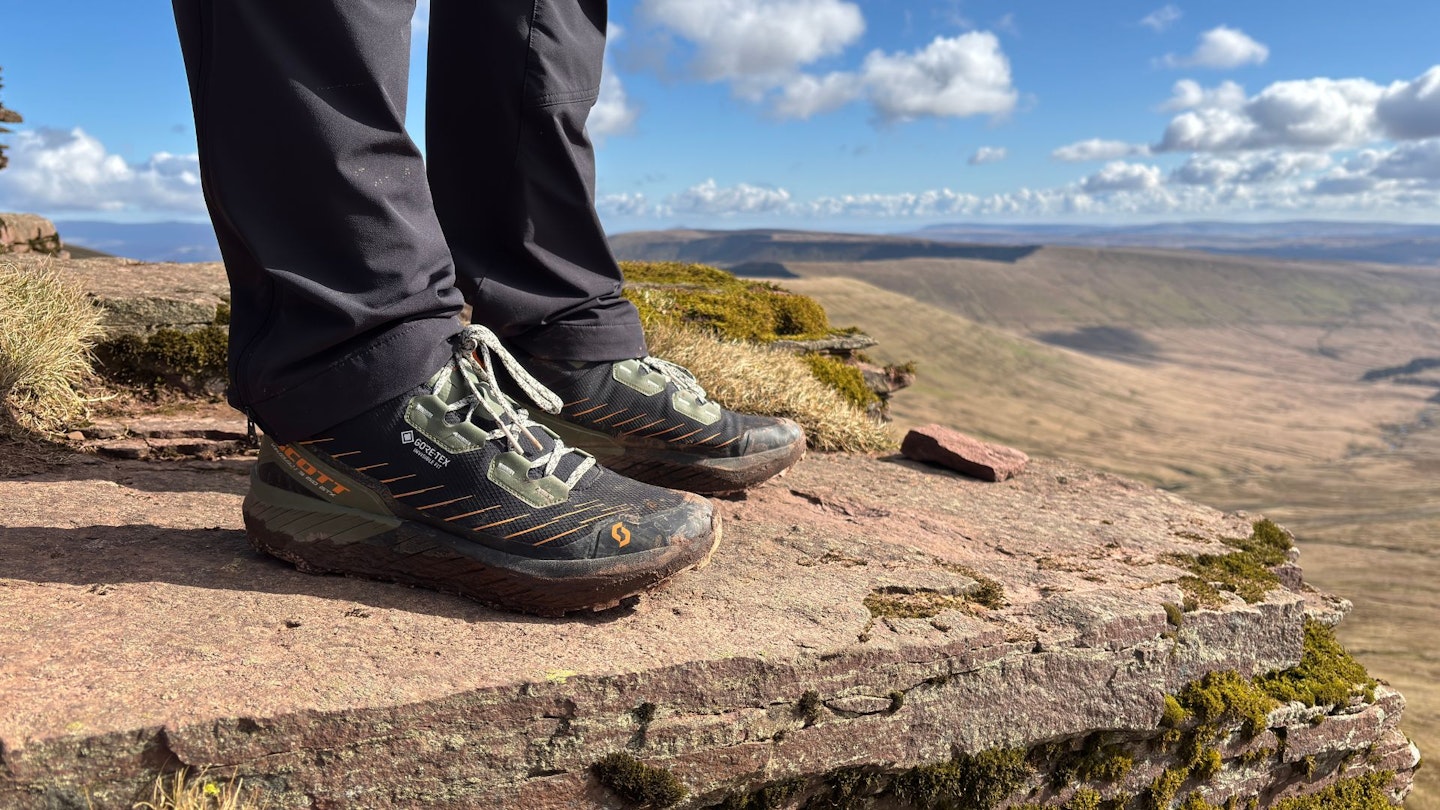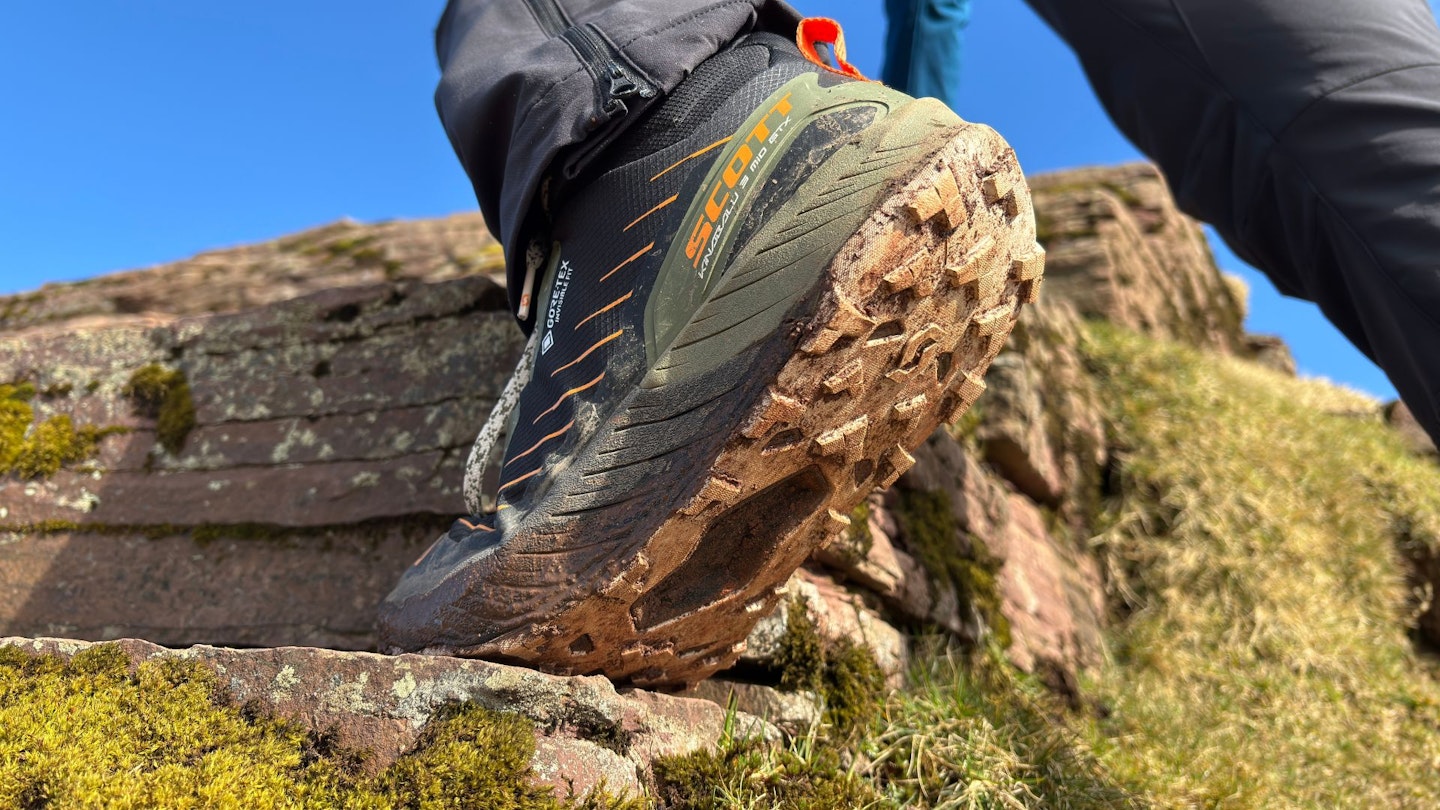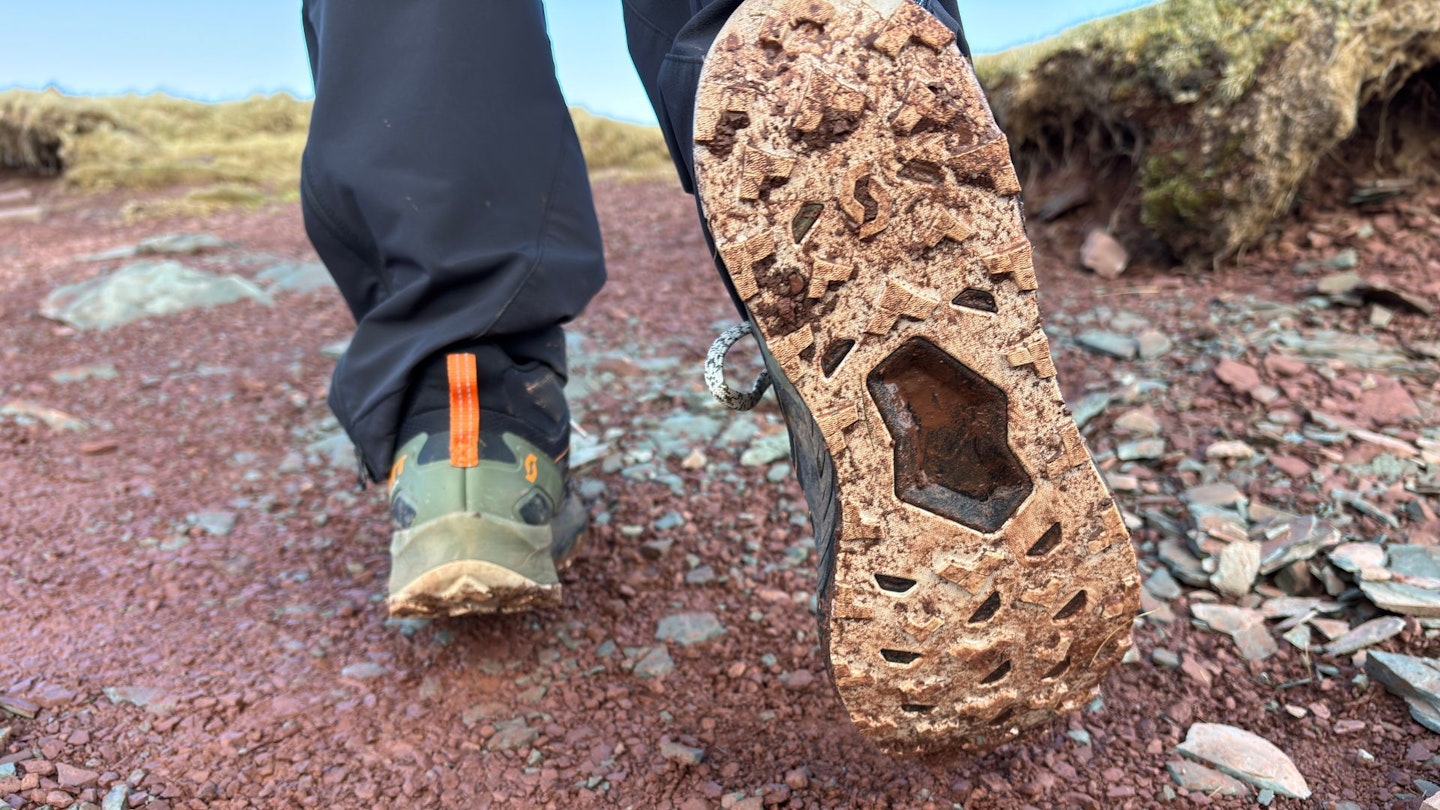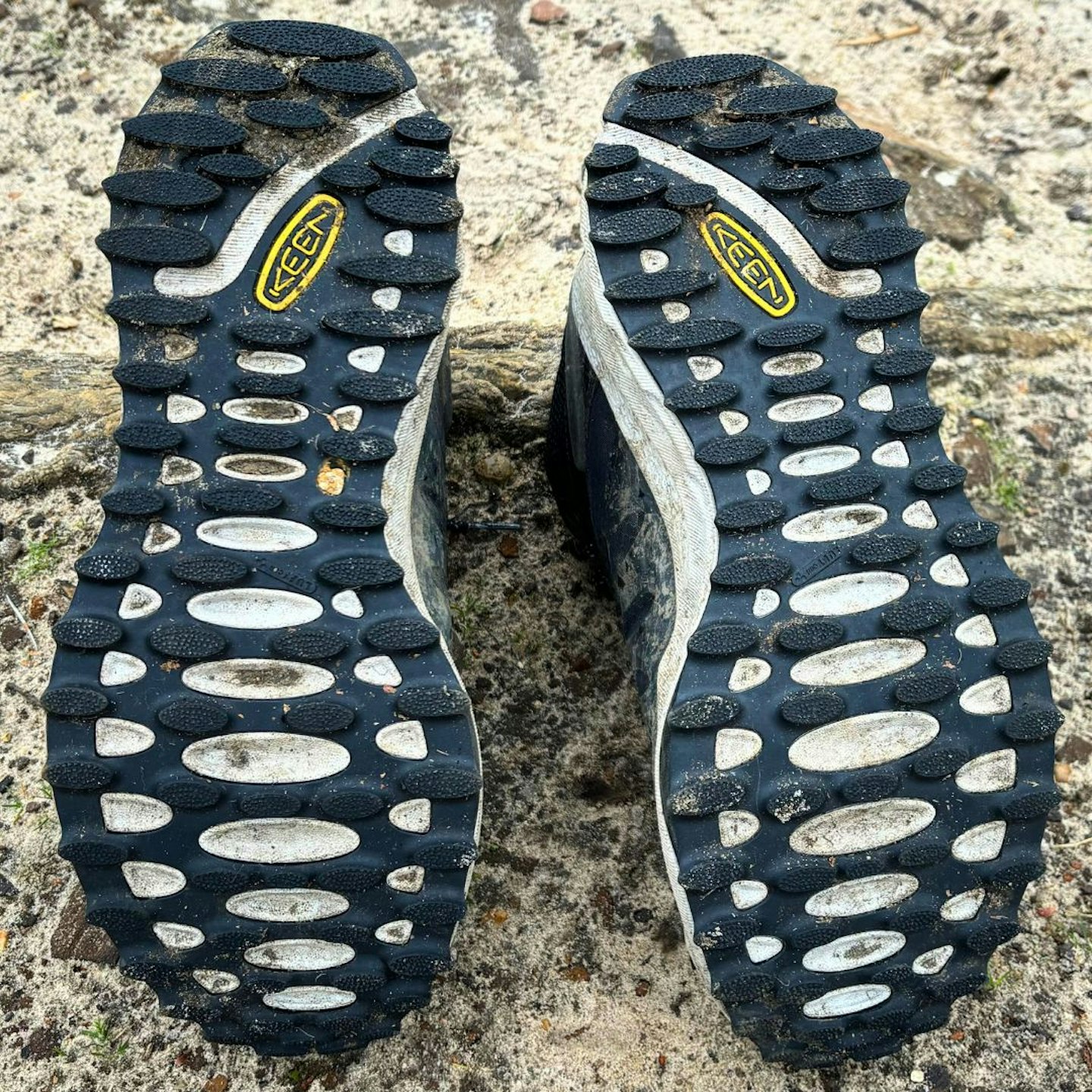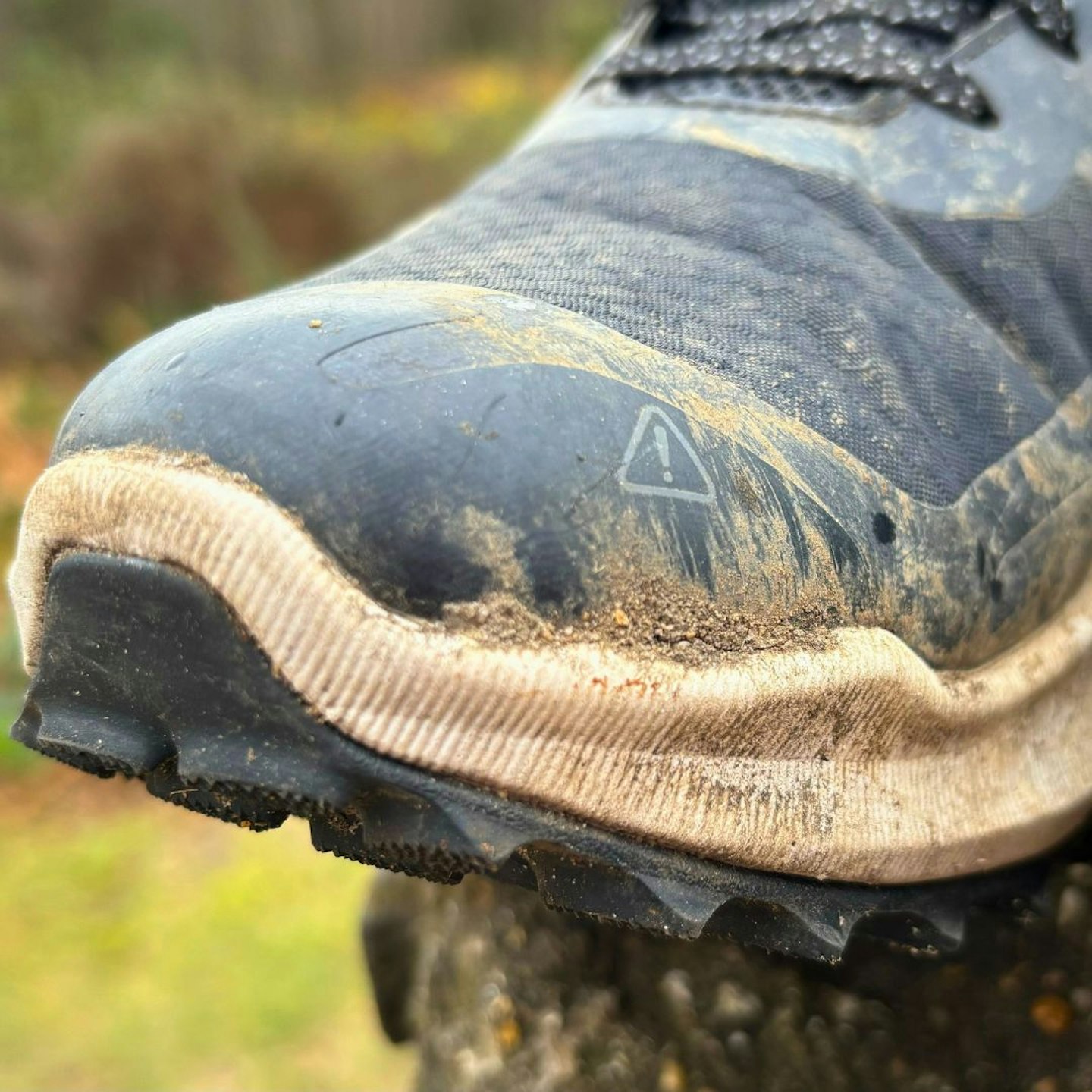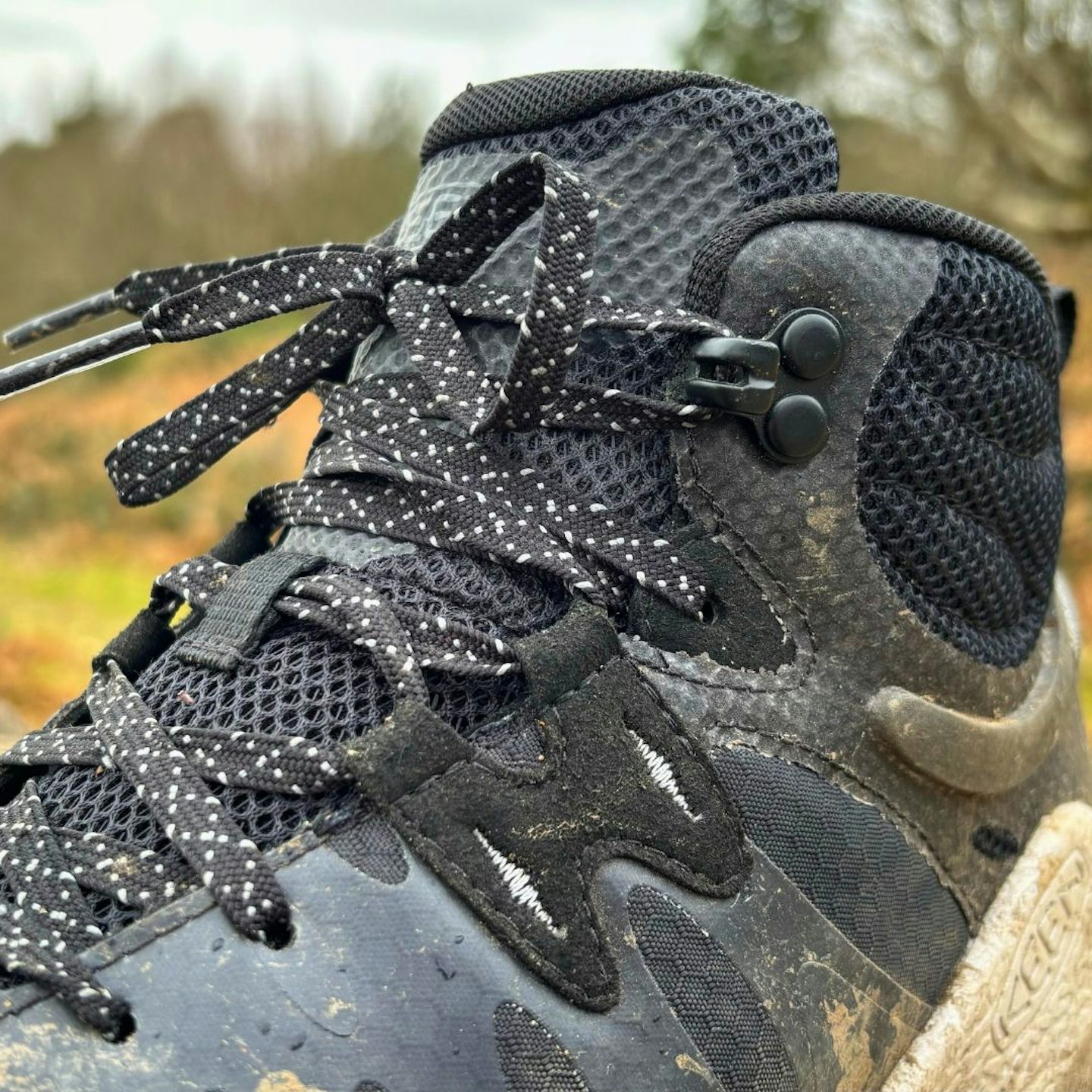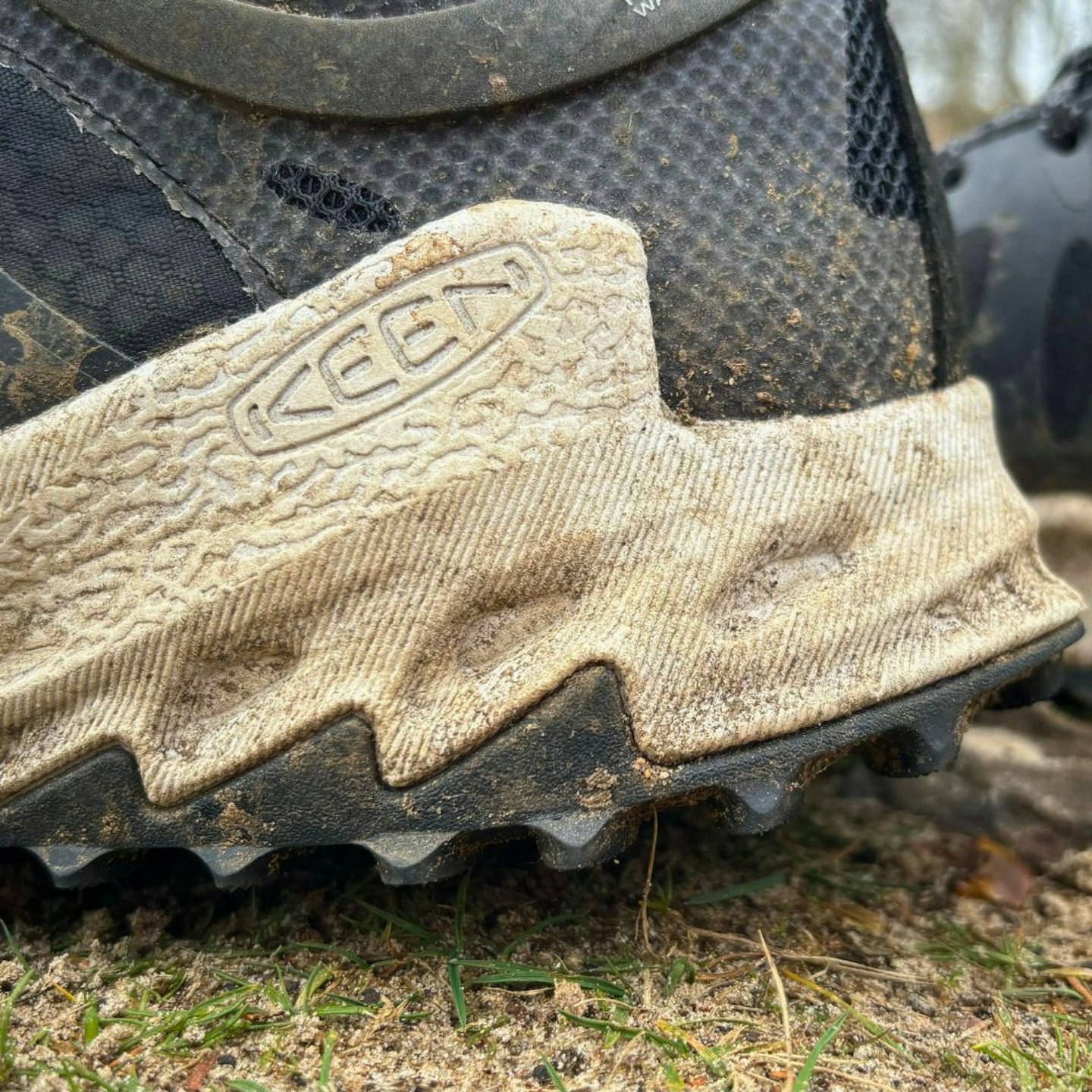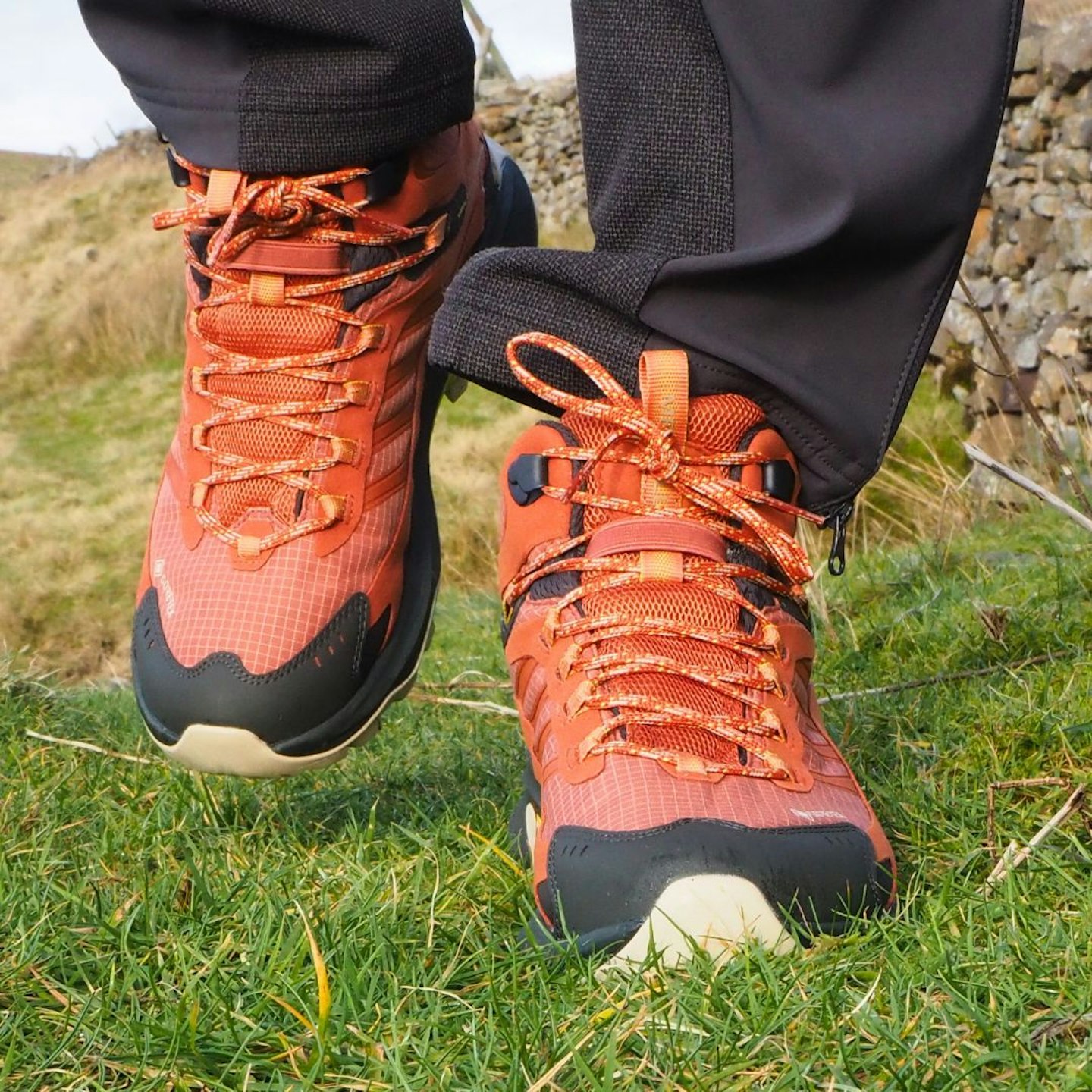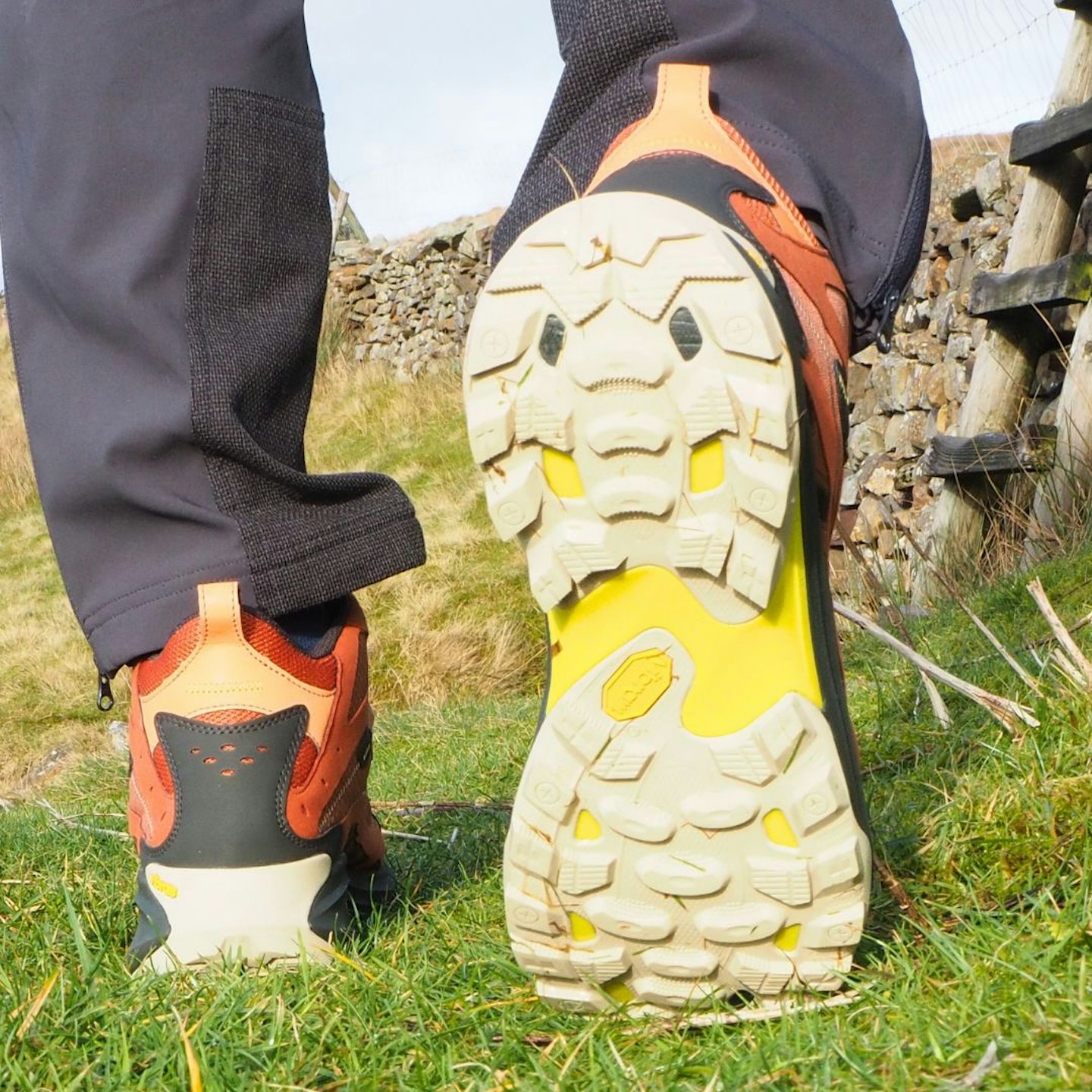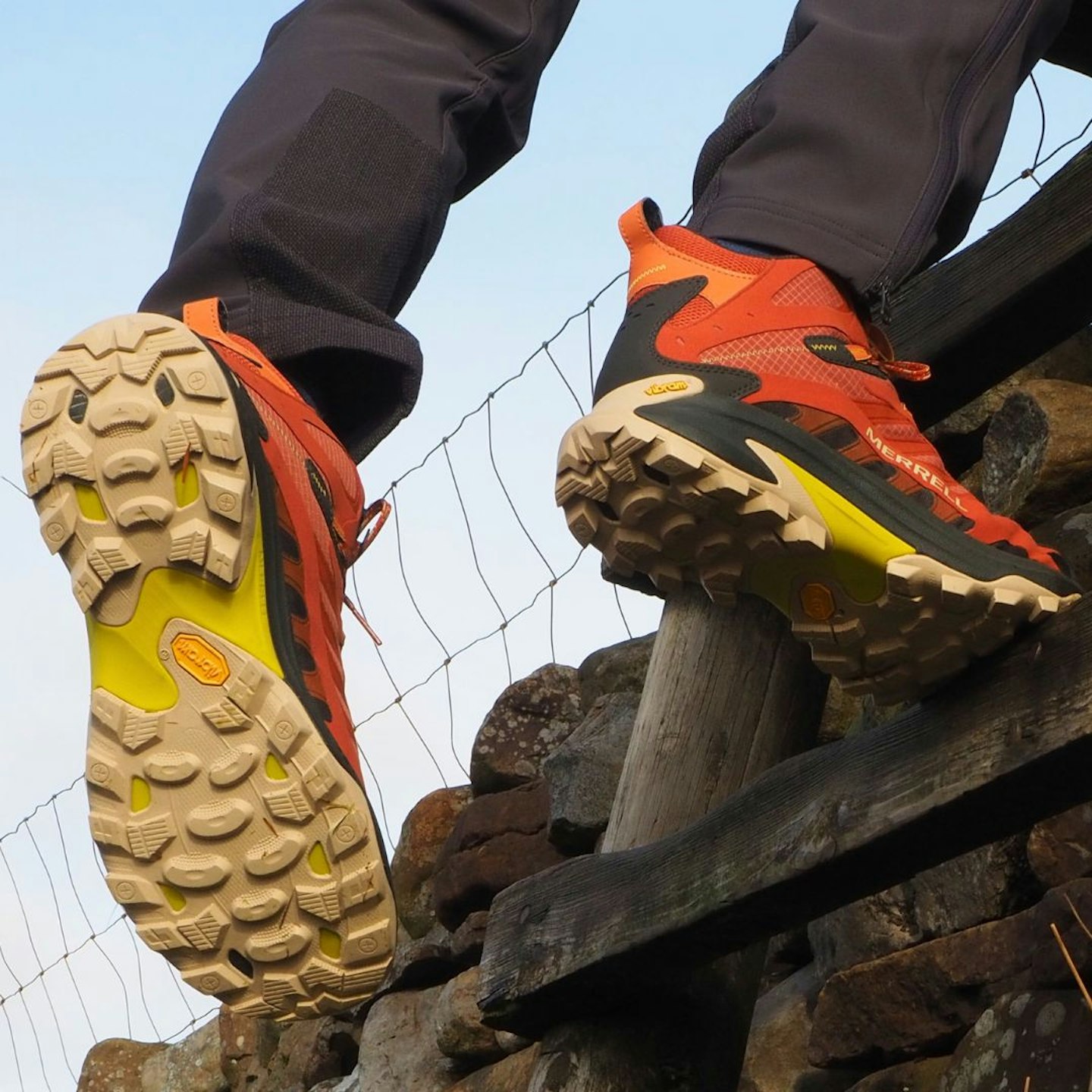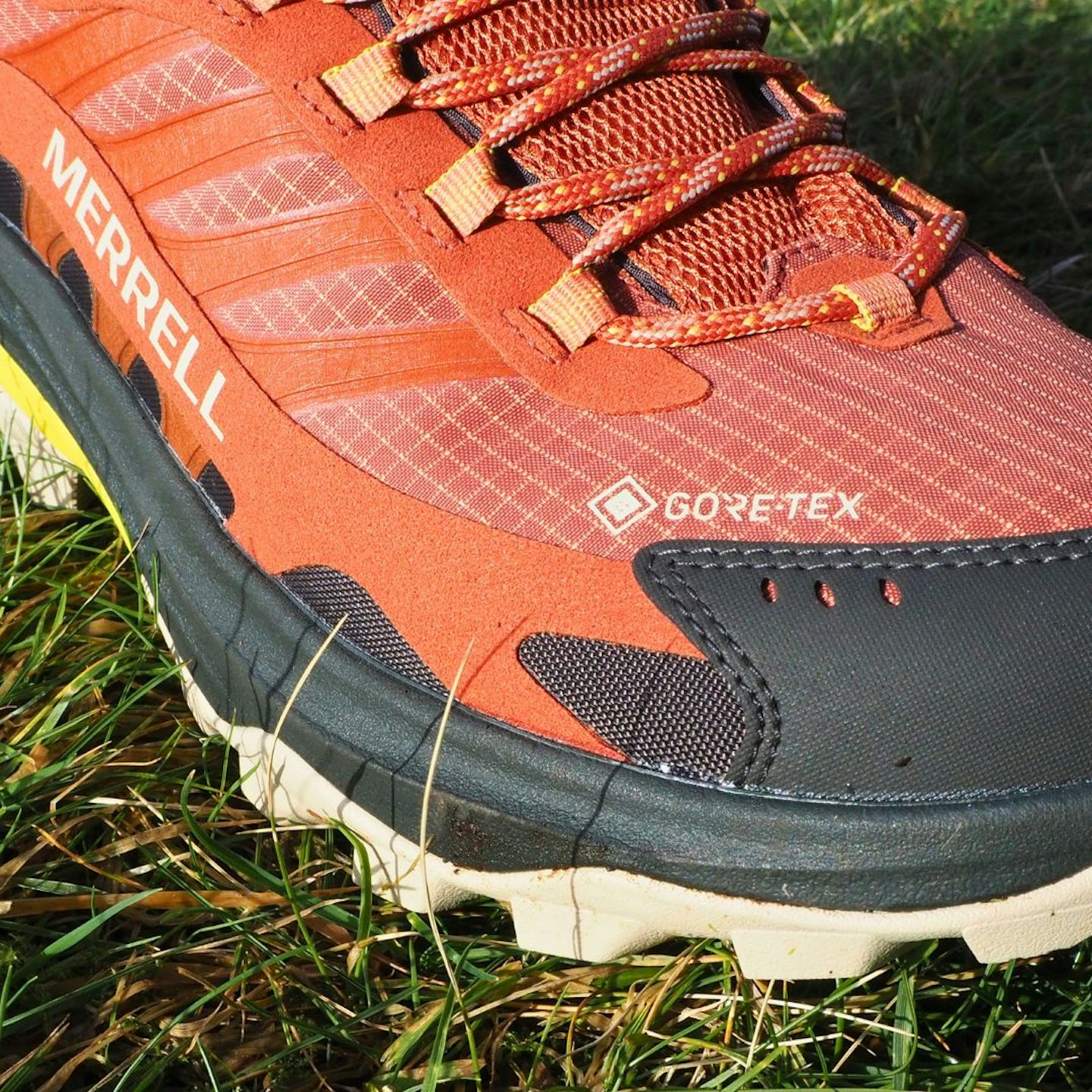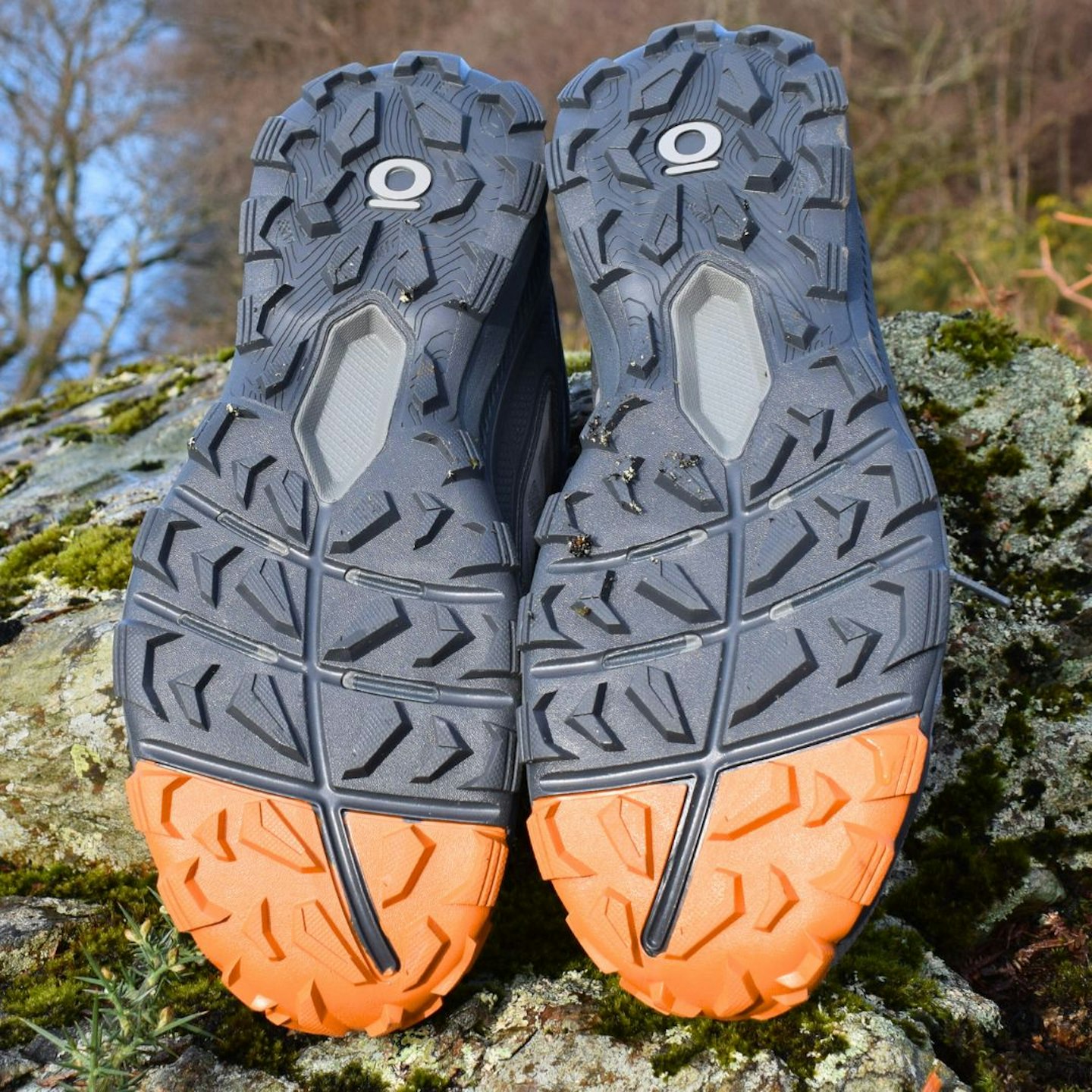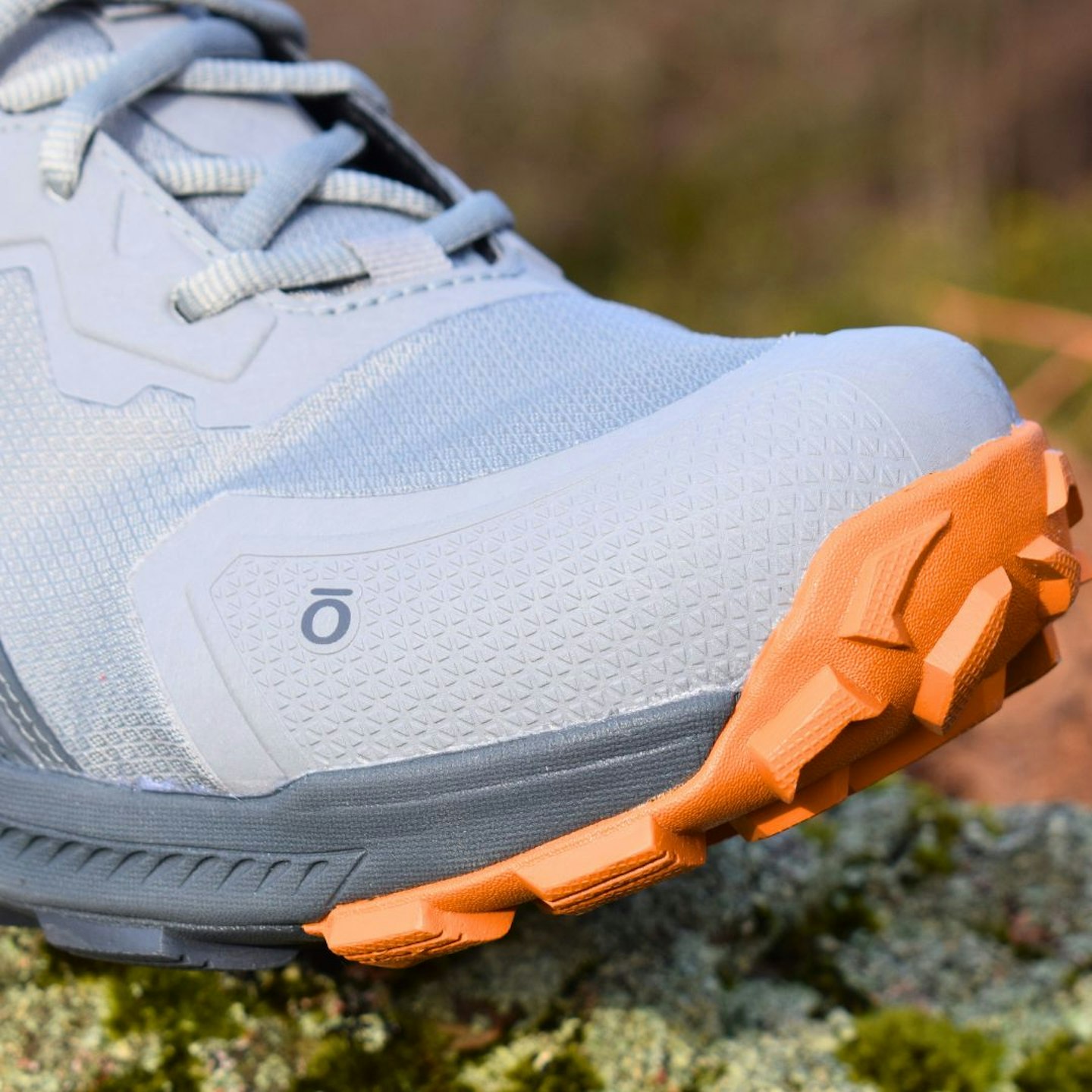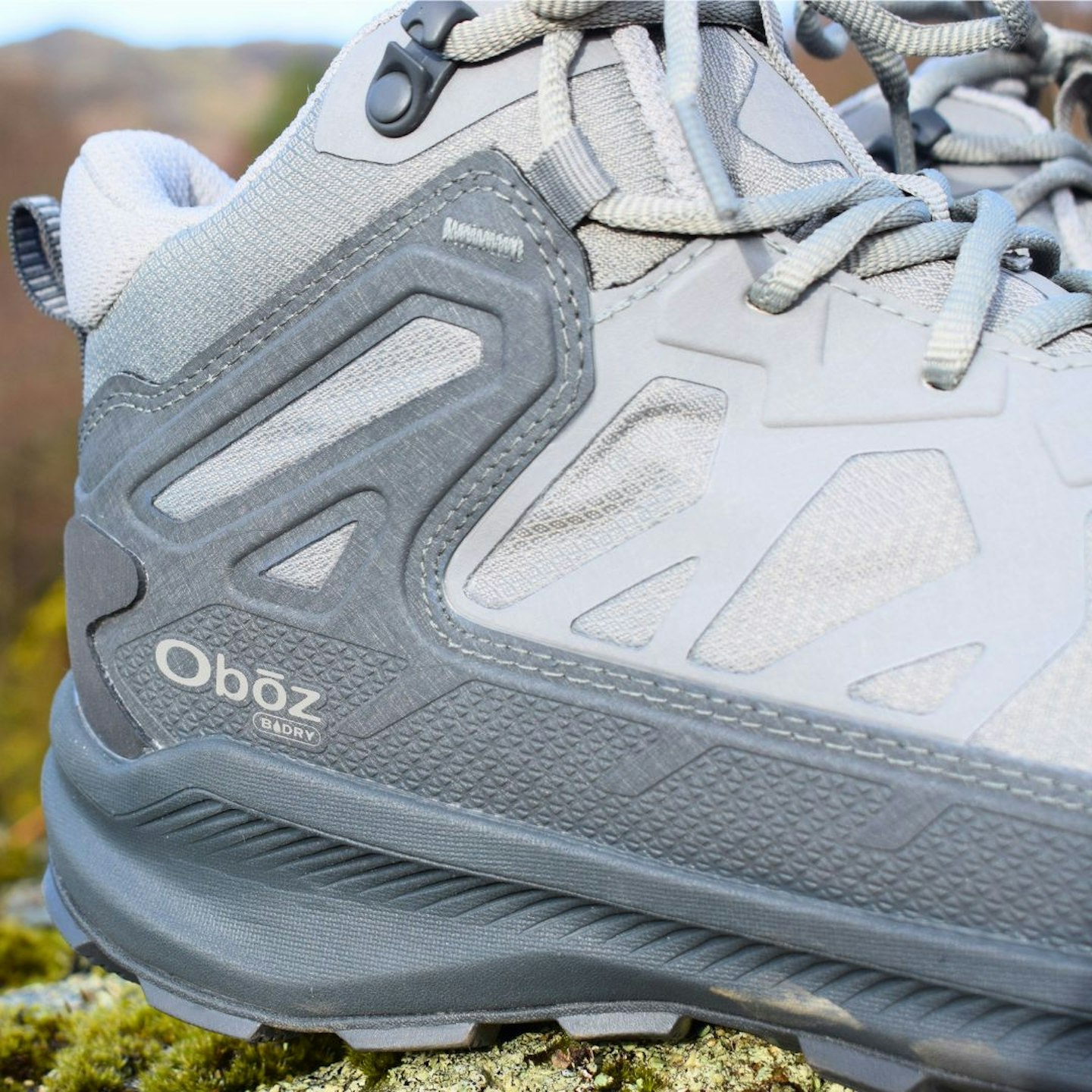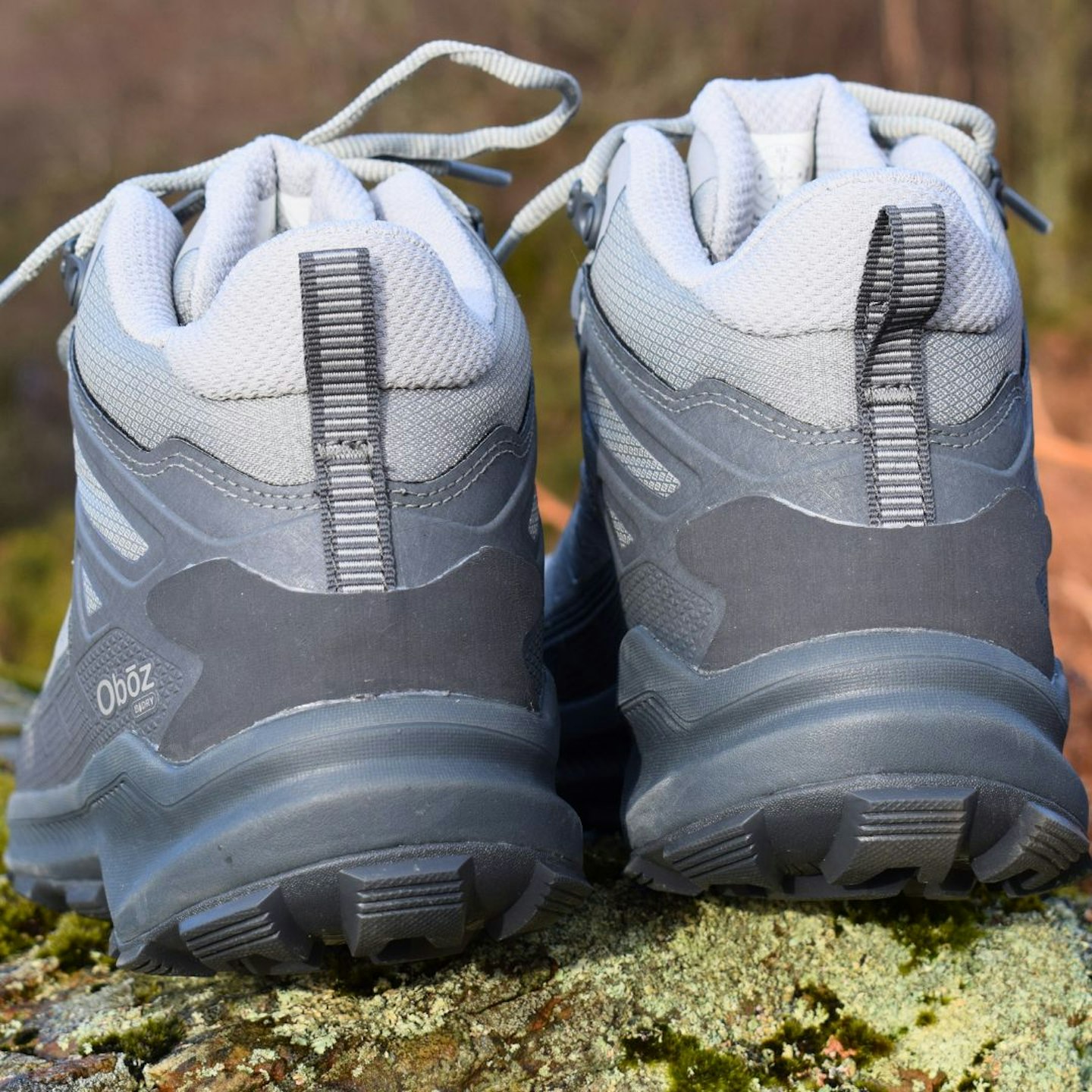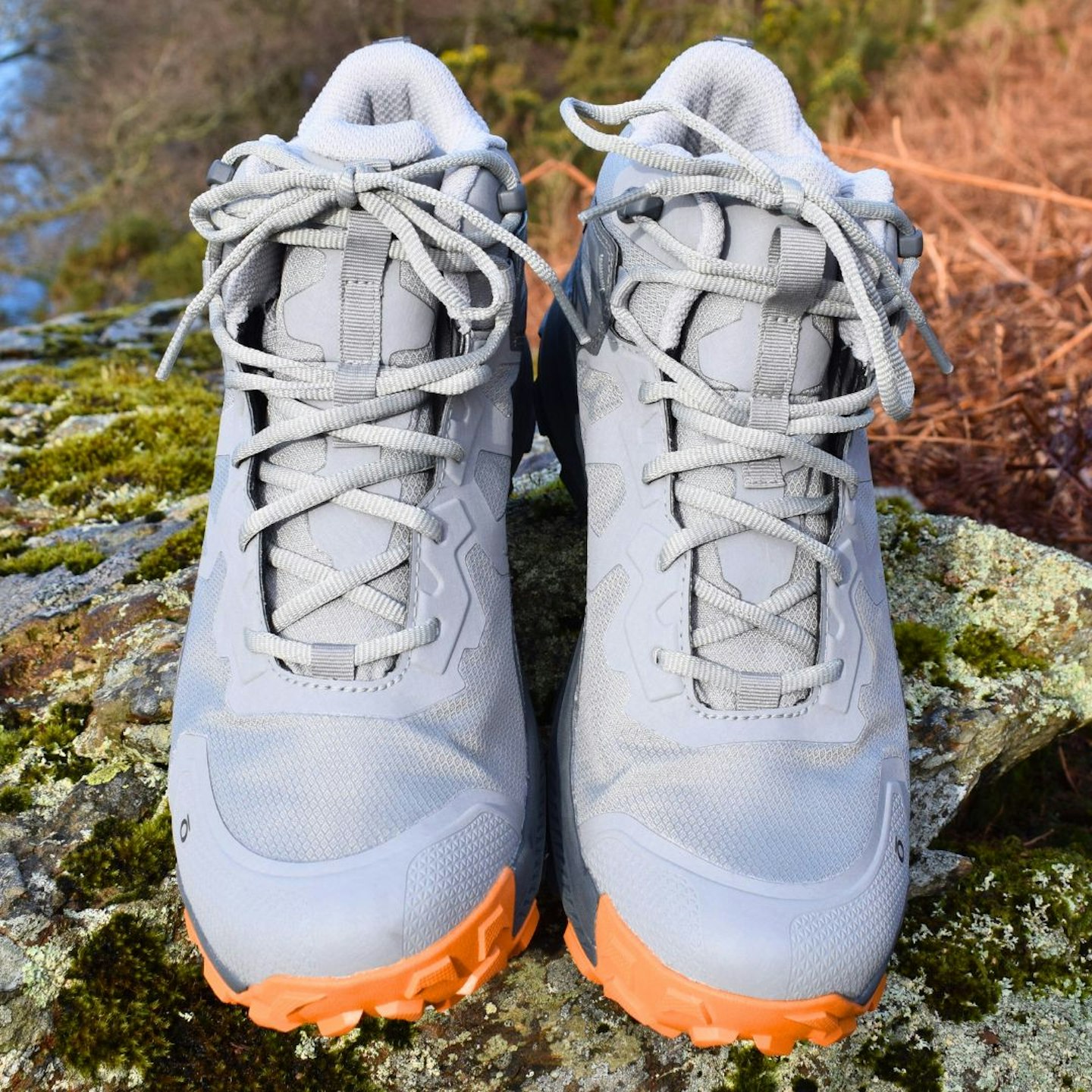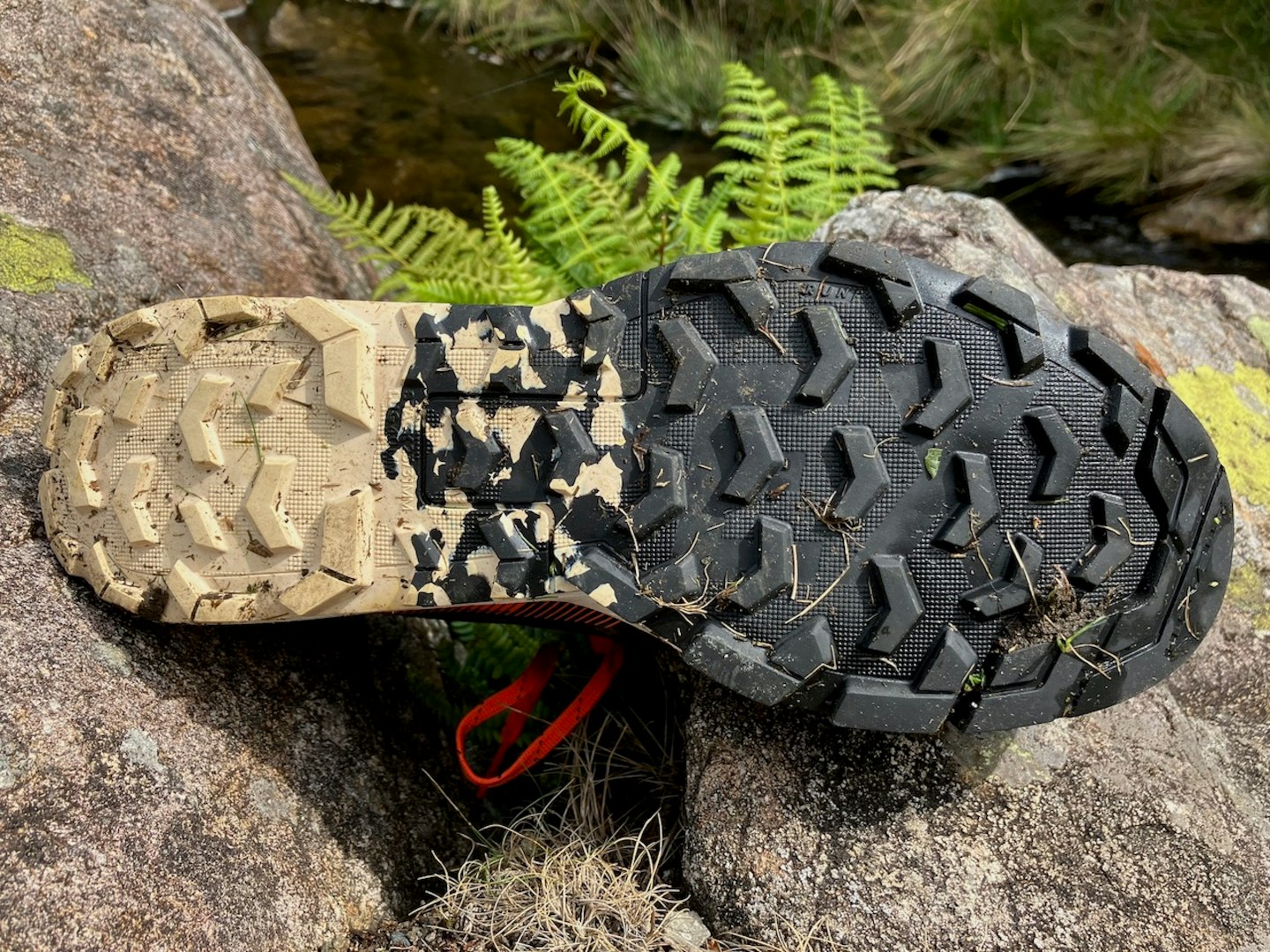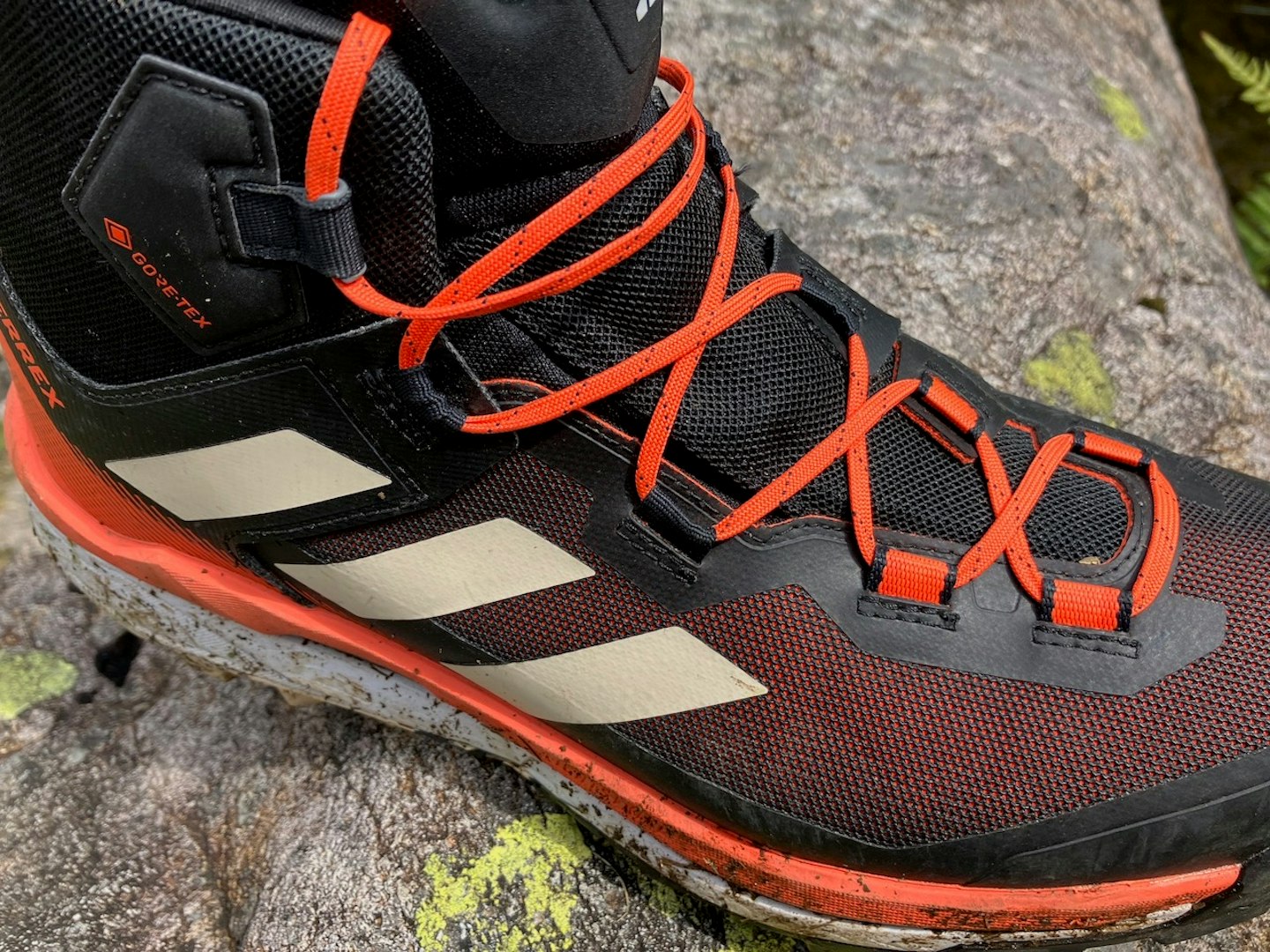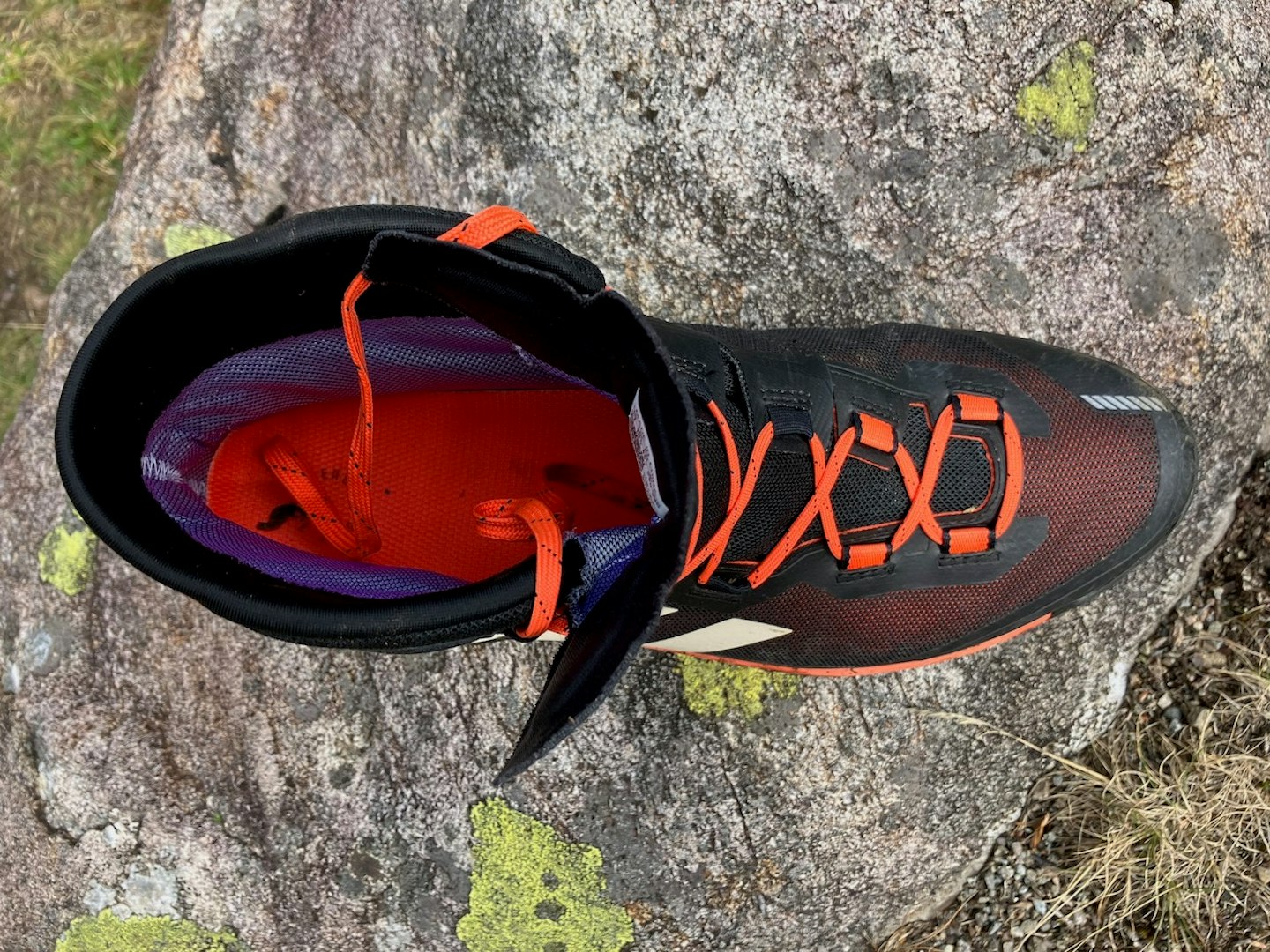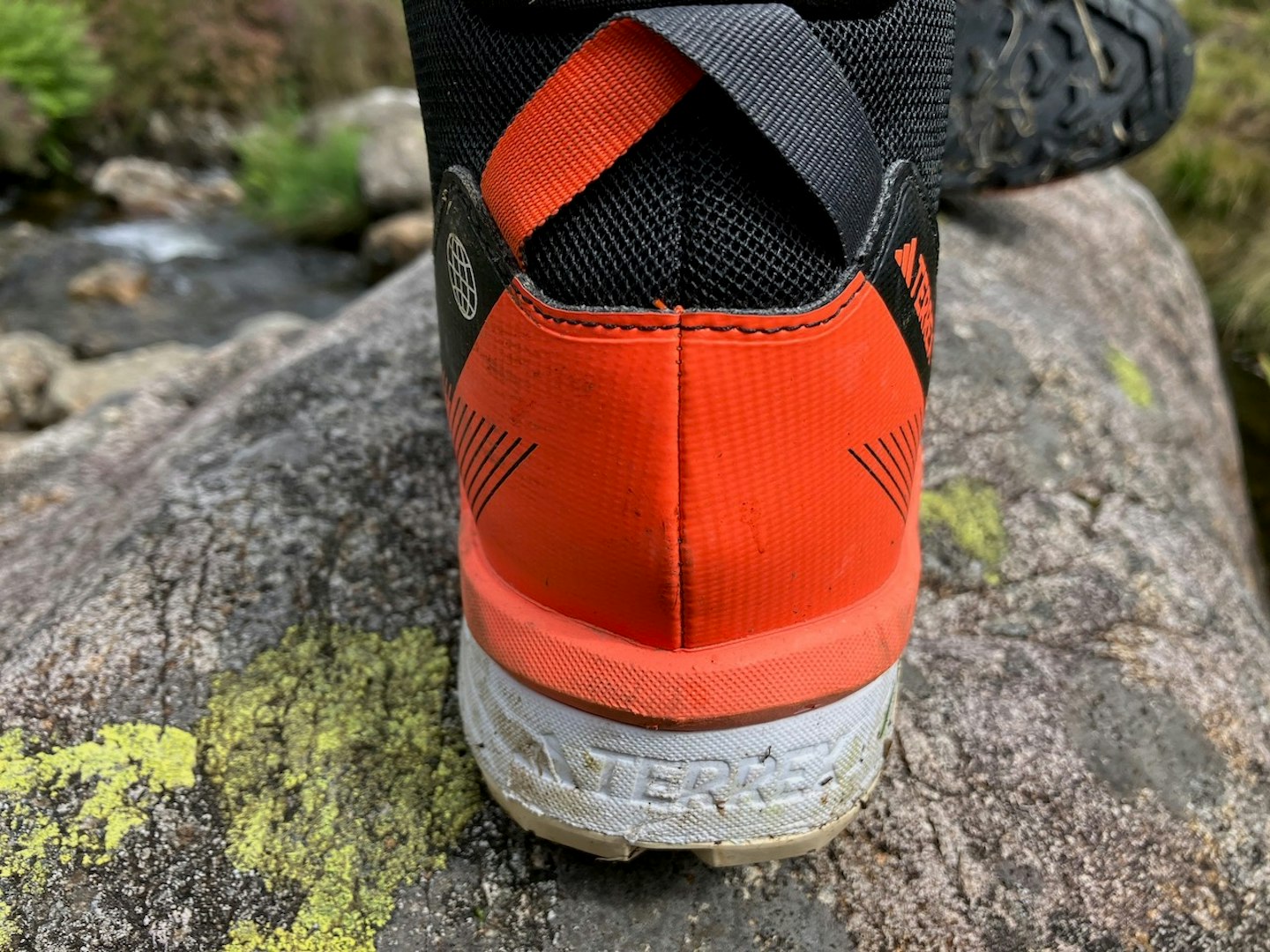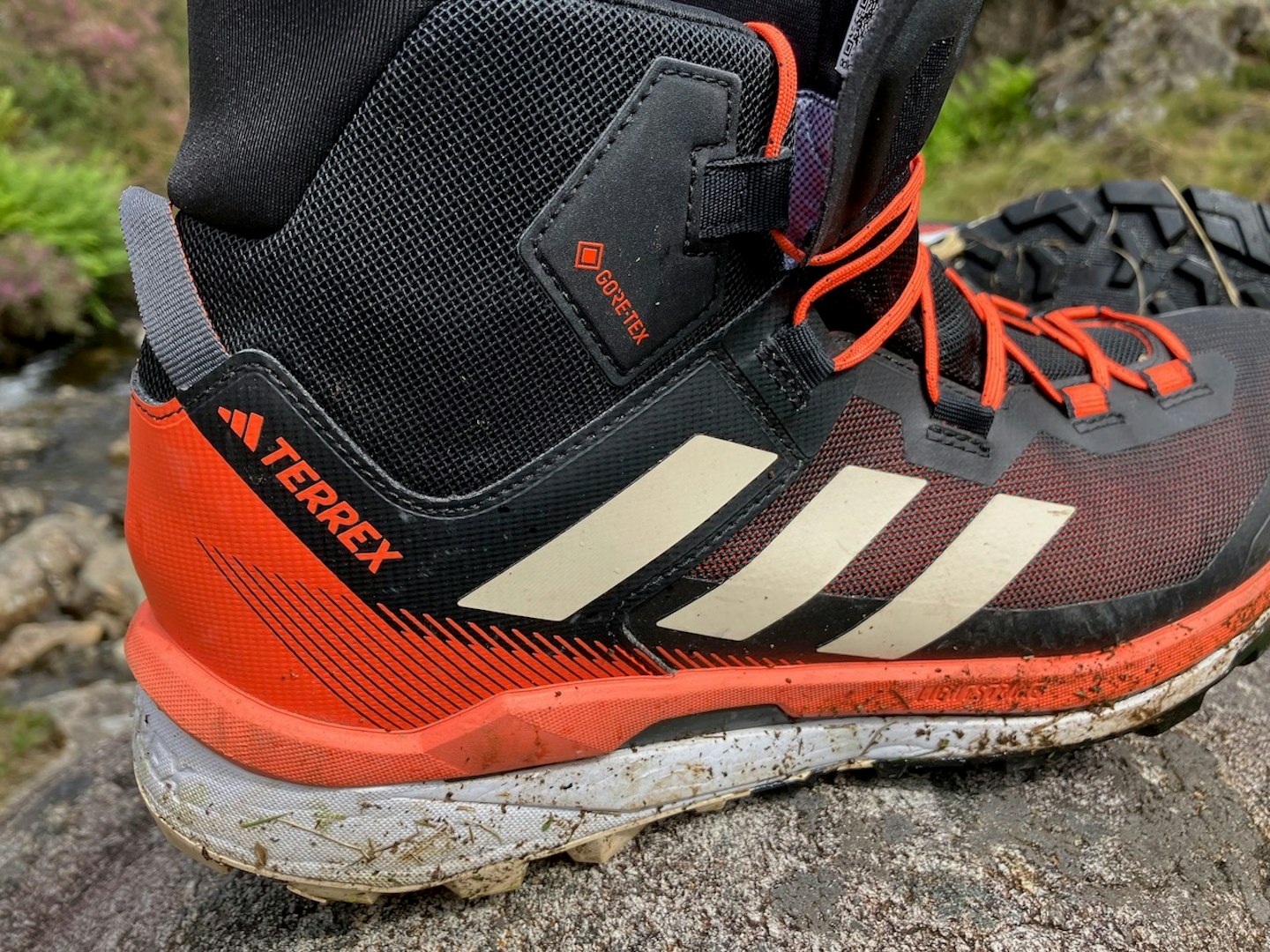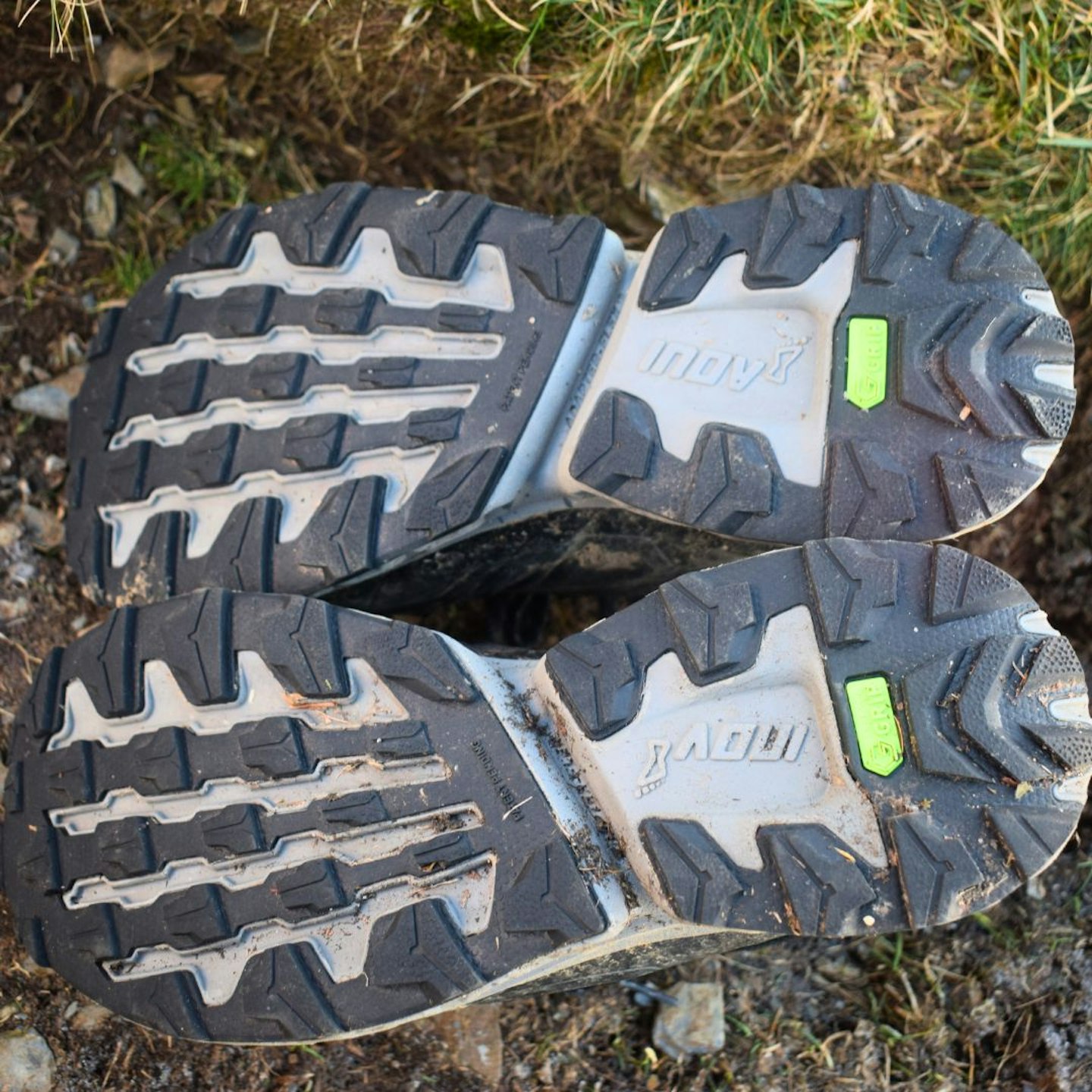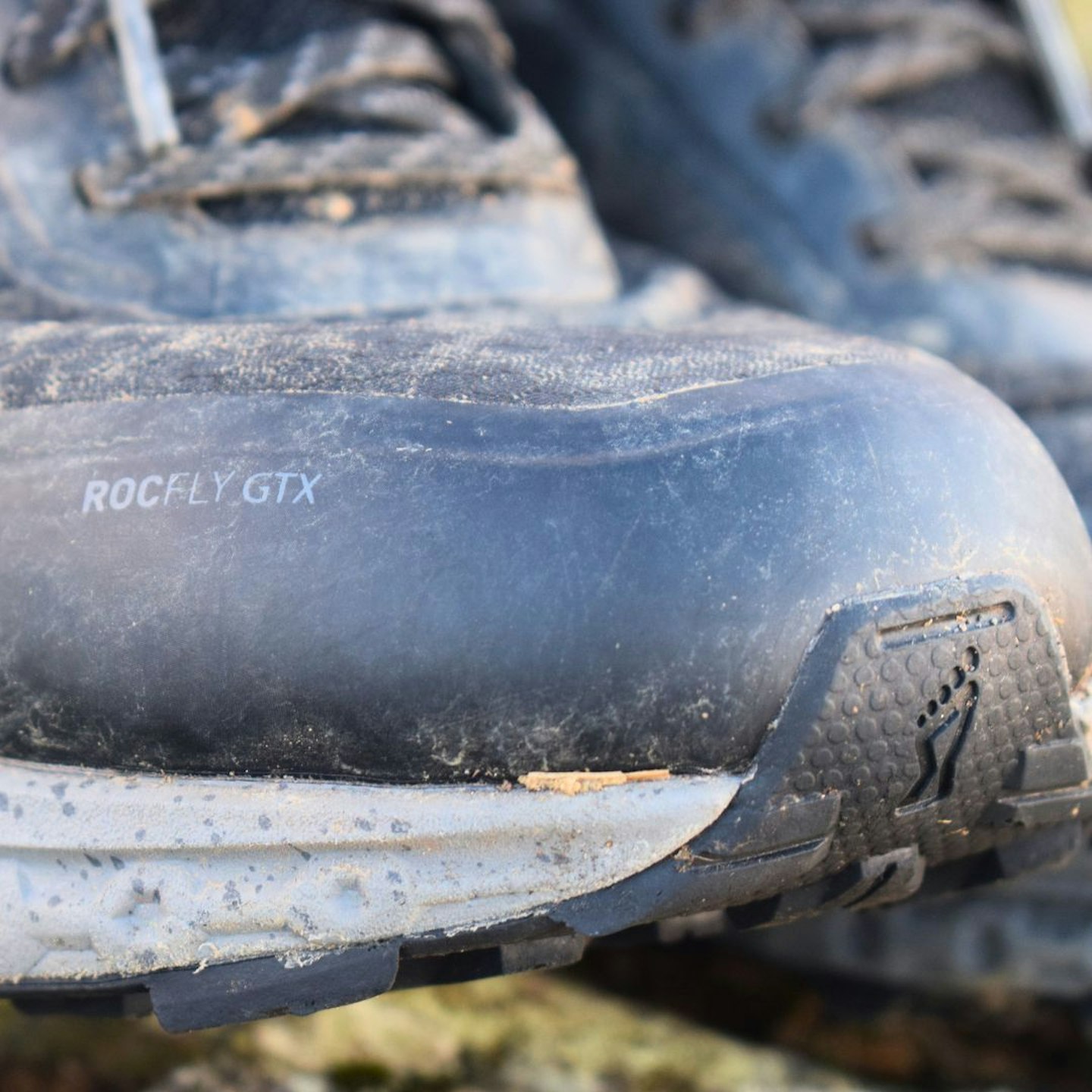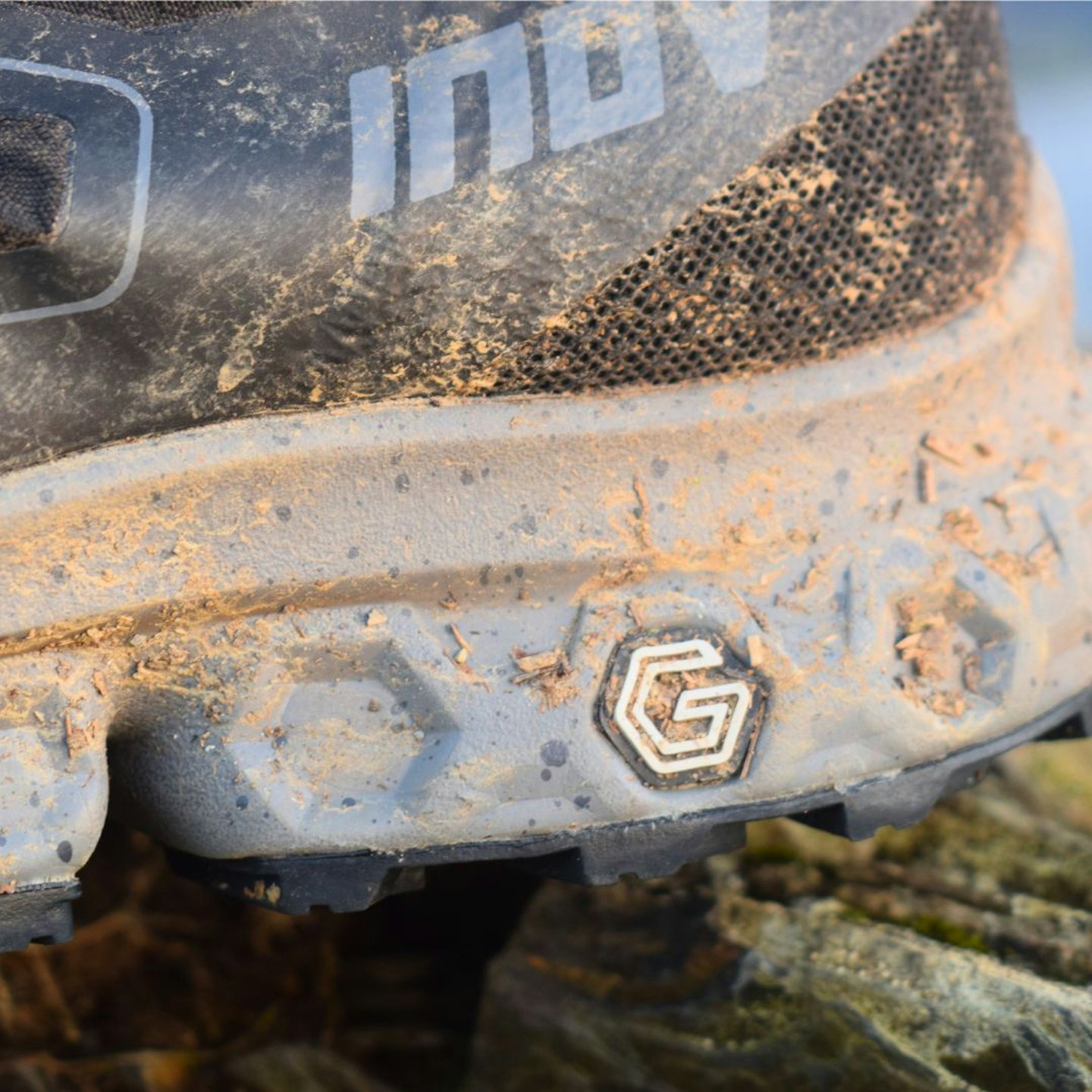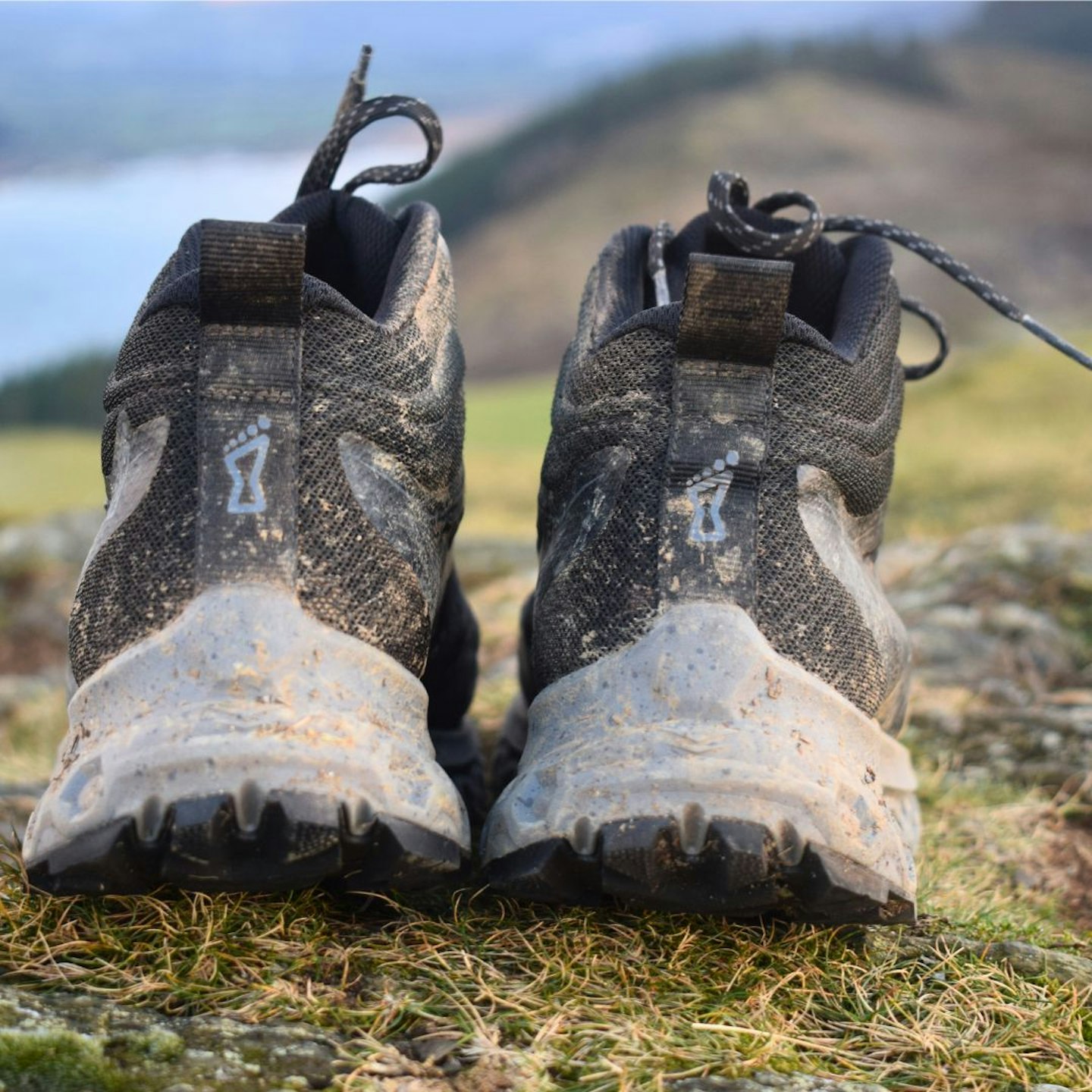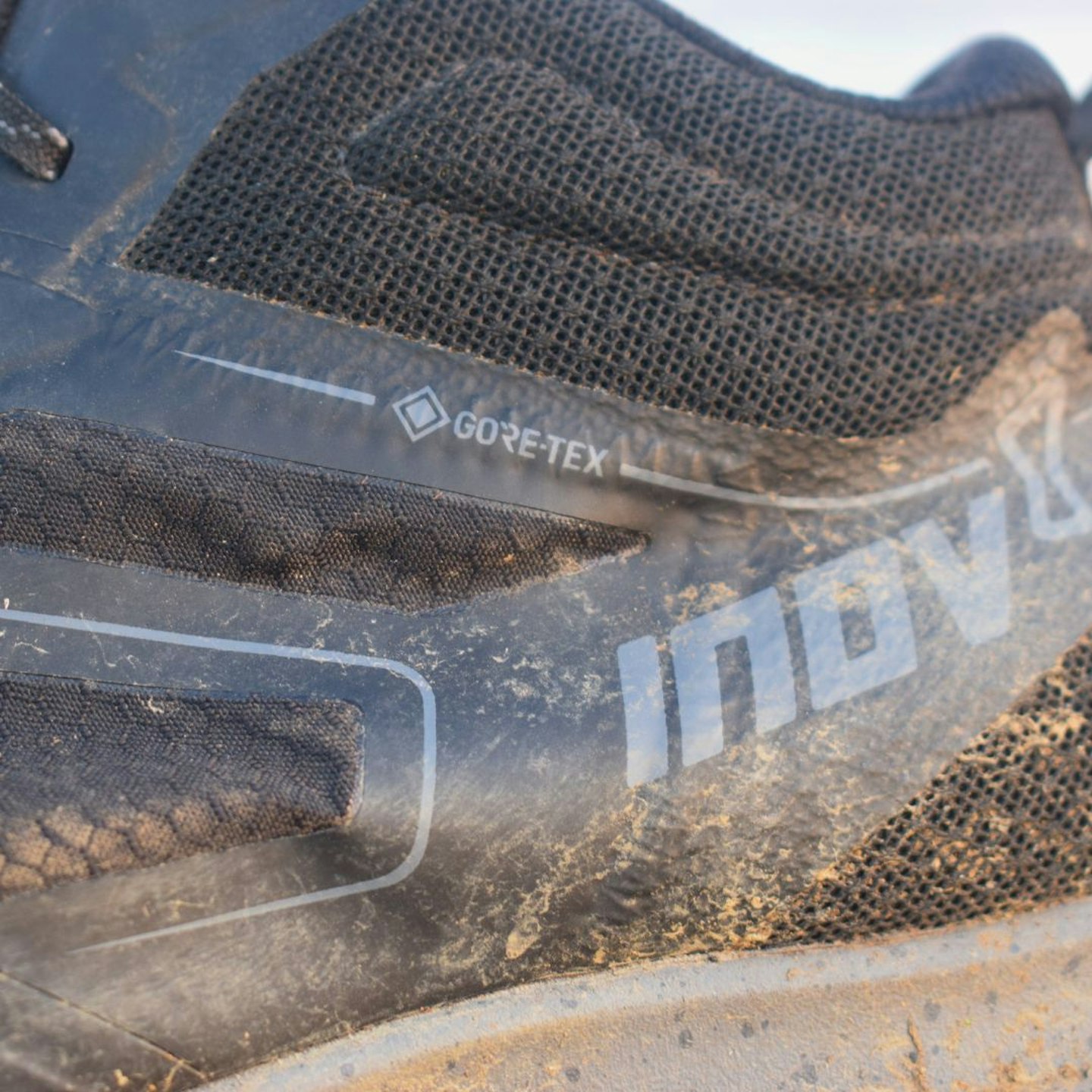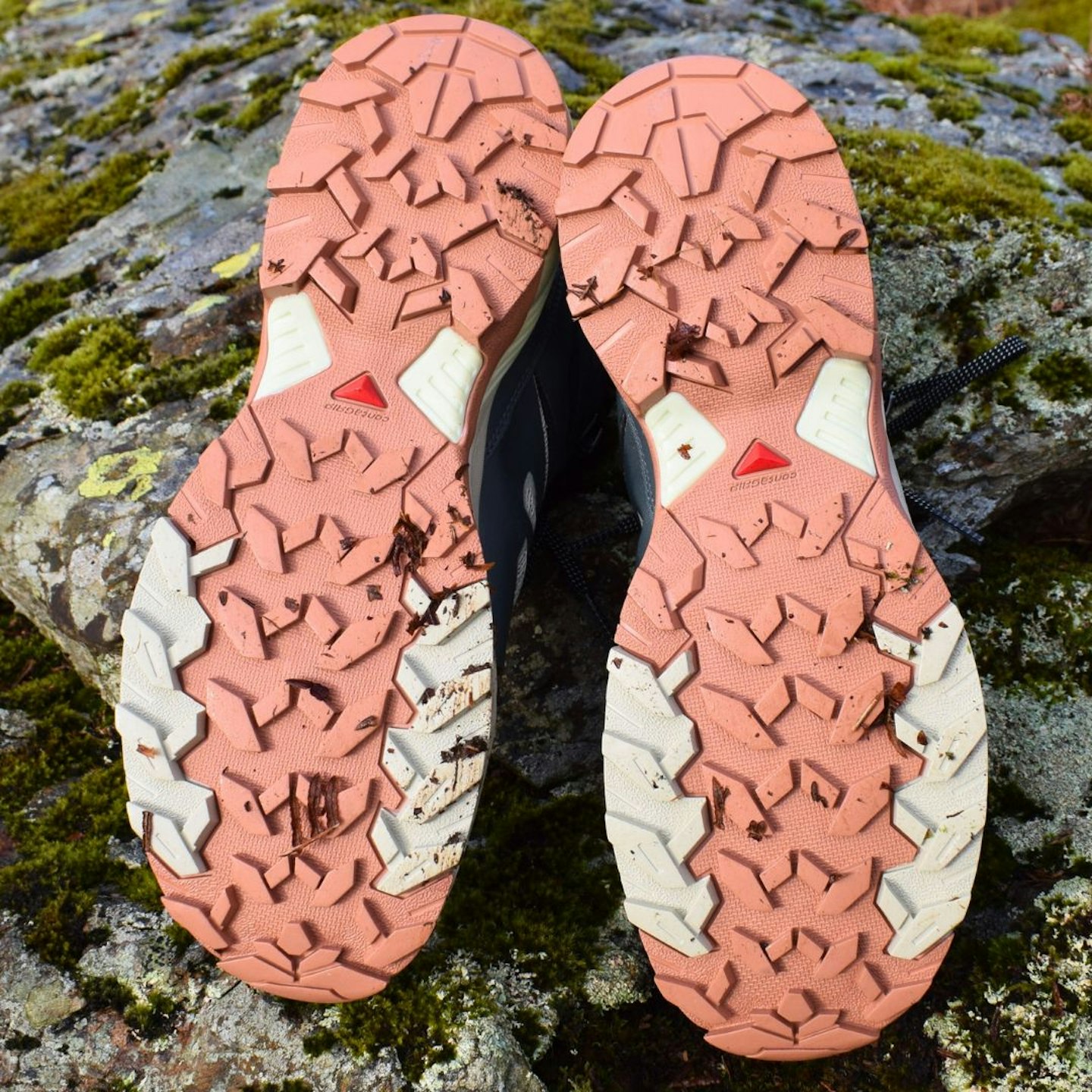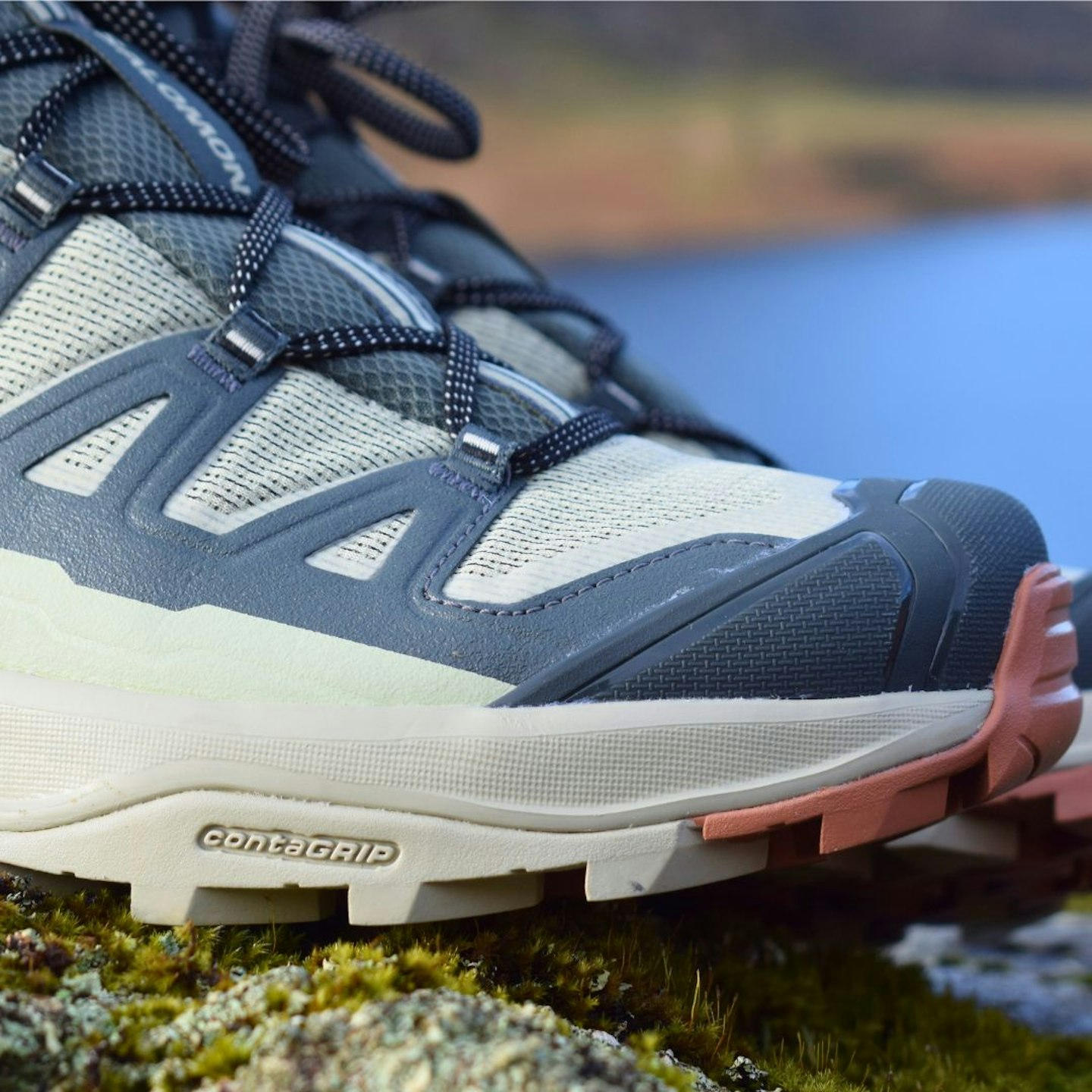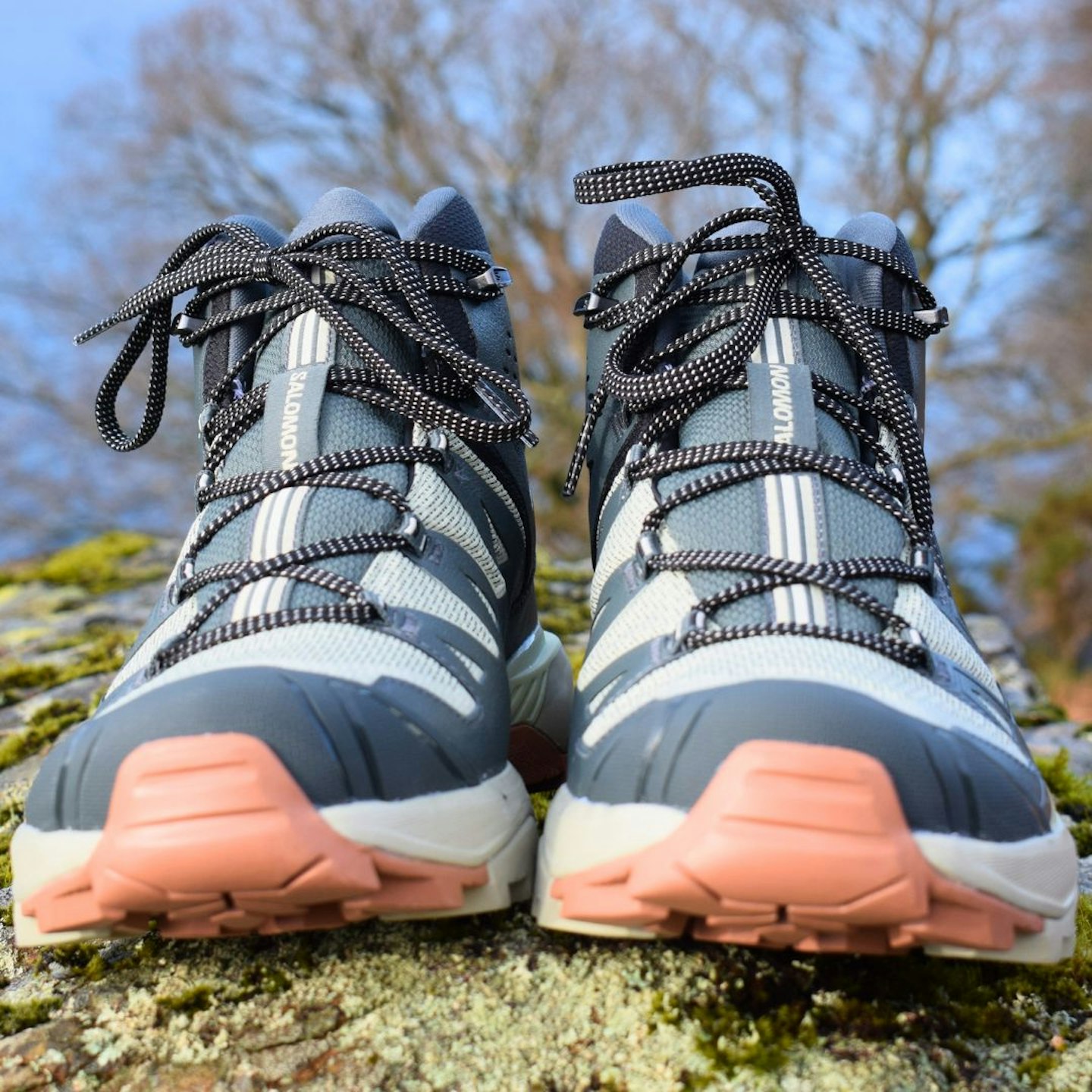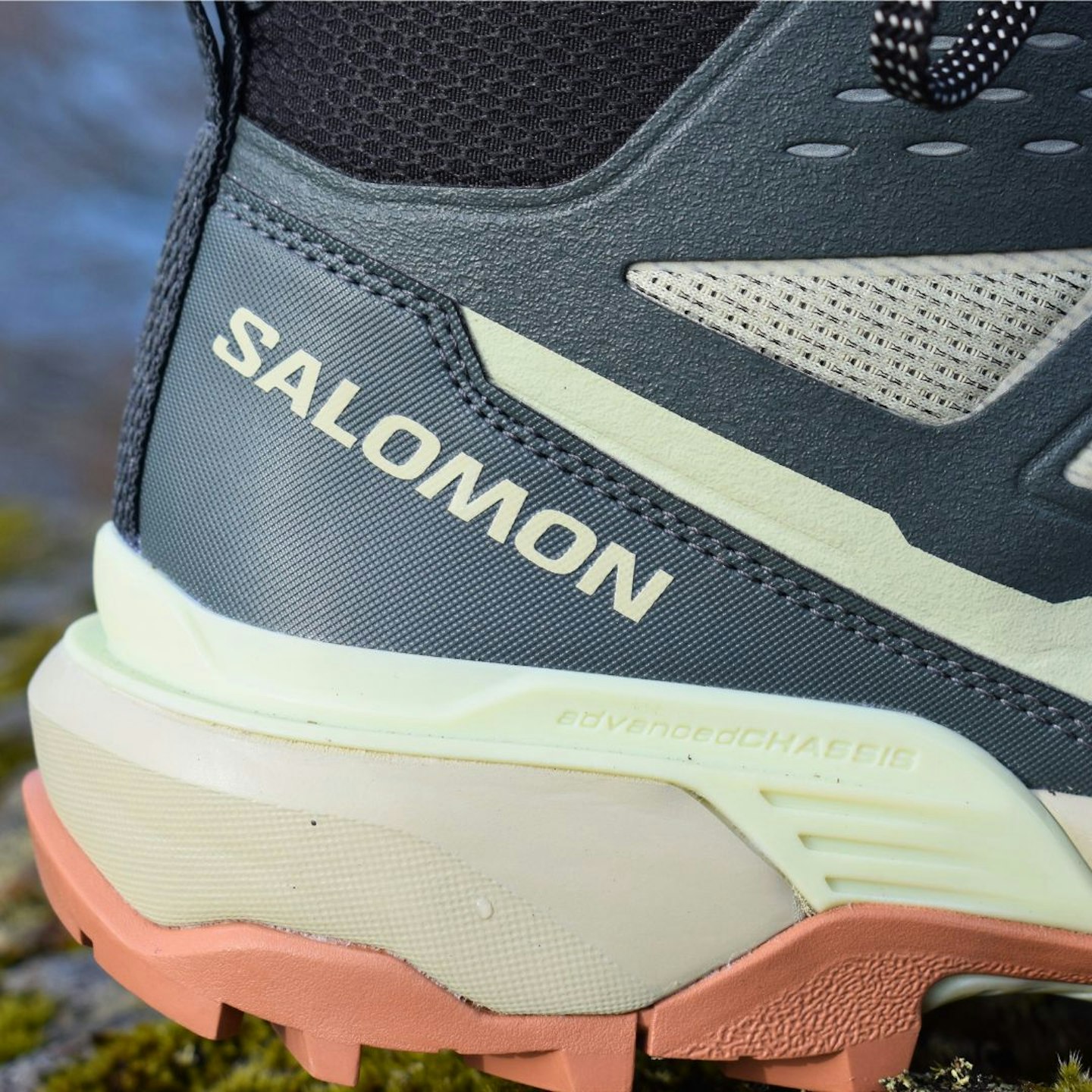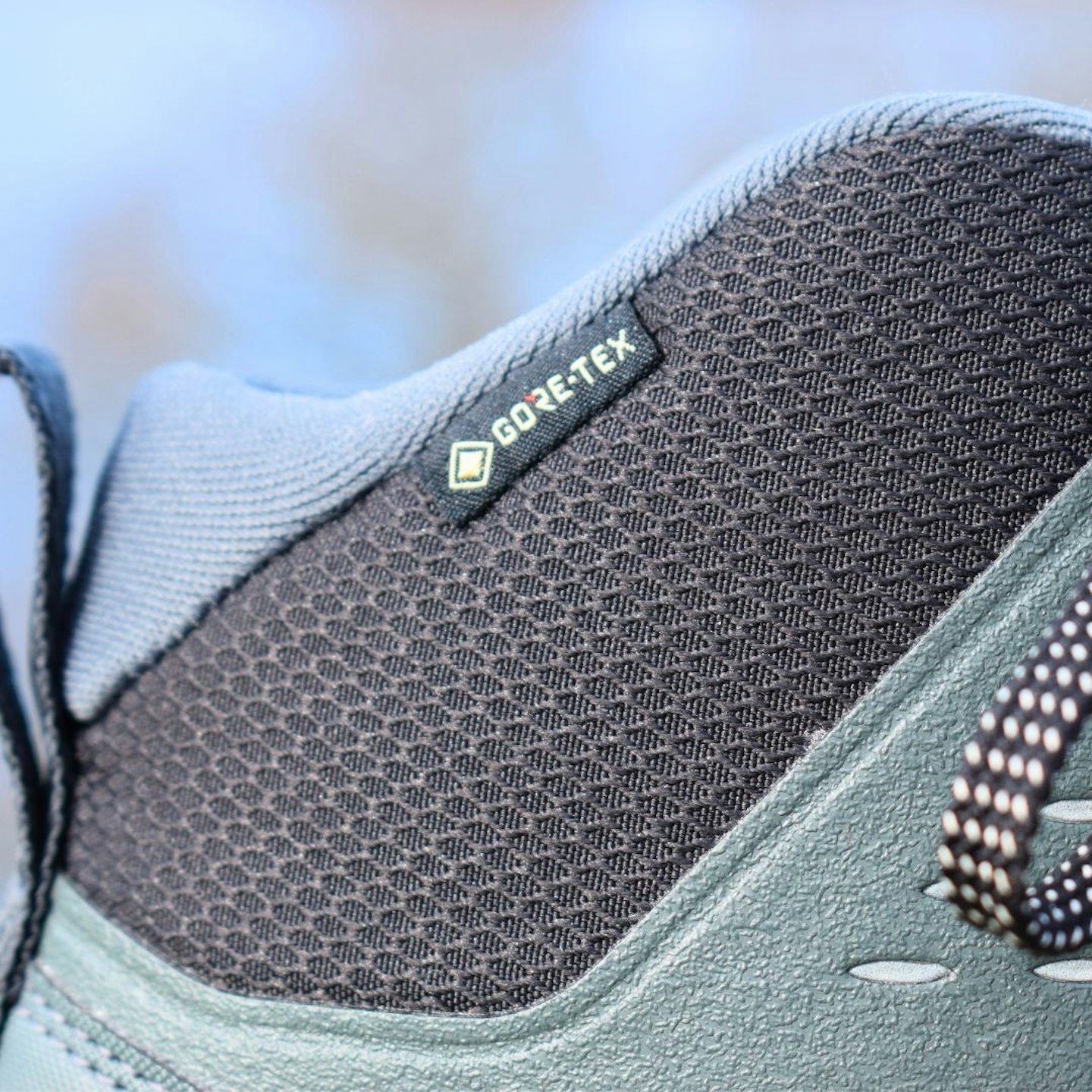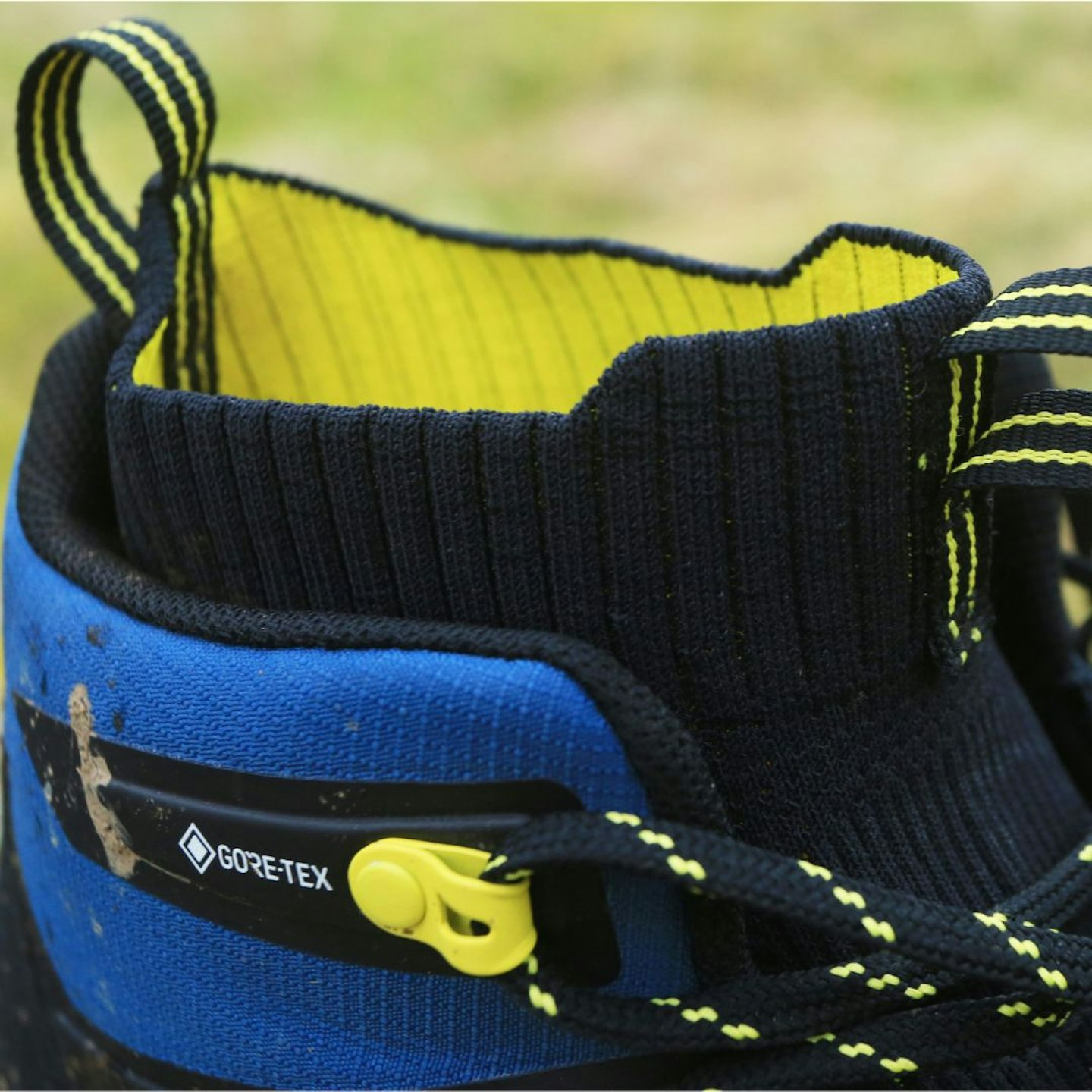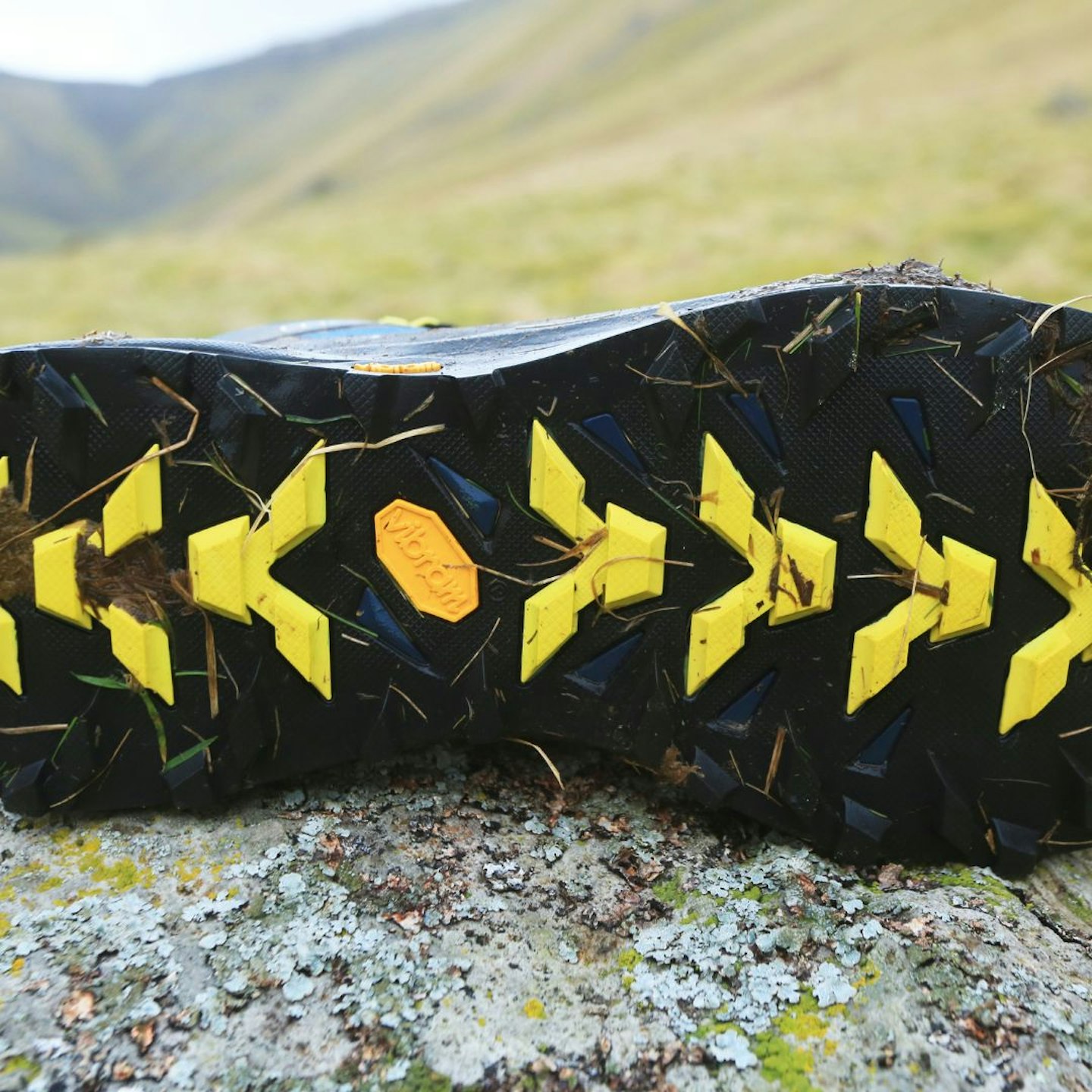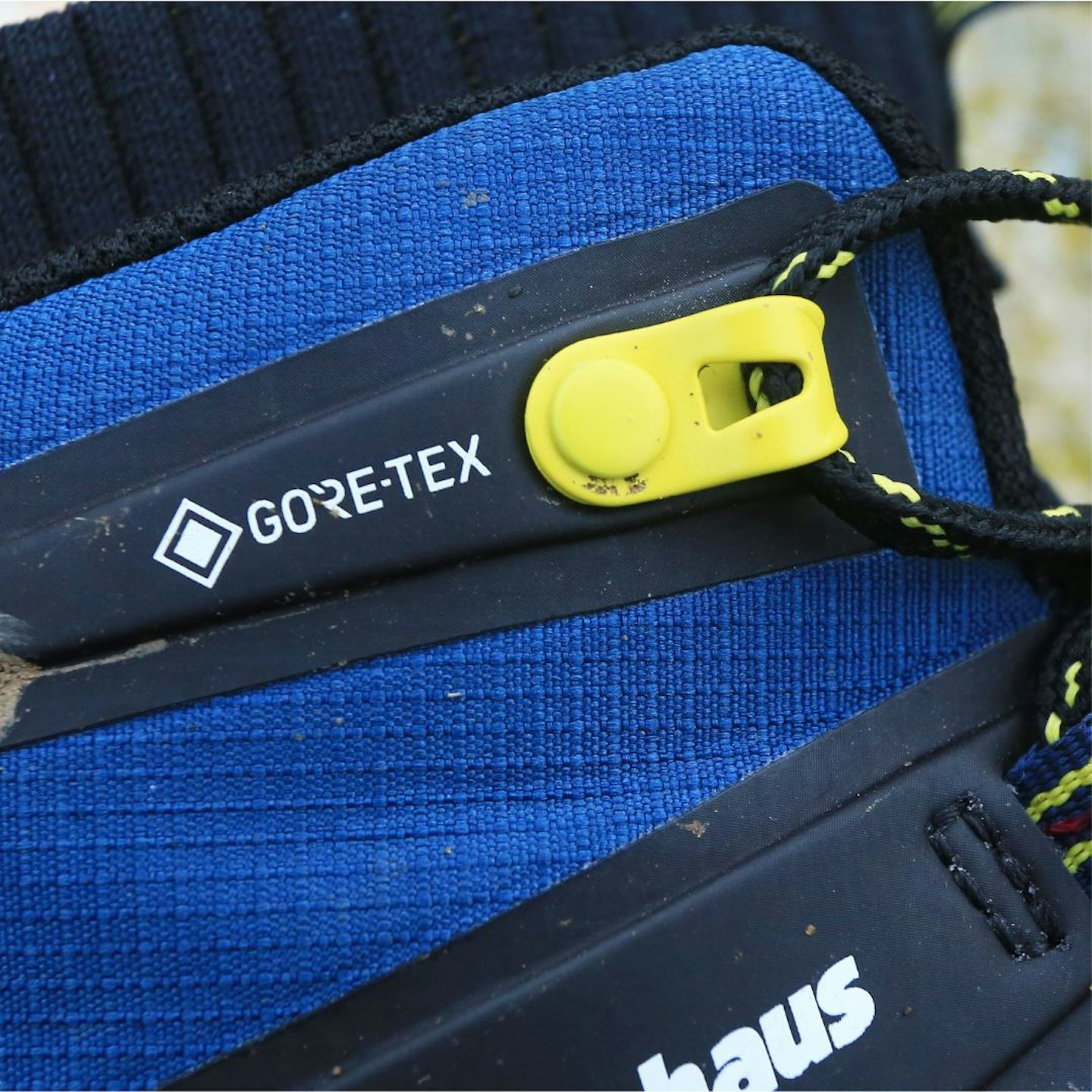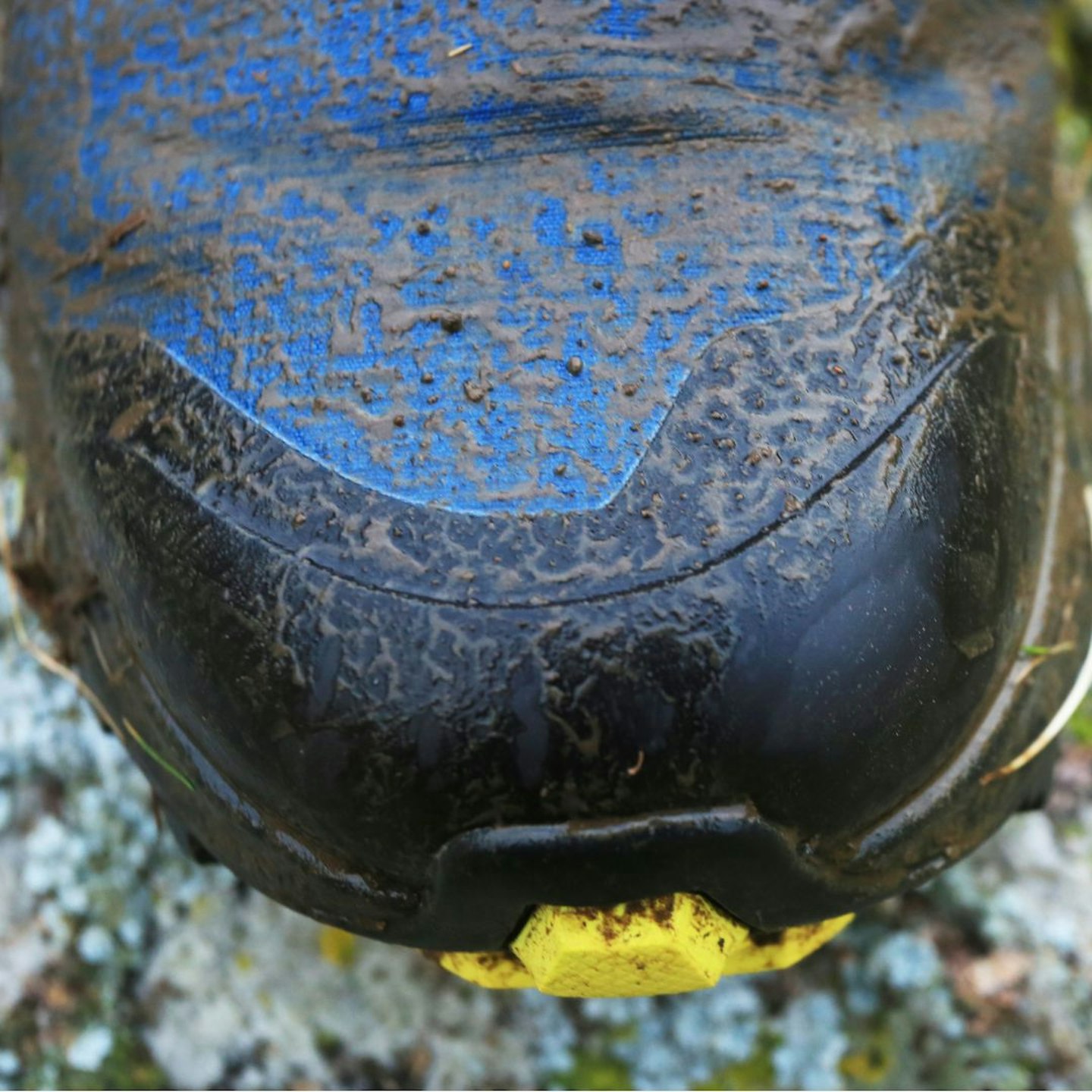When it comes to short hikes, fast hikes, and summer hillwalking, some lightweight walking boots or shoes might serve your purposes better than your heavier hiking boots.
It's worth stressing from the outset that lightweight walking boots have a different set of strengths to heavier, more traditional, and they both exist for a reason.
Boots (often leather boots) are generally better for longer treks because their construction is more supportive and they are more durable. Meanwhile, lightweight hiking boots and shoes are much more breathable and don't sap stamina.
Some tougher and more supportive trail running shoes can also be used as lightweight hiking shoes. But mid-height, low-weight boots can offer a good balance between weight and support.
Lightweight backpacking has boomed in popularity over the last five to ten years. As a consequence, the corresponding footwear category has boomed with it. To trim down your vast array of candidates, we've been field-testing many lightweight walking boots and shoes to find the best currently available.
What are the best lightweight walking boots of 2025?
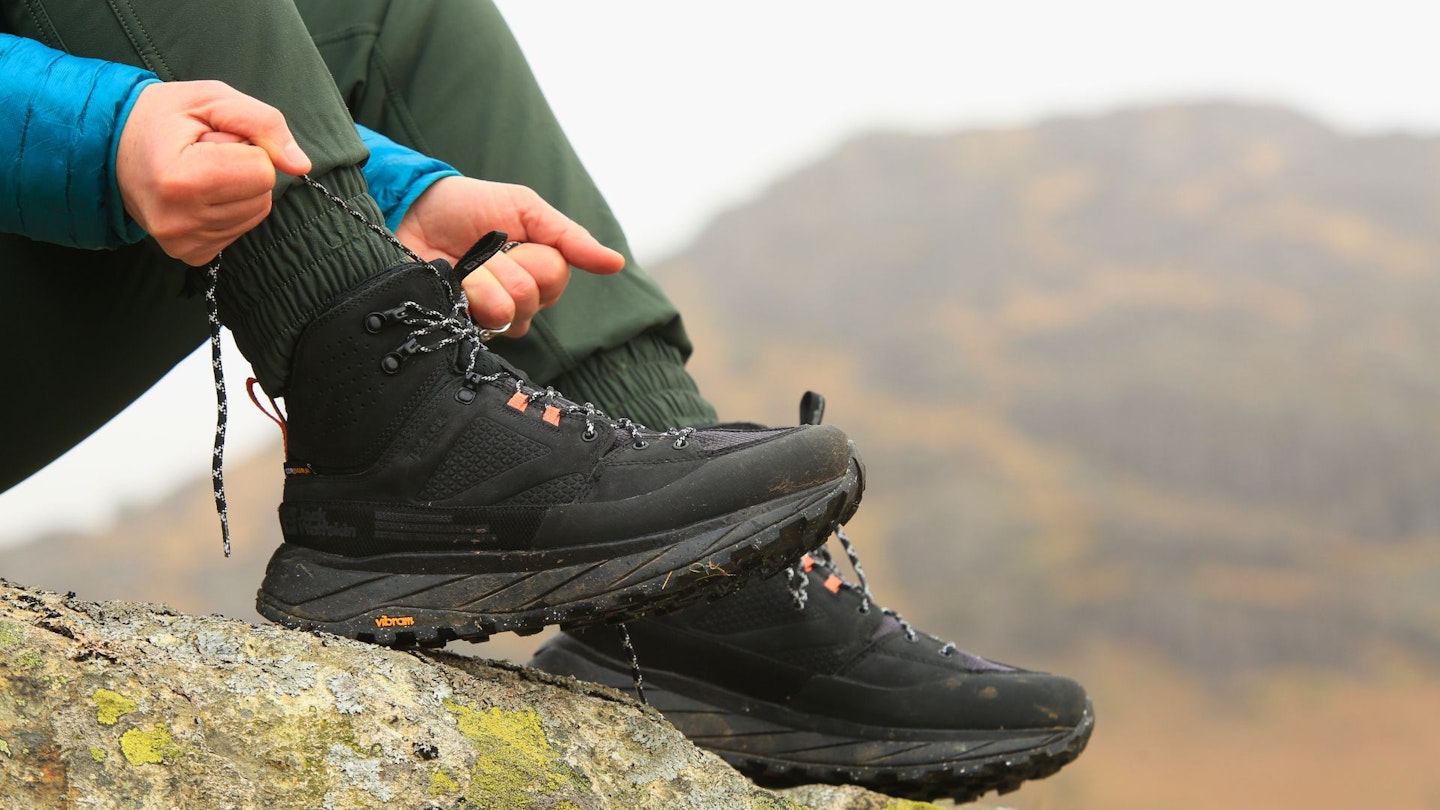
Best in Test: Scarpa Rush 2 Mid GTX
Best value lightweight walking boot: Columbia Peakfreak II Mid OutDry
Best for breathability: Hoka Anacapa Breeze Mid
Editor's note: This article was last updated in March 2025, when we added the Scott Kinabalu review and checked that all of the boots featured here are still available for purchase.
How we tested the best lightweight walking boots
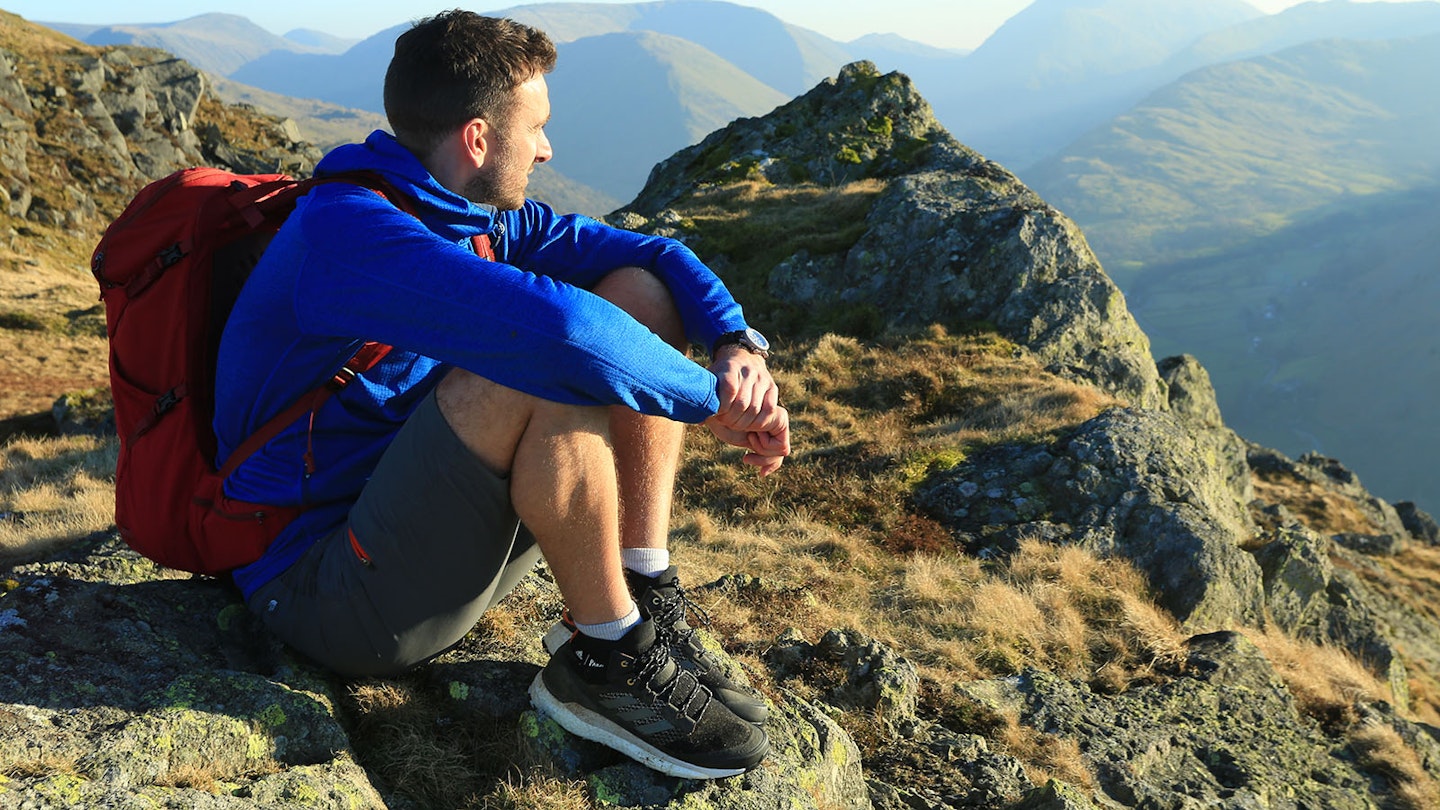
Chris Williams, James Forrest and our editor Oli Reed (above) tested and reviewed the lightweight walking boots recommended here. Chris trained as a journalist in New Zealand and has been working on Live For The Outdoors since 2021. James is based on the edge of the Lake District and has been one of our main gear testers for the last few years.
The hiking footwear we test undergoes thorough, real-world testing. As soon as they arrive with us, they get latched to one of our experienced gear testers, who immediately stomps off into the hills.
We consider myriad factors when testing and reviewing hiking footwear, from the obvious, such as comfort and performance, to the less obvious and intricate, such as sustainability.
Find out more about how we test gear HERE.
Best lightweight hiking boots reviewed:
Clearly what Scarpa has done with the Rush 2 Mid GTX is make a list of what would make the ideal high-performance lightweight boot, and has gone away and made it.
Sounds simple, but having tested countless pairs of lightweight walking boots, we've found it's harder than it appears because very few models hit the mark.
Scarpa hasn't been distracted by lightness at all costs with the Rush 2 Mid GTX. It tips the scales at just over 400g per boot, and there are some rivals that weigh well under 400g. But most of those options suffer from a lack of foot protection and durability.
The Rush 2 Mid GTX benefits from features such as a proper toecap and dual density midsole. You don't really notice the extra weight the Rush 2 Mid GTX has compared to some ultralight rivals, but you do notice those durability benefits.
Scarpa has used its own Presa sole on the Rush 2 Mid GTX and it's magnificent, excelling on dry surfaces while performing surprisingly well on wet and muddy terrain. The upper keeps water out thanks to a Gore-Tex Invisible Fit lining, which lighter and less restrictive than a regular Gore-Tex lining.
For all these plus points, the Rush 2 Mid GTX is quite pricey. The fit is also relatively narrow, meaning it won't suit everyone.
**Read our full Scarpa Rush 2 Mid GTX review
**
Check out the women's version here
Pros
- Very grippy
- Excellent agility
- More durable than many rivals
- Gore-Tex Invisible Fit
Cons
- Narrower fit won't suit all
- Little ankle support
| RRP: | £200 |
| Upper: | Synthetic w/ Gore-Tex Invisible Fit lining |
| Sole: | Scarpa Presa HIK-03 |
| Men's sizes: | EU 41 - 48 |
| Women's sizes: | EU 36 - 42 |
| Weight (per boot): | 415g / 14.63oz |
There's a lot to like about the Peakfreak II Mid, hence its popularity, especially in the US with its love affair with lightweight hiking boots.
First, of course, is the price, being noticeably lower than the other rivals here. But it's not like it's a huge downgrade in performance. We found the Peakfreak II Mid OutDry has excellent comfort (with a slightly wider fit than many European rivals) and impressive traction even in the wet.
We liked the squidgy midsole for shorter and faster walks, although it's not great for longer hikes. Columbia's proprietary waterproof lining (OutDry) is also very reliable, and is bonded directly to the upper, which makes the boot more breathable than many waterproof rivals.
However, there are some downsides. One is durability. The Peakfreak II Mid OutDry doesn't offer much in terms of longevity, with the upper prone to faster wear than competitors like the Inov-8 Roclite G345 GTX V2 and Oboz Katabatic Mid Waterproof. Nor does it have much ankle support.
Check out the women's version here
Pros
- Great for fast hikes
- Reliable and breathable waterproofing
- Impressive traction
Cons
- Not very tough
- Poor ankle support
| RRP: | £75 / $70 |
| Upper: | Synthetic w/ OutDry waterproof lining |
| Sole: | Adapt Trax |
| Men's sizes: | UK 6 - 14 |
| Women's sizes: | UK 3 - 10 |
| Weight (per boot): | 441g / 15.56oz |
The main aim of Hoka's Anacapa Mid is to be as lightweight and breathable as possible, and the Anacapa hits the nail on the head. Aeriated materials are used throughout to allow as much air permeability as possible. The upper is made from 100% rPET engineered mesh knit for maximum ventilation, giving a nod also to sustainability in the recycled yarns.
At 366g per shoe (women's UK5.5), the Anacapa feels as agile as a trail running shoe, making this a great pick for hot-weather hikes and fast-packing fans. Similarities with our favourite Hoka running shoes continue with the striking extended heel, which we surmise is to help with stability but also makes slipping the boots on and off a breeze.
The most obvious similarity is seen in the outsole though, the Vibram Megagrip rubber, the same lightweight and grippy design seen in some of the best trail running shoes. We felt as at home skipping across rocky trails as squelching through soft mud. If you're really a fan of the muddy stuff, then an extra few bob gets you the Gore-Tex version.
The uber-soft and comfortable hiking experience is largely thanks to the lateral Ariaprene collar, which wraps gently around the ankle, offering both support and cushioning. The EVA foam midsole set at a 6mm drop offers a standard level of arch support, which suited us to a T.
**We reviewed the Breeze Low here, which is the same but with less ankle support.
**
Check out the women's version here
Pros
- Lightweight and breathable
- Super comfy
- Handy quick-lace system
Cons
- Won't keep water out
- Pretty aesthetic gets grubby quickly
| RRP: | £160 / £170 |
| Upper: | Recycled synthetic |
| Sole: | Vibram Megagrip w/ 5mm lugs |
| Men's sizes: | UK 6.5 - 13.5 |
| Women's sizes: | UK 3.5 - 9.5 |
| Weight (per boot): | 414g / 14.6oz |
La Sportiva has managed to keep footwear ingenuity constantly flowing from the northern Italian valley where it's based. We've seen it in its mountain boots and trail running shoes and now in this impressive pair of hillwalking boots.
The company calls the TX Hike Mid GTX a fast hiking boot, and it is, but that undersells its versatility a bit. It is indeed light (435g per boot), flexible and breathable enough for fast hiking. But it has the best ankle support and foot protection of all the contenders here.
Moreover, the relatively deep heel breast and widely-spaced lugs also make it the best at dealing with steep, soft ground and mud, should you encounter any. If you're after a lightweight hillwalking boot, you can wear basically year-round, this is it.
You'll also be pleased to know there are a lot of recycled materials used here. The upper, Gore-Tex membrane and laces are all recycled; the outsole uses some recycled content, as does the footbed.
Read our La Sportiva TX Hike Mid GTX First Look review
Check out the women's version here
Pros
- Best ankle support on test
- Best soft ground grip on test
- Uses plenty of recycled material
Cons
- Others are even better for agility
| RRP: | £204.99 |
| Upper: | Recycled synthetic w/ Gore-Tex lining (recycled and bluesign-approved) |
| Sole: | Vibram Eco Step EVO (30% recycled) w/ 5mm lugs |
| Men's sizes: | UK 5 - 14.5 |
| Women's sizes: | UK 3.5 - 9 |
| Weight (per boot): | 435g / 15.34oz |
While the lightweight hiking boot category has grown profusely over the last decade, the focus on gripping over harder surfaces has frustrated many British hikers who need something that can handle the almost perpetually moist terrain of the UK.
This is why Inov8 has become so popular. It pairs lightweight construction with aggressive traction to cope with mud and slippery surfaces. Its Roclite Mid GTX is more of the same, but it features a wider fit than its predecessors and we love it.
Comfort is fantastic, that wide fit lets the foot sit naturally; underfoot there is ample cushioning, likewise around the heel (although there isn't much structured support). And the 6mm lugs are at home on British hillsides. On test, the only other boot that was as capable as the Inov8 boot in this regard was the more expensive La Sportive TX Hike Mid GTX.
We were happy to see that Inov8 is making meaningful sustainability progress too with the launch of Renov8, a project that repairs, refurbishes, resells, and recycles Inov8s gear.
Read our full Inov8 Roclite Mid GTX review
Check out the women's version here
Pros
- Best lightweight boot for mud and slippery terrain
- Wide fit is super comfortable
- Can be recycled through Inov8 take back scheme
Cons
- Little ankle support
| RRP: | £150 |
| Upper: | Synthetic w/ Gore-Tex lining |
| Sole: | Inov8 STICKYGRIP w/ 6mm lugs |
| Men's sizes: | UK 7 - 14 |
| Women's sizes: | UK 4 - 8.5 |
| Weight (per boot): | 425g / 14.99oz |
The Scott Kinabalu 3 Mid Gore-Tex boots are designed to act as a hybrid between lightweight hiking boots and trail running shoes, which explains why there's a run shoe of the same name.
They feature a ripstop mesh upper with thermoplastic polyurethane overlays, providing a nice combination of flexibility and decent durability. Meanwhile, the Gore-Tex membrane ensures reliable waterproofing, keeping feet dry in wet conditions.
The midsole incorporates Scott's Kinetic Foam, offering a responsive and cushioned experience, complemented by an Evolved Rocker2 (ER2) platform for smooth transitions. The mid-cut means didn’t lend itself particularly well to long stretches of jogging, but short stints proved okay.
Weighing approximately 429g per boot (UK size 11), these boots are pretty lightweight, which helped contribute to an agile feel.
However, we did struggle at times to fully lock the foot down, leading to some movement inside the boots, while the cushioning in the ankle sometimes felt a little obtrusive.
The outsole has 3.5mm lugs, suitable for hard-packed trails but less effective in very muddy terrain.
Priced around £195, they’re priced higher than many other lightweight boots, but overall they’re ideal for those seeking agility and comfort on well-defined trails.
**See our full Scott Kinabalu 3 Mid Gore-Tex boot review for more.
**
You can find the women's version here.
Pros
- Rocker and midsole deliver great ride
- Lightweight and agile
- Reliable waterproofing
- Comfortable and reasonably supportive
Cons
- Traction from 3.5mm lugs not ideal for muddy days
- Can be hard to get a secure fit
- Rather expensive
| RRP: | £195 |
| Weight (per boot): | 429g / 15.1oz (size UK11) |
| Upper: | Ripstop mesh and thermoplastic polyurethanes |
| Sole: | Scott's Versatile Traction outsole with 3.5mm lugs |
| Men's sizes: | UK 6-13 |
| Women's sizes: | UK 3-8.5 |
With an athletic fit and aggressive, low-profile lugs, this latest offering from Keen is all about hiking fast on hard packed ground. The comfy and nimble Zionic boot has thoroughly impressed us.
In keeping with Keen's design philosophy, these boots have a durable and spacious toe box, but the upper tightens right up around the midfoot, resulting in a precise and supportive fit. This, combined with the solid ankle locking, feels excellent on the trail.
According to Keen, the Zionic is designed to fit against the contours of your foot, and while this worked a charm for our tester, we suspect it won't be perfect for everyone. Be cautious if you have high arches, though wide-footed walkers should be fine.
The sleeker upper design is a departure from the more traditional mesh in the NXIS EVO boot, the Zionic's predecessor. Here, TPU overlays ensure less mud and gunk cling to the material, as well as protecting the shoe from rain or stream crossings.
That said, these aren't our first pick for very wet conditions. The short lugs provide great ground contact and speed when its dry, but their omnidirectional design means they can be slippy if they hit wet rock, and they won't climb through sloppy mud as well as other boots. But, for fast 'n' light 3-season hiking, Keen have smashed it with the Zionic.
Read our full Keen Zionic Waterproof Hiking Boot review
Check out the women's version here
Pros
- Lightweight
- Bouncy underfoot
- Grippy
- More sustainable than many lightweight boots
Cons
- Midsole not as energetic as some rivals
| RRP: | £160 / $159.99 |
| Upper: | Recycled synthetic with TPU overlays w/ PFC-free KEEN.DRY lining |
| Sole: | KEEN outsole w/ 4mm lugs |
| Men's sizes: | UK 39.5 - 48 |
| Women's sizes: | UK 35 - 43 |
| Weight (per boot): | 437g / 15.41oz |
To create the Moab Speed 2 Mid GTX, Merrell has taken its much loved and best-selling midweight Moab walking boot and adapted it into a lightweight version. This means the Moab Speed 2 Mid GTX features a lightweight synthetic upper but still retains a reliable, grippy Vibram sole.
We found it a very comfortable boot to wear and use straight out of the box. And although some competitors provide better cushioning around the ankle, the Moab Speed 2 Mid GTX does offer superior ankle support than many.
We had no qualms with the Vibram sole, it gripped well over rock, dirt, and the well-placed lugs at the heel gave it better downhill traction than many rivals.
However, it's not an especially tough boot, even for a lightweight model. The toe gets a piece of reinforcing but isn't stiffened, and there is no protection along the flanks, only sections of exposed mesh that we think are vulnerable to scrapes.
Overall, this is a grippy, comfortable, and reasonably supportive boot that performs best when sticking to the tracks. Those wanting an option for scrambling, mountain use, or long distance trekking will need something tougher.
Read our full Merrell Moab Speed 2 Mid GTX review
Check out the women's version here
Pros
- Good fit and immediate comfort
- Gore-Tex lining
- Available in mid and low versions
- Versatile Vibram sole
Cons
- Susceptible to abrasion
- Outperformed by some rivals
| RRP: | £160 / $170 |
| Upper: | Partially recycled synthetic w/ Gore-Tex lining |
| Sole: | Vibram TC5+ w/ 4mm lugs |
| Men's sizes: | UK 6.5 - 14 |
| Women's sizes: | UK 2.5 - 8.5 |
| Weight (per boot): | 400g / 14.1oz |
Lightweight walking boots have many strengths but long term durability isn't one of them. The thin synthetic uppers often wear out much faster than leather or heavier, reinforced synthetic.
With its Katabatic line, Oboz wants to address the durability issue while keeping the low weight.
Has it worked? We think it has. The Oboz Katabatic Mid Waterproof still isn't as tough as its heavyweight counterparts, but it is a noticeable improvement. The upper feels stronger and has reinforced TPU overlays in high wear areas.
Overall comfort is excellent and immediate. The ankle cuff is well padded; Oboz's B.DRY lining is very reliable (the Katabatic range can be had with or without a waterproof liner); and the midsole offers decent underfoot protection, although isn't espeically plush.
Like other brands such as Scarpa, Oboz prefers to use its own outsole designs. The one used on the Katabatic Mid Waterproof has good bite thanks to an array of multi-directional lugs.
Additionally, lightweight boots don't have great eco credentials, but Oboz is better than many, being a certified B Corp and plants a tree for every pair of footwear it sells.
Read our full Oboz Katabatic Mid Waterproof review
Check out the women's version here
Pros
- Comfortable
- Waterproof and non-waterproof versions
- More durable than many lightweight boots
- Well-rounded performance
Cons
- Some rivals offer better value
- Some rivals are even lighter
| RRP: | £170 / $135 |
| Upper: | Synthetic w/ partially recycled B-DRY waterproof lining |
| Sole: | Oboz Trail Tread |
| Men's sizes: | UK 7 - 13 |
| Women's sizes: | UK 4 - 8.5 |
| Weight (per boot): | 433g / 15.27oz (UK 9) |
While these look like trendy trail shoes for wandering around city parks and easy trails, they are, in fact, incredibly capable lightweight hiking boots that can tackle Britain's highest peaks.
We've climbed Scafell Pike via the Brown Tongue and Hollow Stones route in the Terrex Skychaser Tech GTX. We found it coped with the rocky trails, loose scree, and stream crossings with ease. Whether wet or dry underfoot, the trail running-inspired lug pattern gripped very well.
The comfort of these boots is also very impressive. It feels spongy underfoot, plus nice padding around the ankle and, of course, the lightweight construction to keep you full of energy and agile.
For one of the world's largest clothing and apparel brands, Adidas does better than most of its large competitors regarding sustainability. In addition, the Terrex Skychaser Tech GTX uses recycled material in the upper, a bio-based midsole plate, and a PFC-free water-repellent treatment.
Read our full Adidas Terrex Skychaser Tech GTX review
Pros
- Excellent cushioning
- Superb comfort
- Good grip on a variety of terrain
- At the upper end of 'lightweight'
- Recycled materials in the upper
Cons
- Higher price than much of the competition
| RRP: | £160 / $180 |
| Upper: | Partially recycled mesh w/ Gore-Tex lining |
| Sole: | Stealth Hf rubber |
| Men's sizes: | UK 3.5 - 12.5 |
| Women's sizes: | Unisex |
| Weight (per boot): | 529g / 1lb 2.6oz |
If your primary demand in a lightweight walking boot is underfoot cushioning, look no further than Inov8's RocFly G 390 GTX.
Weighing in at 390g per boot, this is a very lightweight model, pairing Inov8's substantial G-FLY foam midsole to a featherweight upper with a Gore-Tex lining.
The lightness and spongy cushioning makes for a luxurious yet energetic ride. Predictably, however, there is a durability trade-off – the RocFly G 390 GTX is quite flimsy.
As with most lightweight walking boots, the outsole used on the RocFly G 390 GTX aims to provide traction over mixed terrain, rather than being a mudplugger or mountain scrambler like many heavier alternaitves. We certainly found the RocFly G 390 GTX grips well over any terrain that isn't too extreme.
Read our full Inov8 RocFly G 390 GTX review
Check out the women's version here
Pros
- Ultralight
- Very comfortable
- Mega cushioned
- Bouncy feel
Cons
- No rigidity
- Minimal support and protection
- Questionable long-term durability
| RRP: | £170 |
| Upper: | Textile w/ Gore-Tex lining |
| Sole: | Inov-8 G Grip w/ 4mm lugs |
| Men's sizes: | UK 6 - 13 |
| Women's sizes: | UK 3 - 8.5 |
| Weight (per boot): | 390g / 13.75oz |
We found the Salomon X Ultra 360 Edge Mid Gore-Tex has a lot in common with the Oboz Katabatic Mid Waterproof. It offers good comfort, versatile performance, and relatively high durability.
Many of you may be familiar with Salomon's X Ultra hiking footwear range – it's been a popular option for hikers for several years now. The X Ultra 360 Edge continues the X Ultra focus on low weight and high protection.
Underfoot is Salomon's excellent Contragrip outsole. We found it provides plenty of traction over mixed terrain, including slippery descents thanks to a heel brake.
The midsole protects the foot better than many rivals, and is great for big day hikes. We also like that the X Ultra 360 Edge is a bit better for more challenging mountain tracks than many lightweight boots because the upper gets a generous dose of TPU overlays for reinforcing the upper, including on high wear areas.
If you want a boot that's ultralight, there are better options around. But we think the X Ultra 360 Edge occupies a safer middle ground between lightness and durability.
Read our full Salomon X Ultra 360 Edge Mid Gore-Tex review
Check out the women's version here
Pros
- Uses some recycled materials
- Competitive price
- Comfortable
- Good underfoot protection
Cons
- Not exceptionally technical
- Some rivals are even lighter
| RRP: | £155 / $170 |
| Upper: | Partially recycled synthetic w/ Gore-Tex lining |
| Sole: | Salomon Contragrip All-Terrain |
| Men's sizes: | UK 6.5 - 13.5 |
| Women's sizes: | UK 3.5 - 9.5 |
| Weight (per boot): | 429g / 15.13oz (UK 9) |
This boot is notable amongst its rivals for featuring a stretchy knitted collar in place of a traditional tongue. Critics have been quick to accuse the VC22 Mid GTX of being very hard or impossible to put on as a result.
We found that, although the VC22 Mid GTX isn't as easy to put on as a boot with a regular tongue, it's not that bad if you loosen the laces properly. And it's very comfy when you're wearing it. That knitted collar is very effective at keeping grit out too.
In terms of fit and performance, the VC22 Mid GTX is an impressive all-rounder, thanks to a roomy toebox, reliable Gore-Tex liner, and Vibram sole that delivers traction over mixed terrain.
Relative durability is a strong suit with the VC22 Mid GTX too. It's more hard-wearing than some thanks to a TPU strip around the base of the upper and stiffened toecap to fend of abrasion and scrapes.
Read our full Berghaus VC22 Mid GTX review
Check out the women's version here
Pros
- Comfortable fit
- Durable for a lightweight boot
- Versatile performance
- Good waterproofing
- Mid and Low versions available
Cons
- Knit collar makes it harder to get on
| RRP: | £170 / $230 |
| Upper: | Synthetic and TPU overlays w/ Gore-Tex lining |
| Sole: | OPTI-STUD Vibram |
| Men's sizes: | UK 7 - 12 |
| Women's sizes: | UK 4 - 8 |
| Weight (per boot): | 464g / 1lb 0.3oz |
How to choose a pair of lightweight walking boots
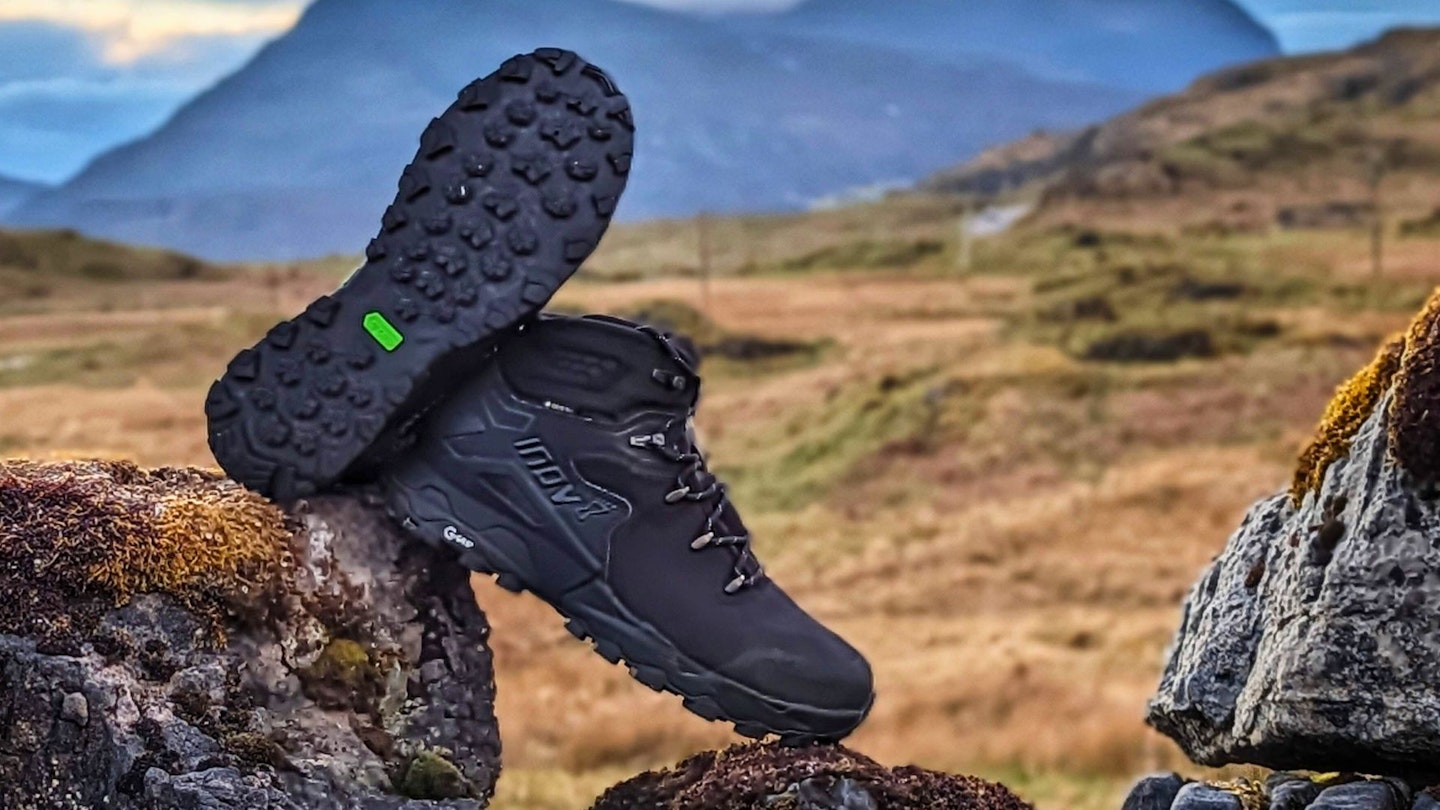
How should lightweight walking boots fit?
Fit for hiking footwear is very important. The magic mark you want is a firm enough fit so your feet don't slide around, causing blisters, while taking into account that your feet swell a bit when walking (or running). You want the heel to be cupped nicely and the forefoot to have ample room, encouraging splayed toes and a natural gait.
Wide feet or high arches need more room. Check there's adequate space around the forefoot. Too little causes pinching, too much allows the boot to roll around your foot on uneven ground.
Brands vary a lot in shoe shape and sizing so it's very helpful trying on hiking footwear before you buy.
Can I wear running shoes for hiking?
If you're considering going down that path, we suggest opting for trail running shoes in particular. These have the aggressive lugs needed to give you grip over uneven and slippery terrain. Road and general use running shoes don't have the right grip for hiking.
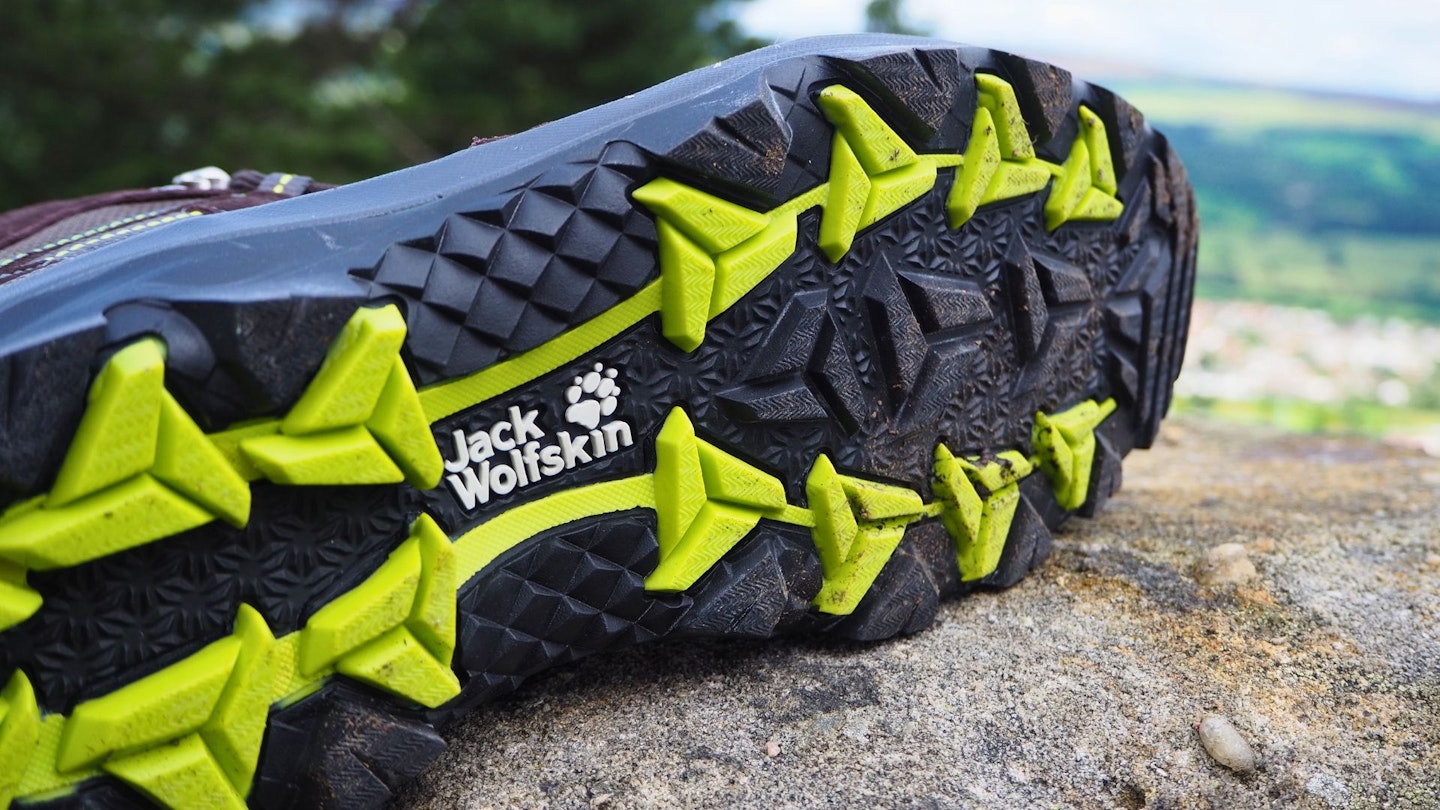
What kind of sole is best for lightweight walking boots?
Lightweight hiking footwear generally have lug patterns that favour mixed or hard-packed terrain. They're less suitable for mud and boggy ground and mountains.
The midsole provides cushioning and stability. It is usually comprised of a stiff shank embedded in either EVA or PU, two different types of foam rubber. EVA offers lightweight cushioning but compresses over time. PU is heavier but more durable, resulting in a stiffer boot with a firmer feel underfoot.
What kind of upper should a lightweight hiking boot have?
Lightweight walking boots and hiking shoes typically employ a mix of suede or nubuck and fabric, mesh, or other synthetic materials. Some also eliminate stitching in favour of a welded construction to further reduce weight. A waterproof lining is often desirable but not essential if you're after the best breathability.
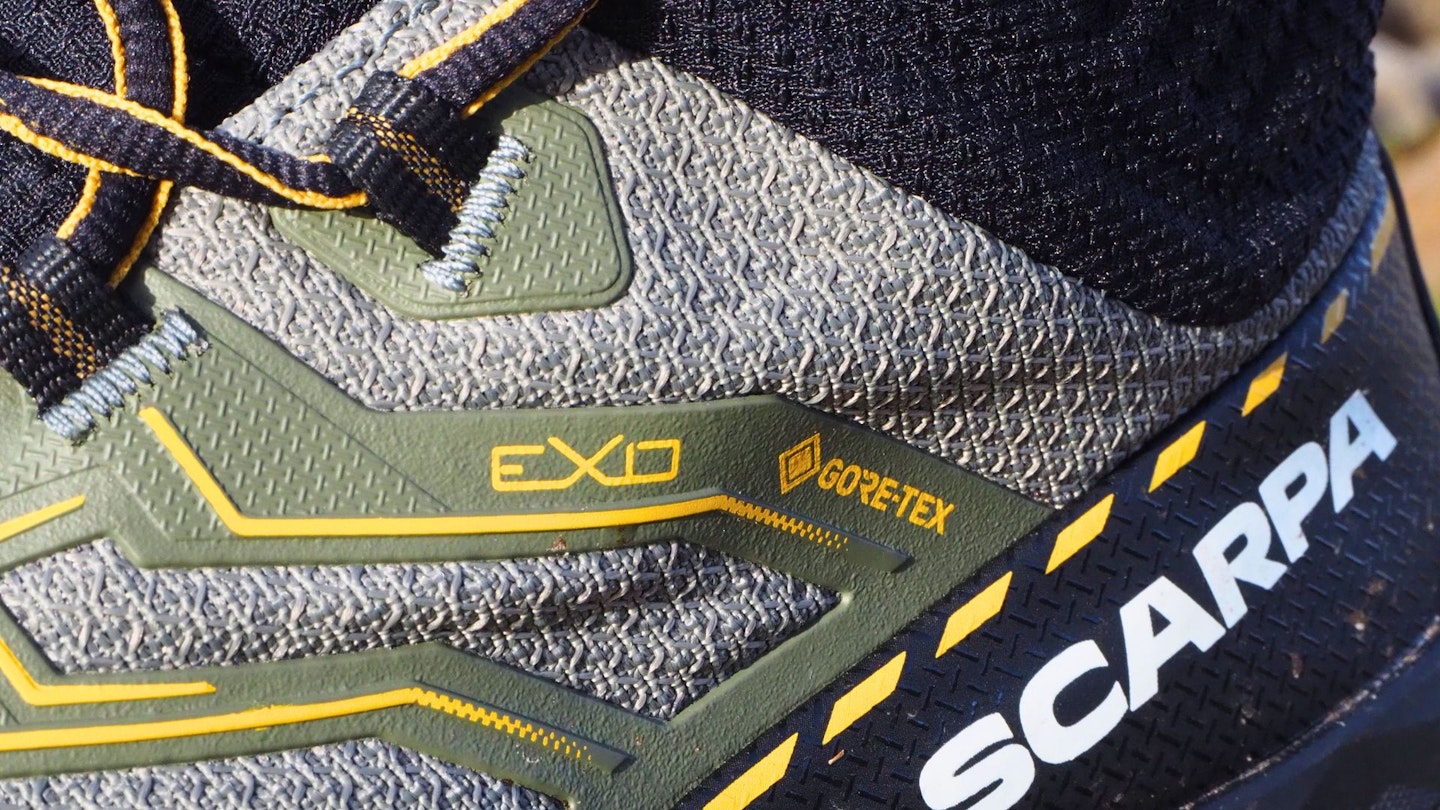
What are other important features to look for?
Toe bumper: A toe bumper provides additional durability and protection for the front of the foot, particularly on rocky ground.
Toe box: A broad toe box gives more space for the toes to splay when walking and more room if you're wearing thicker hiking socks. A narrow toe box allows for more precise footwork when moving fast on technical terrain.
Heel counter: This is the stiffened cup that encloses the heel, providing protection and support. A firm heel counter helps to lock the foot in place and offers additional stability.
Tongue: A padded tongue is essential for comfort, but also look for a gusseted or bellows tongue. This prevents water and debris from entering the boot or shoe.
Ankle cuff: A mid boot has a lower ankle cuff than a standard boot, which saves weight and gives a more flexible feel while still offering some support and protection. Trail shoes are cut like trainers for maximum freedom of movement.
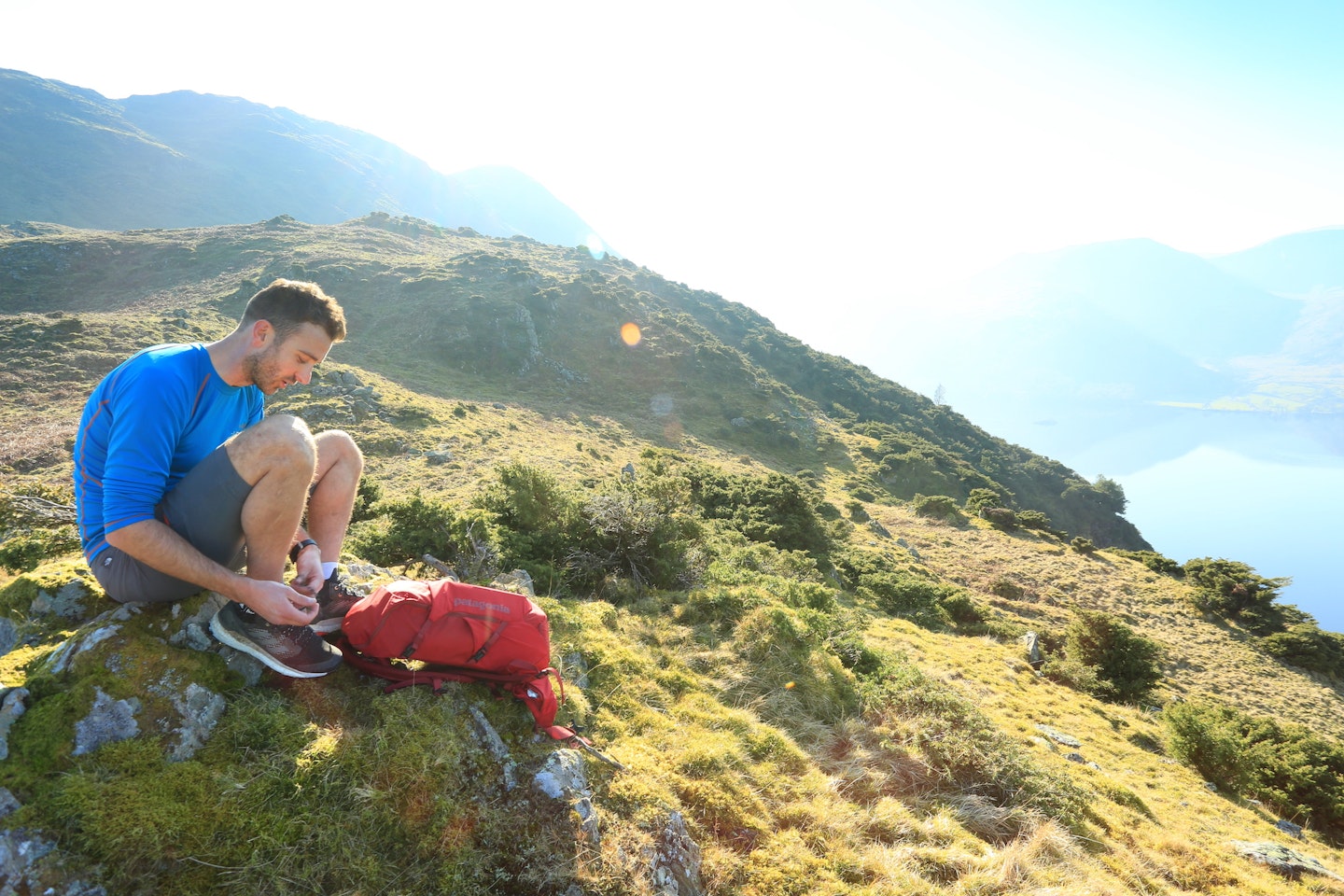
How do I clean lightweight walking boots?
The relationship between hiker and gear is of a reciprocal nature. Or at least it should be if the hiker expects longevity and performance from their gear. Footwear needs to be cared for properly if it is to last and continue to perform as intended.
Footwear care is easy, whether for synthetic fabric or leather. Use water-based and PFC-free footwear cleaners and proofers from Grangers or Nikwax:
Best footwear cleaner
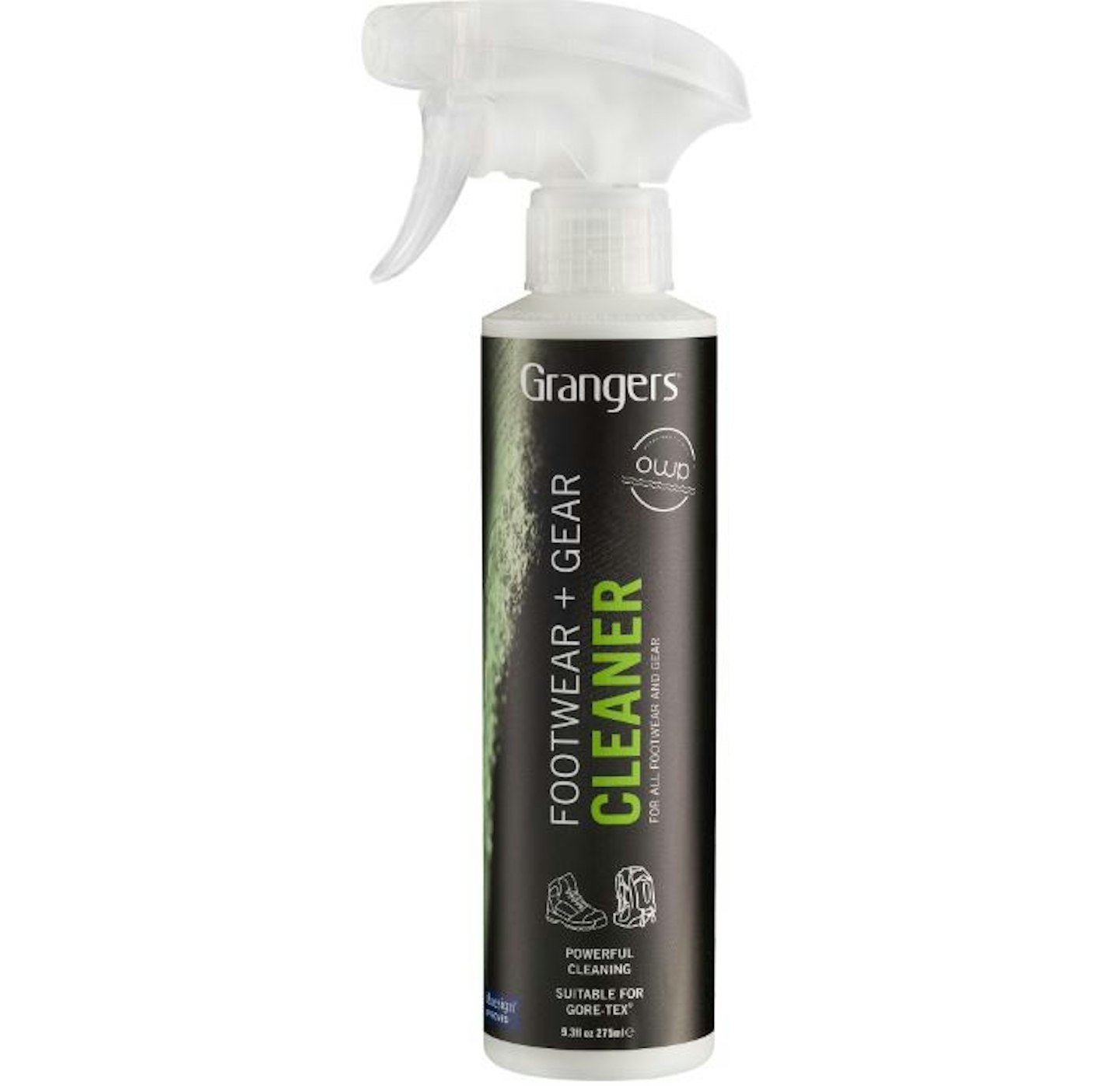
Eco-friendly, PFC-free footwear and gear spray-on spot cleaner. It's versatile and can be used on almost all your gear for those smaller stains and marks.
Best footwear reproofer
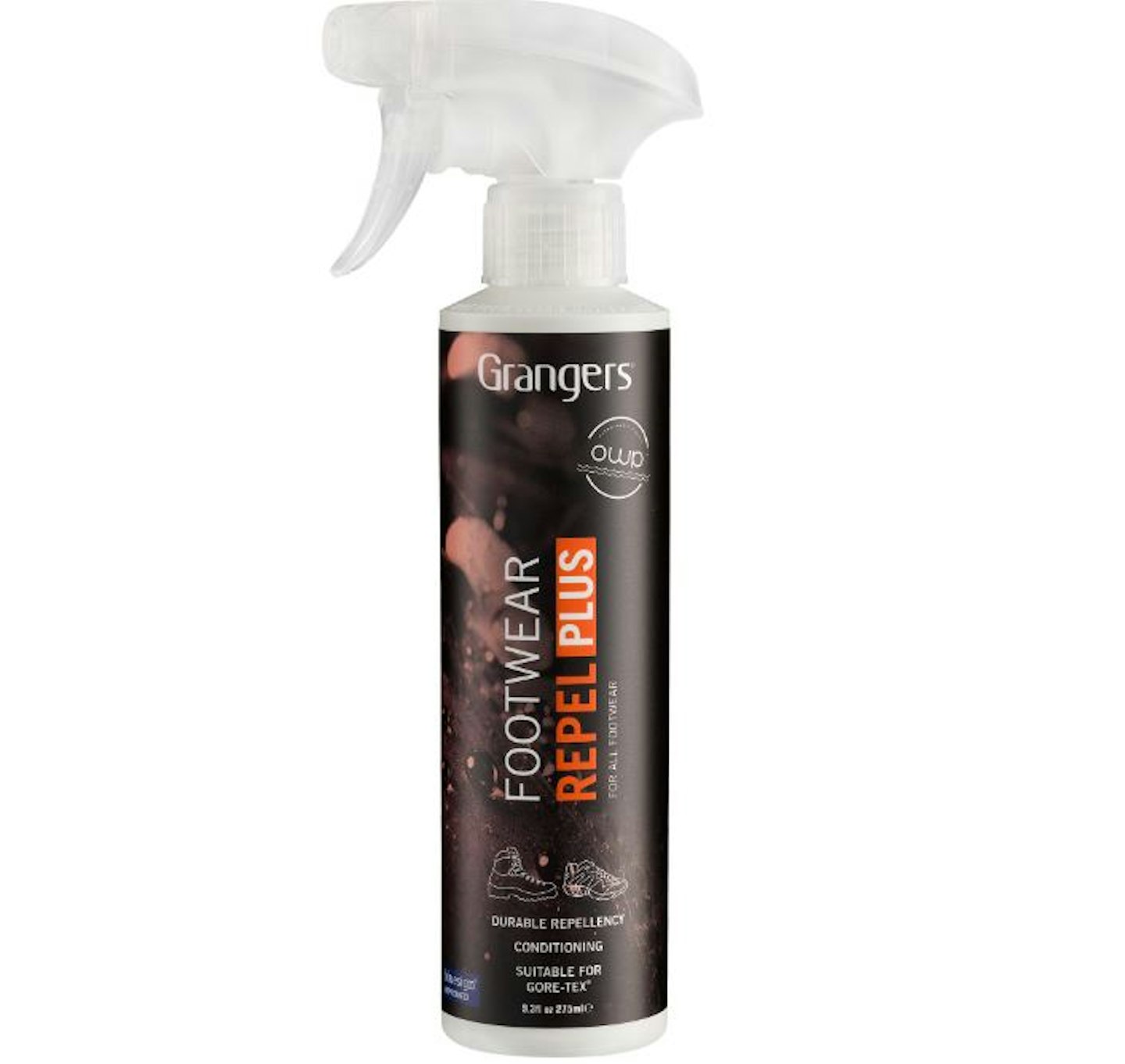
Eco-friendly, PFC-free footwear spray-on reproofer. The Footwear Repel Plus from Grangers is our pick for a cleaning spray that can cover a wide range of fabrics and membranes, including Gore-Tex.
Best footwear care kit
Leather and fabric footwear care kit including brush and dry bag. The sustainability credentials on this care kit are great, and the included dry bag becomes a big help on multi-day hikes or camping trips.
About the author
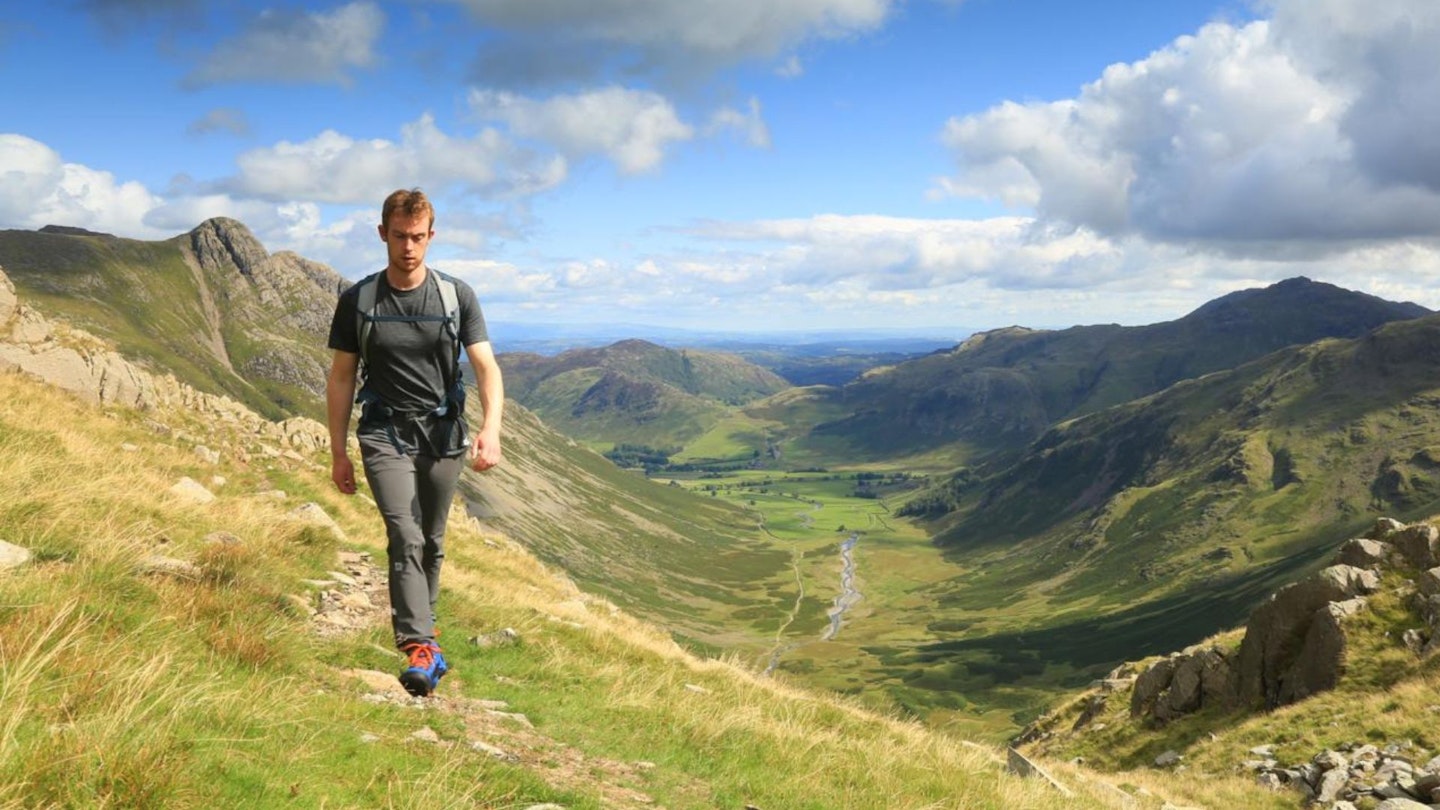
Chris Williams is LFTO's Senior Writer. He has worked both as a journalist in New Zealand and for outdoor gear brands and has extensive knowledge and experience using and testing outdoor and camping products. Chris has been working on Live For The Outdoors since 2021.
